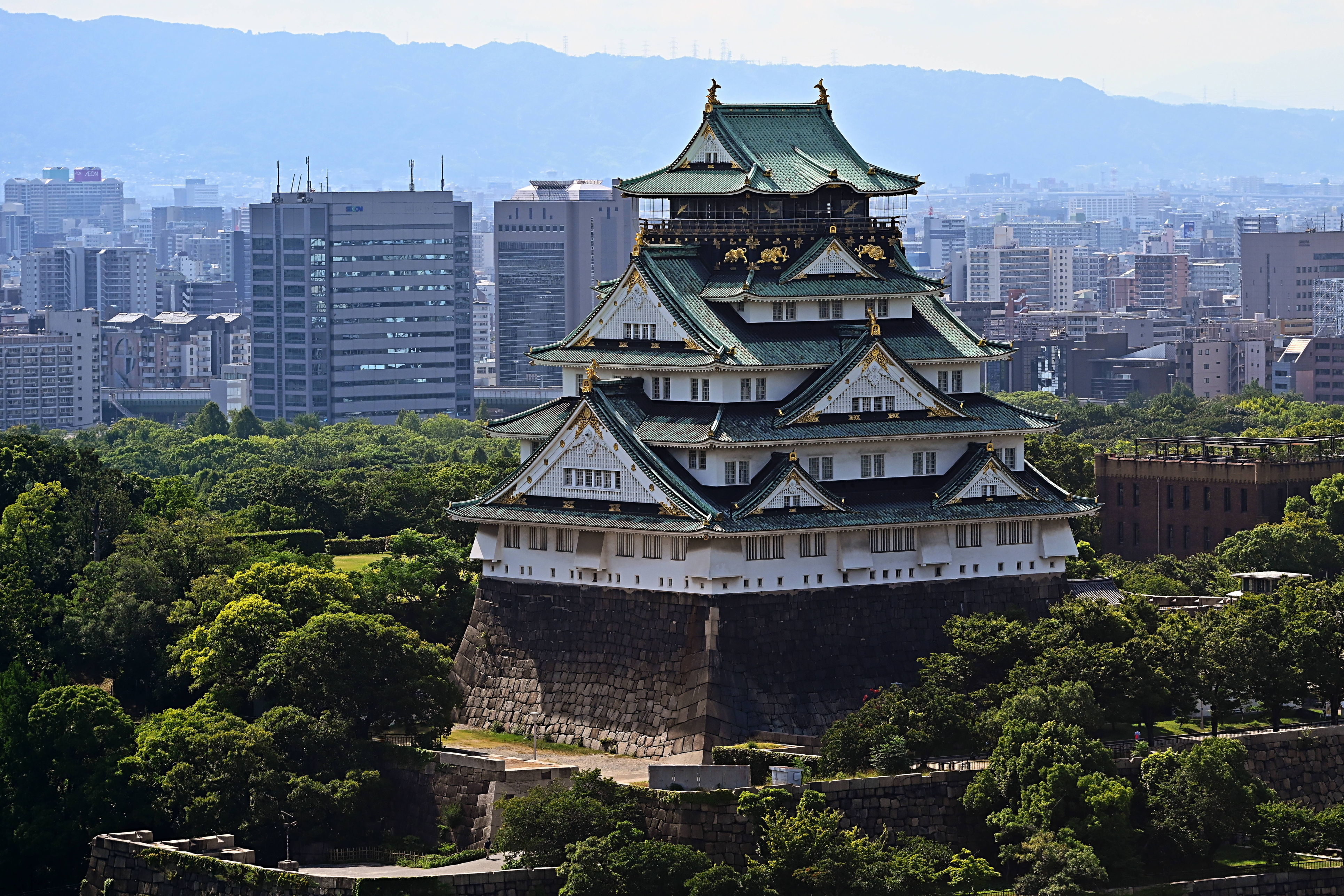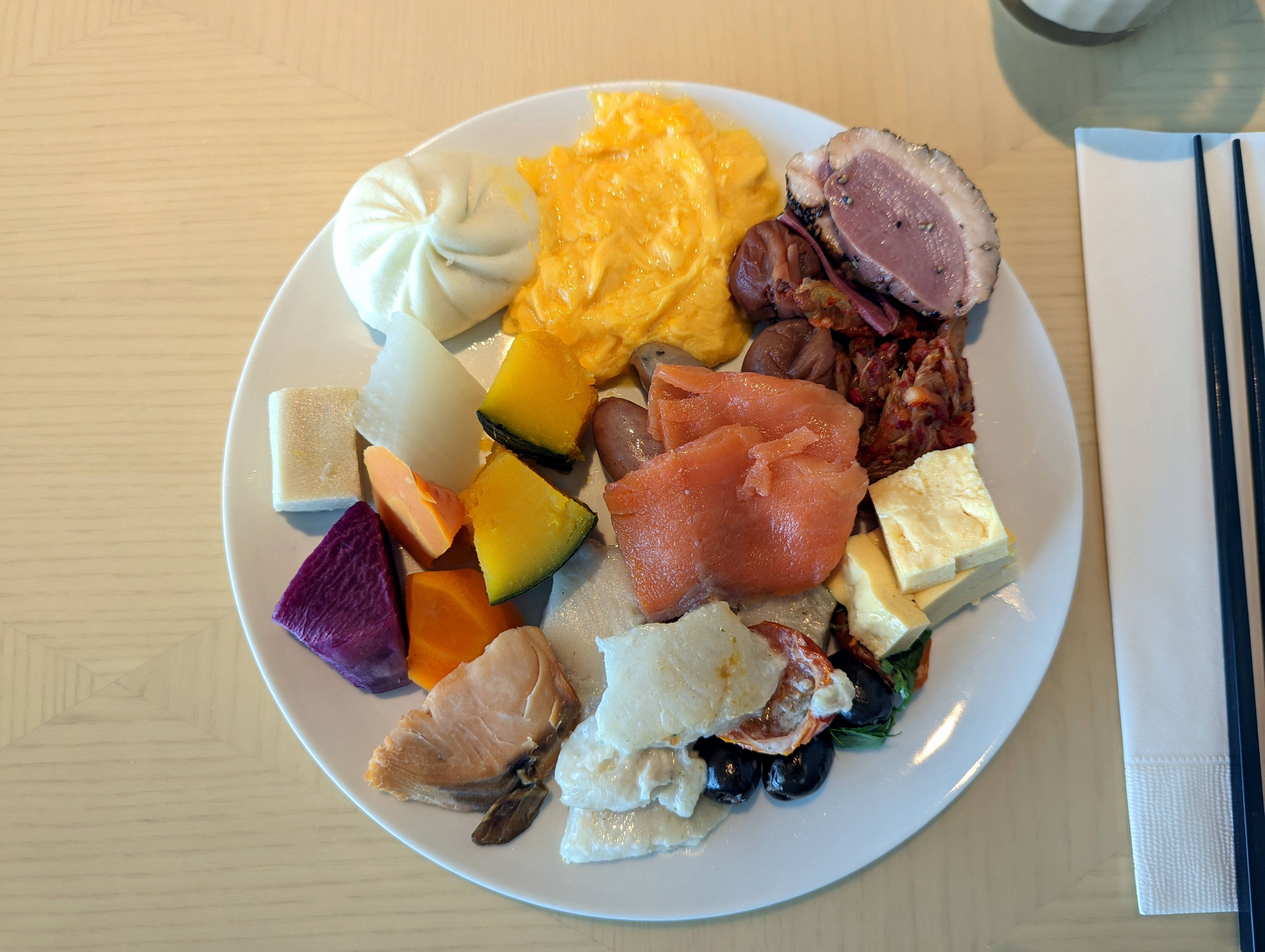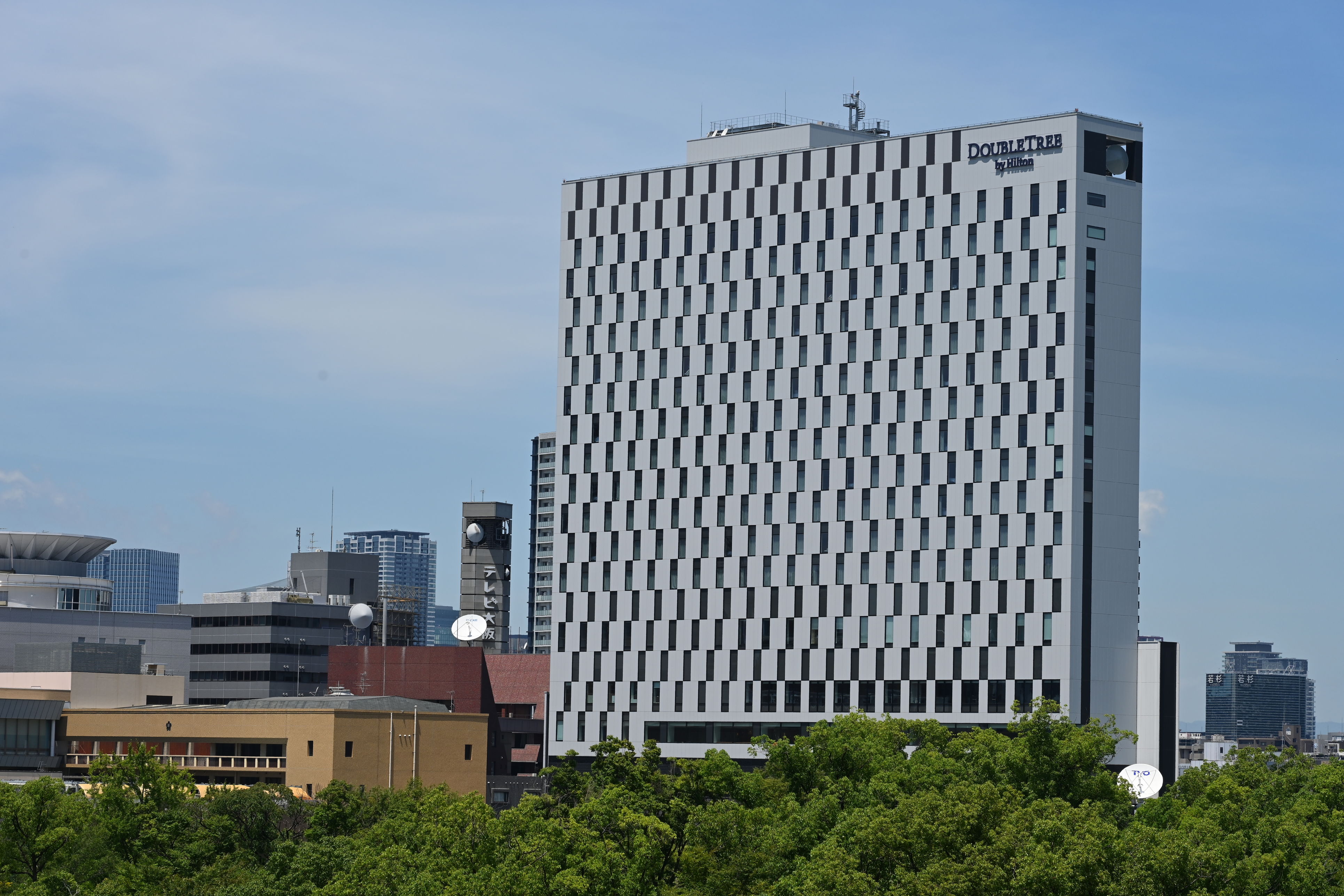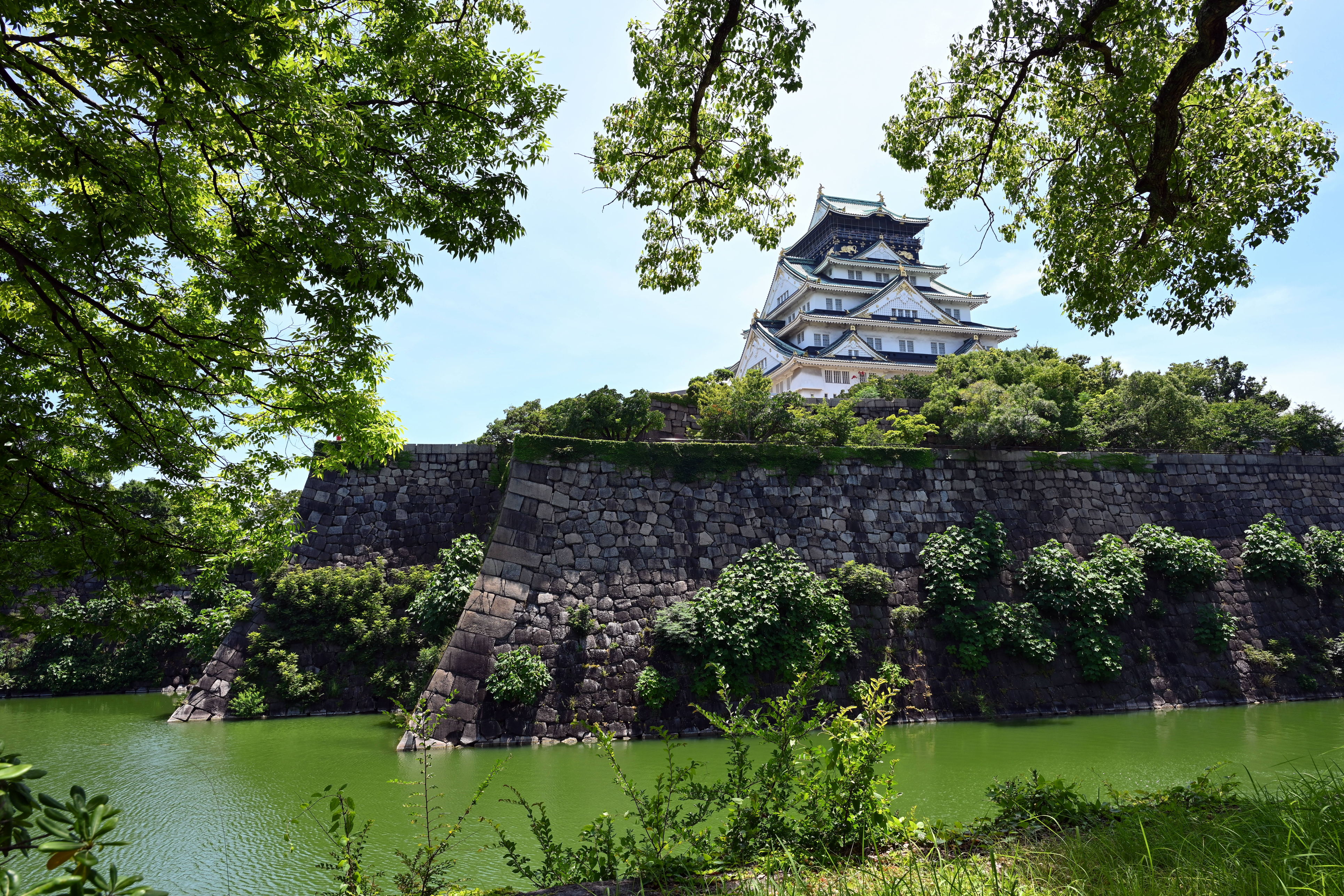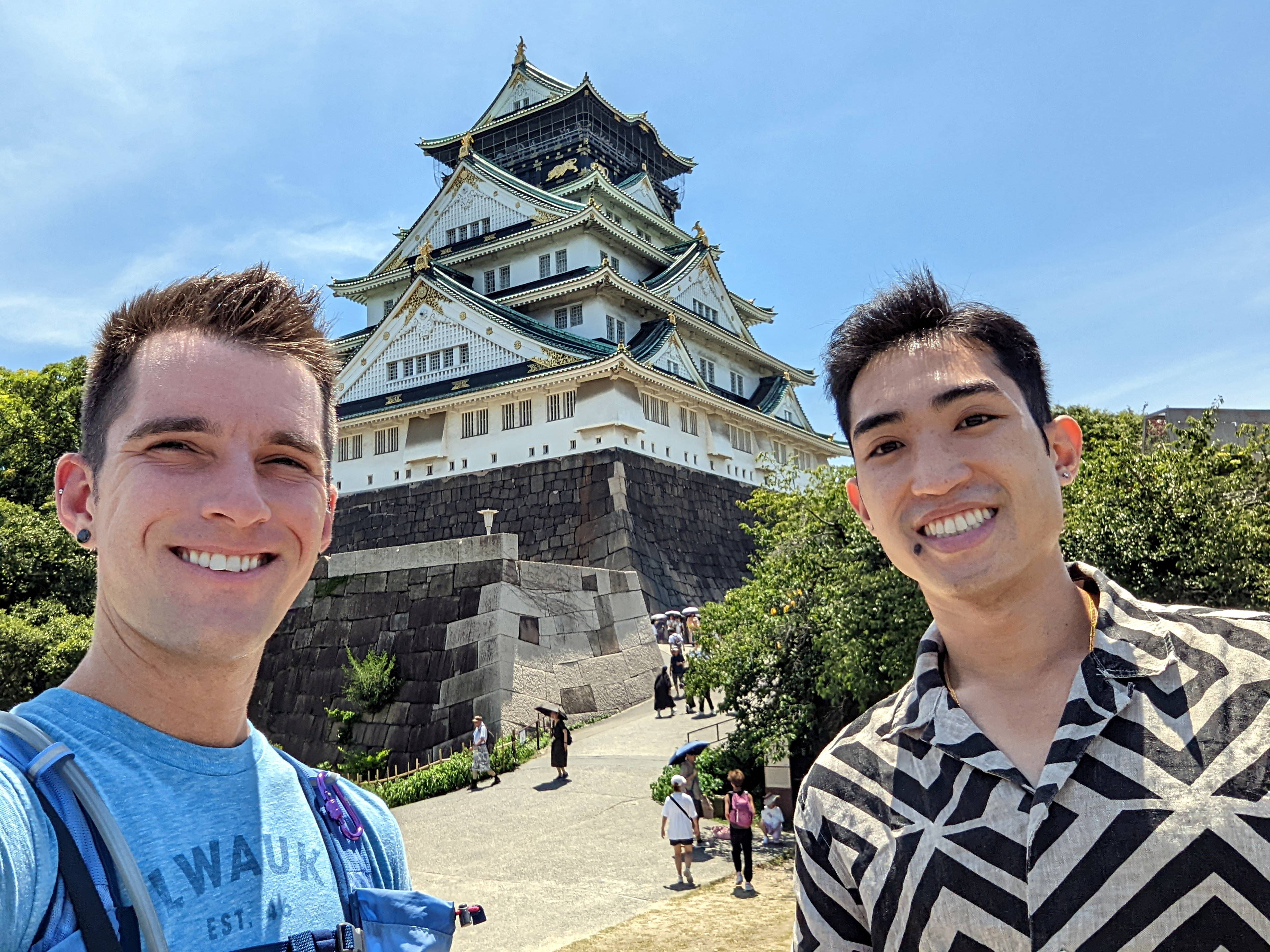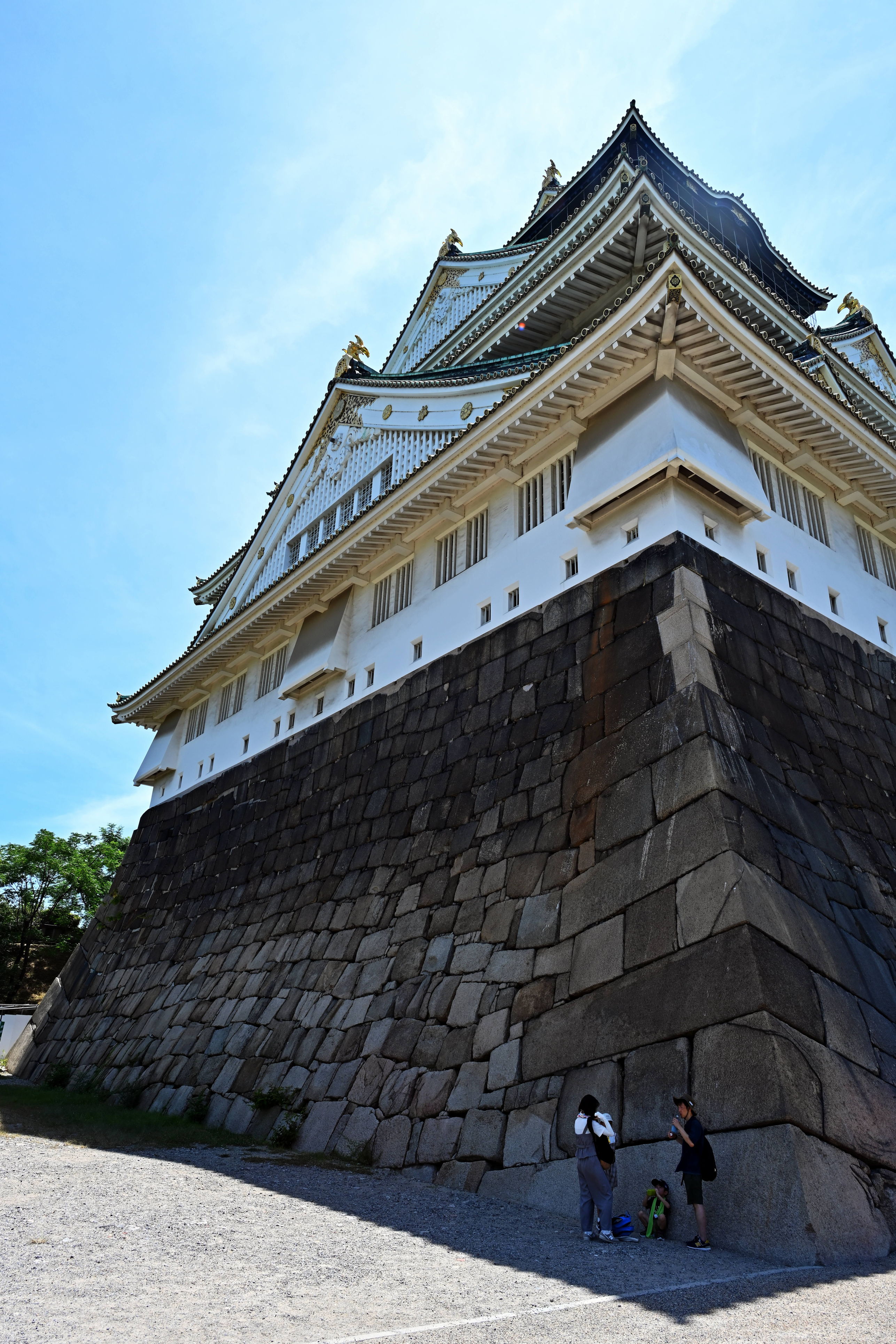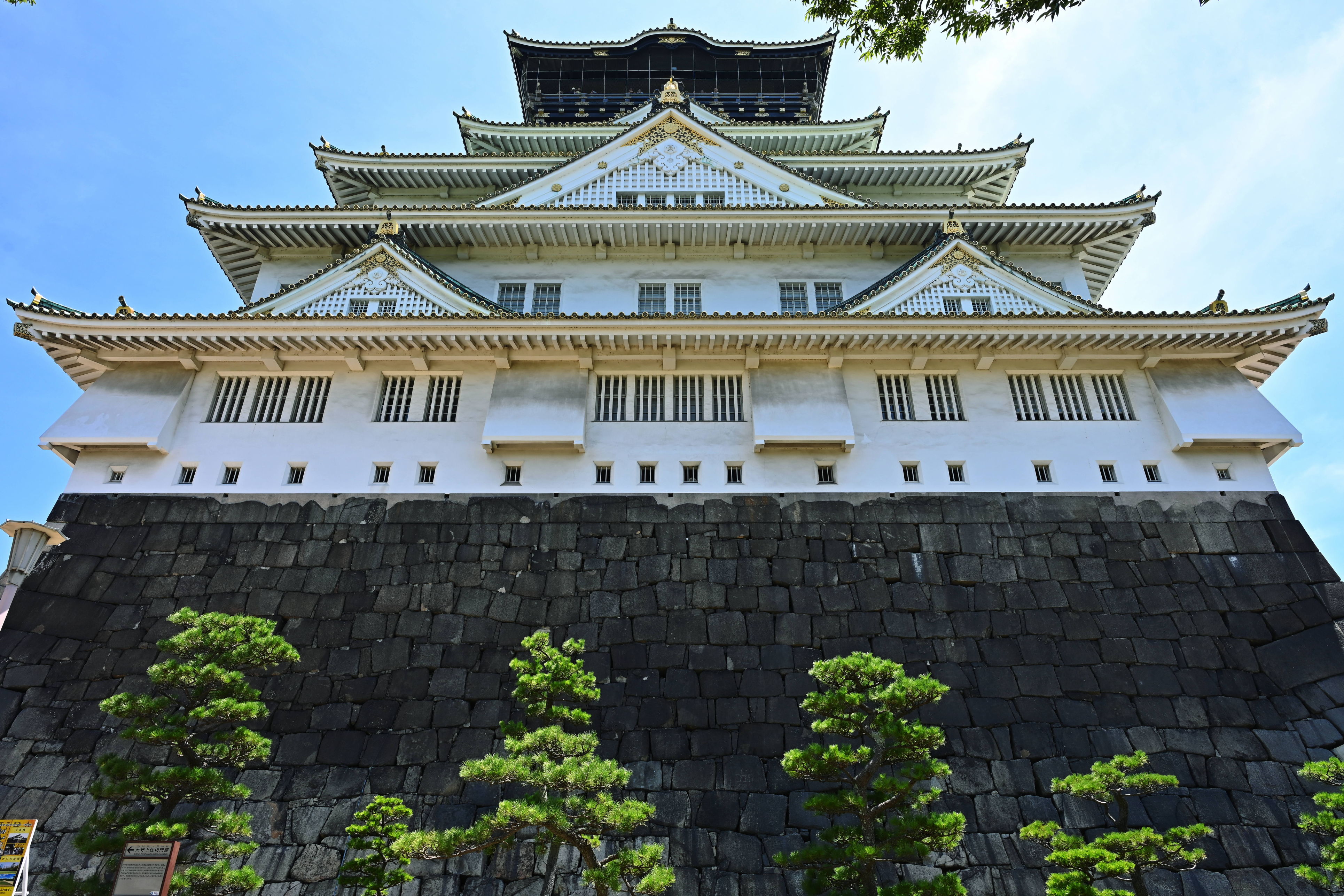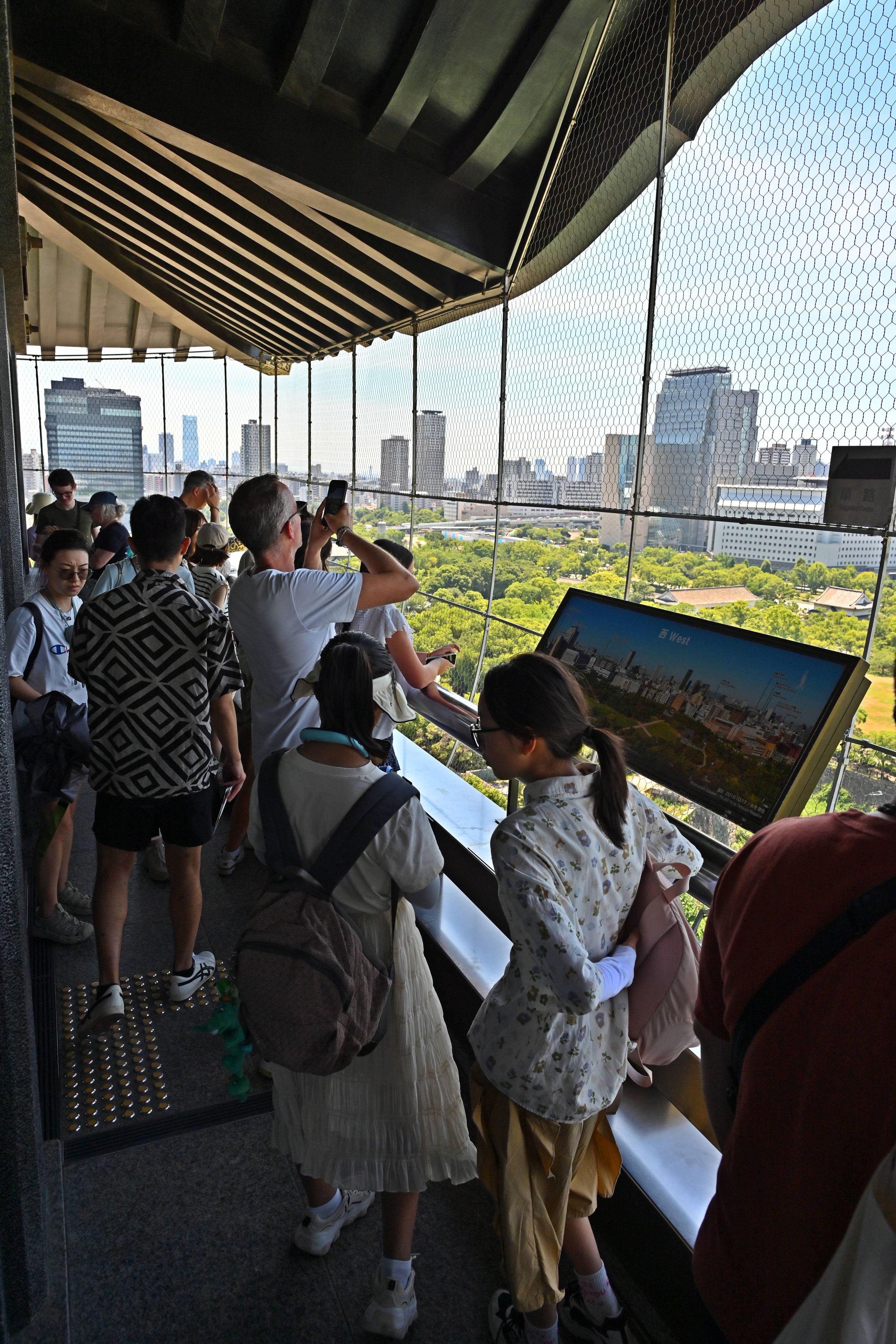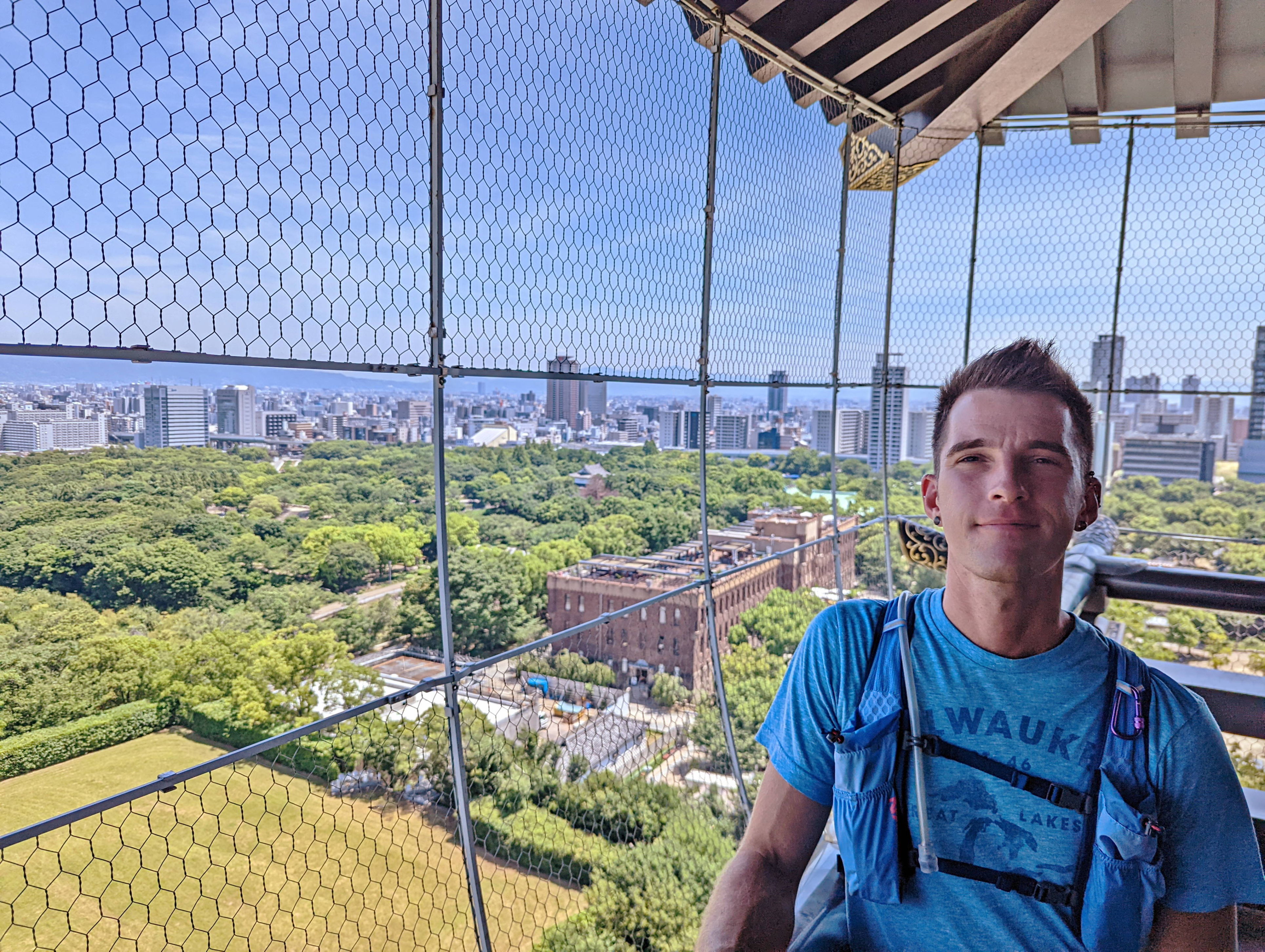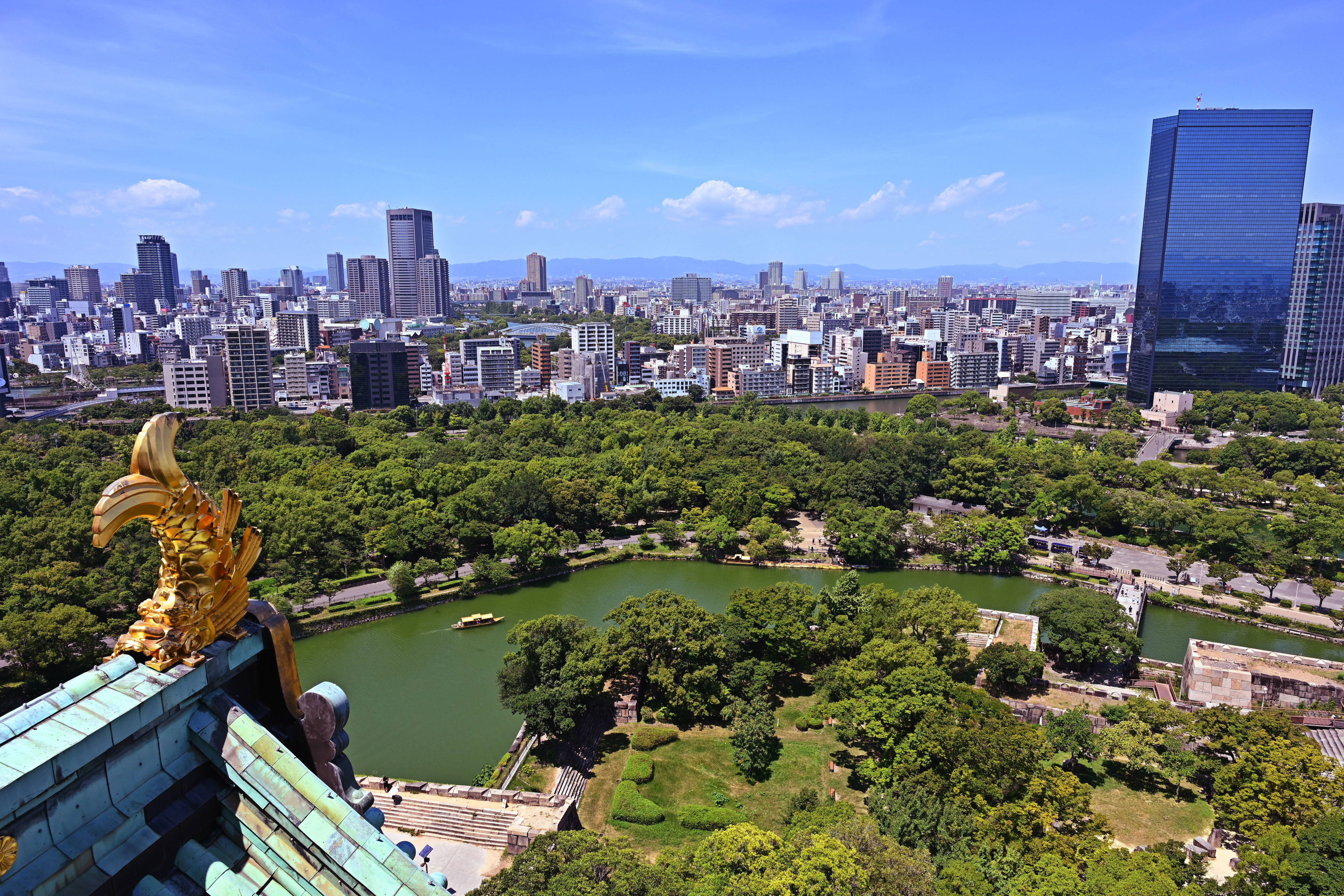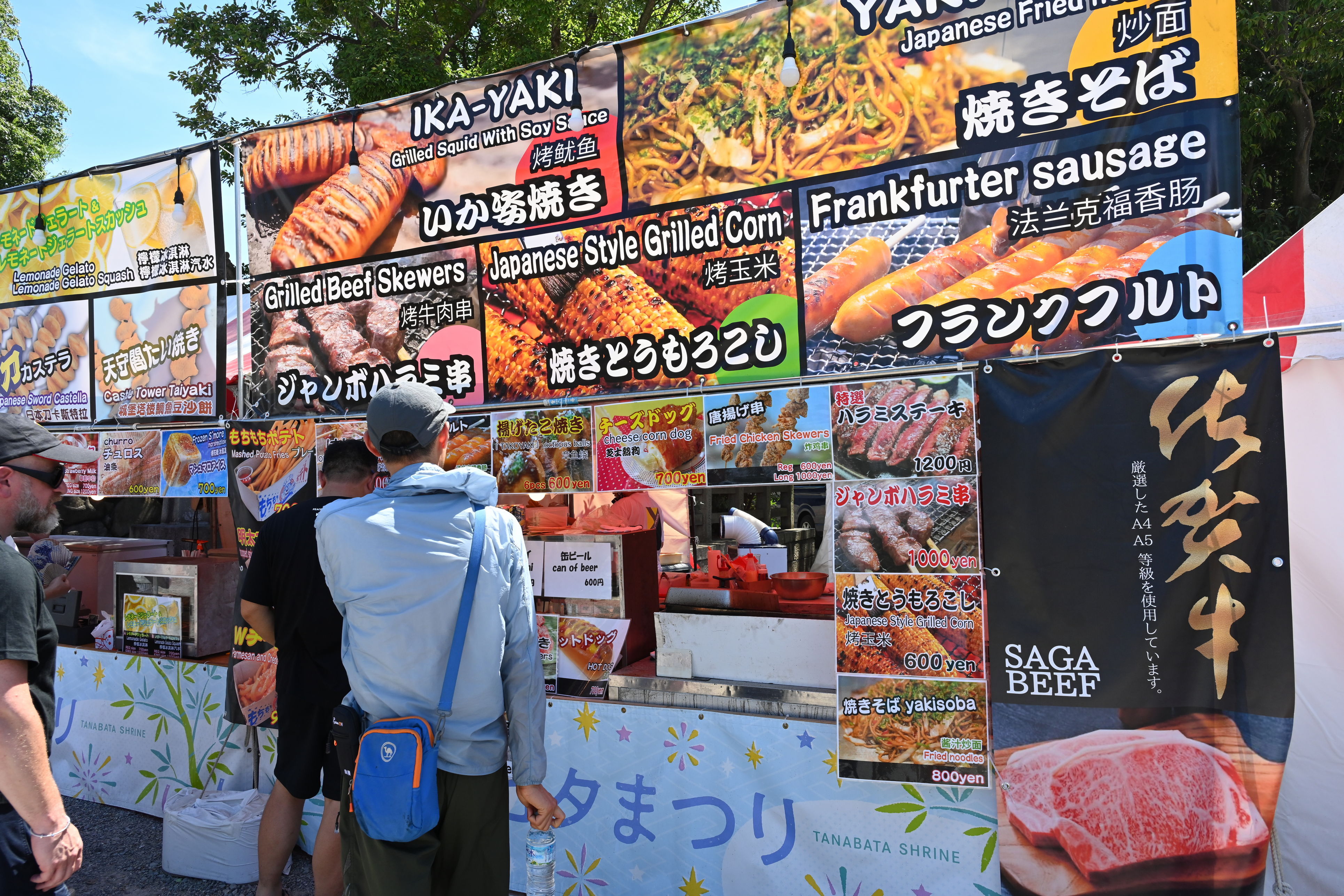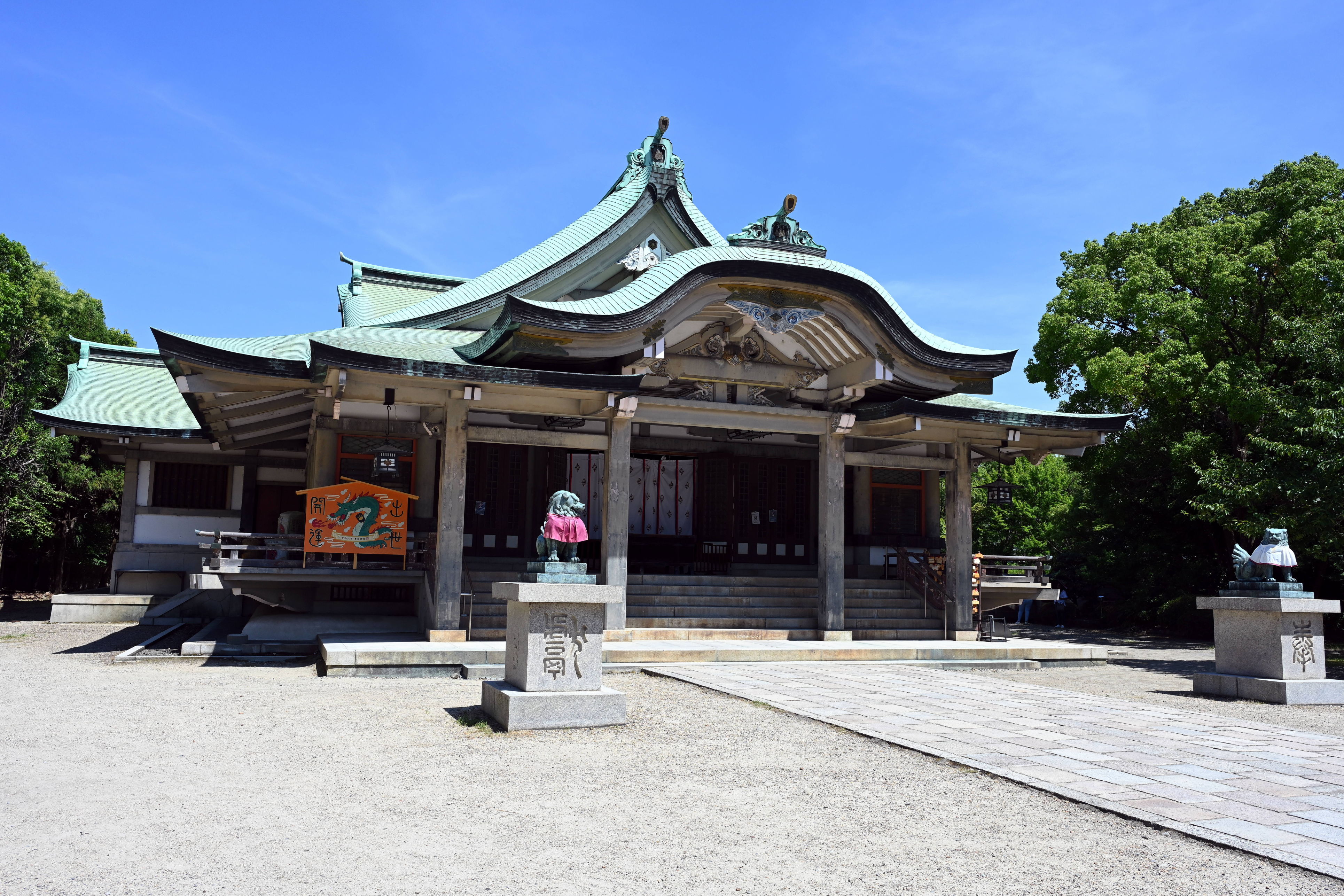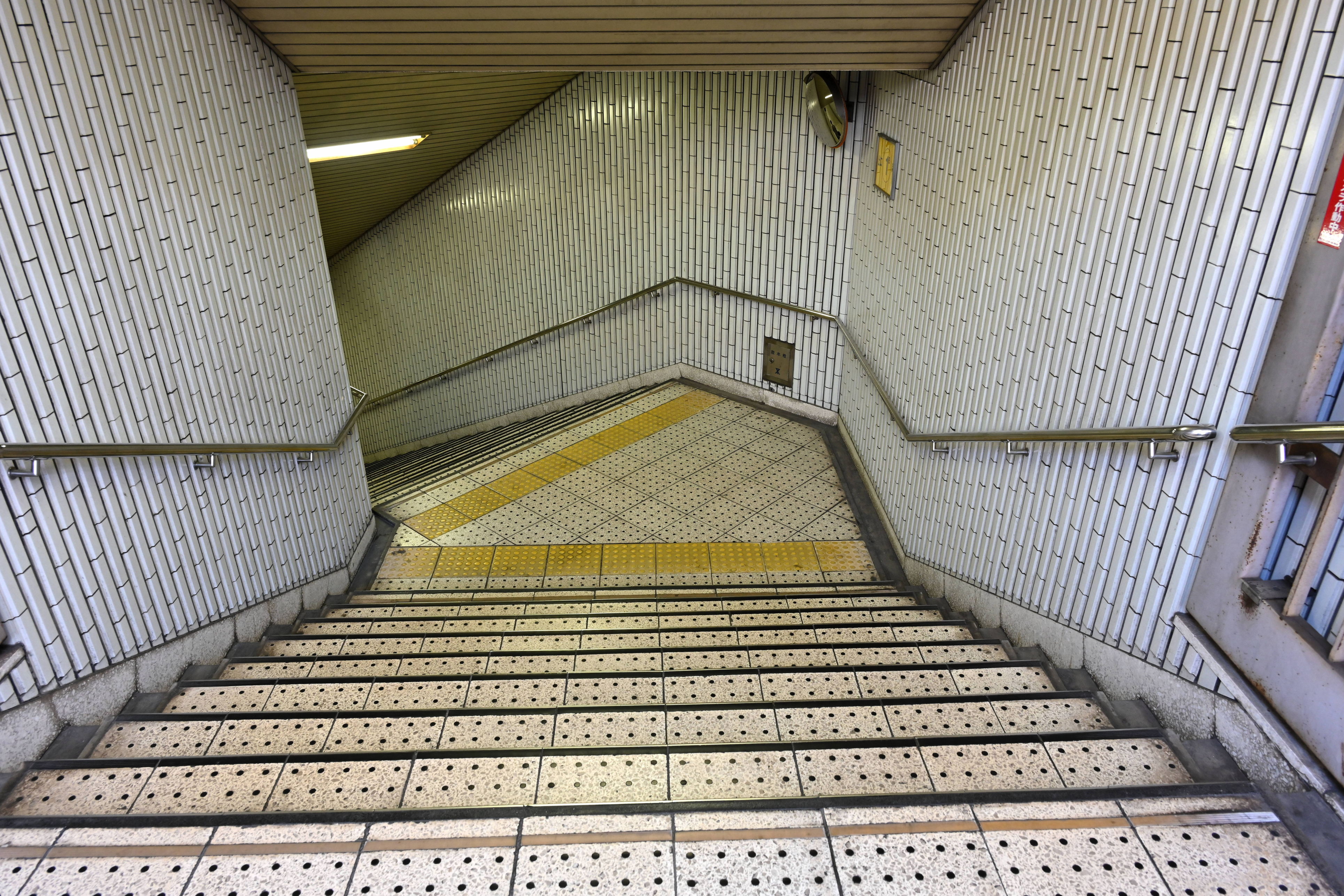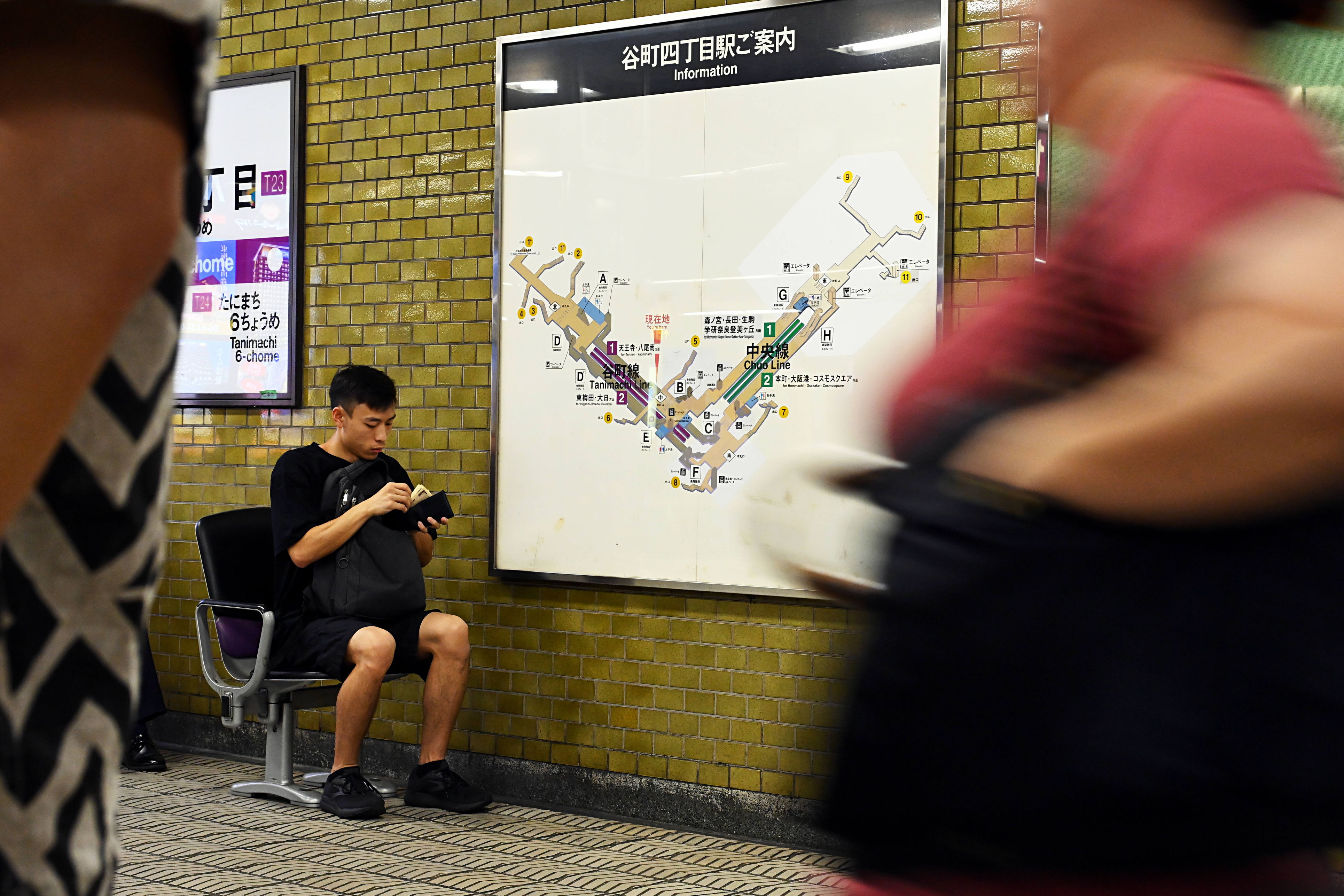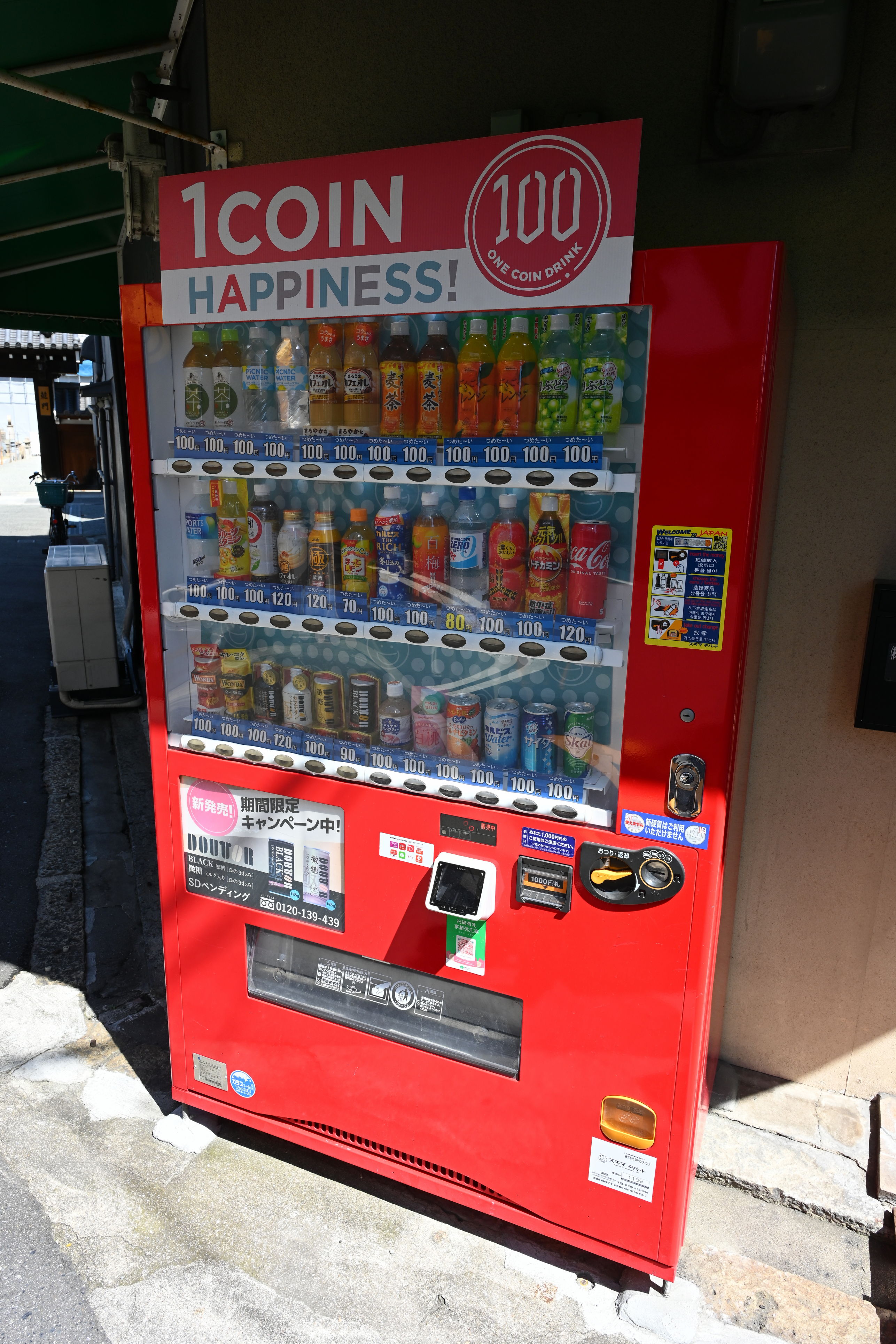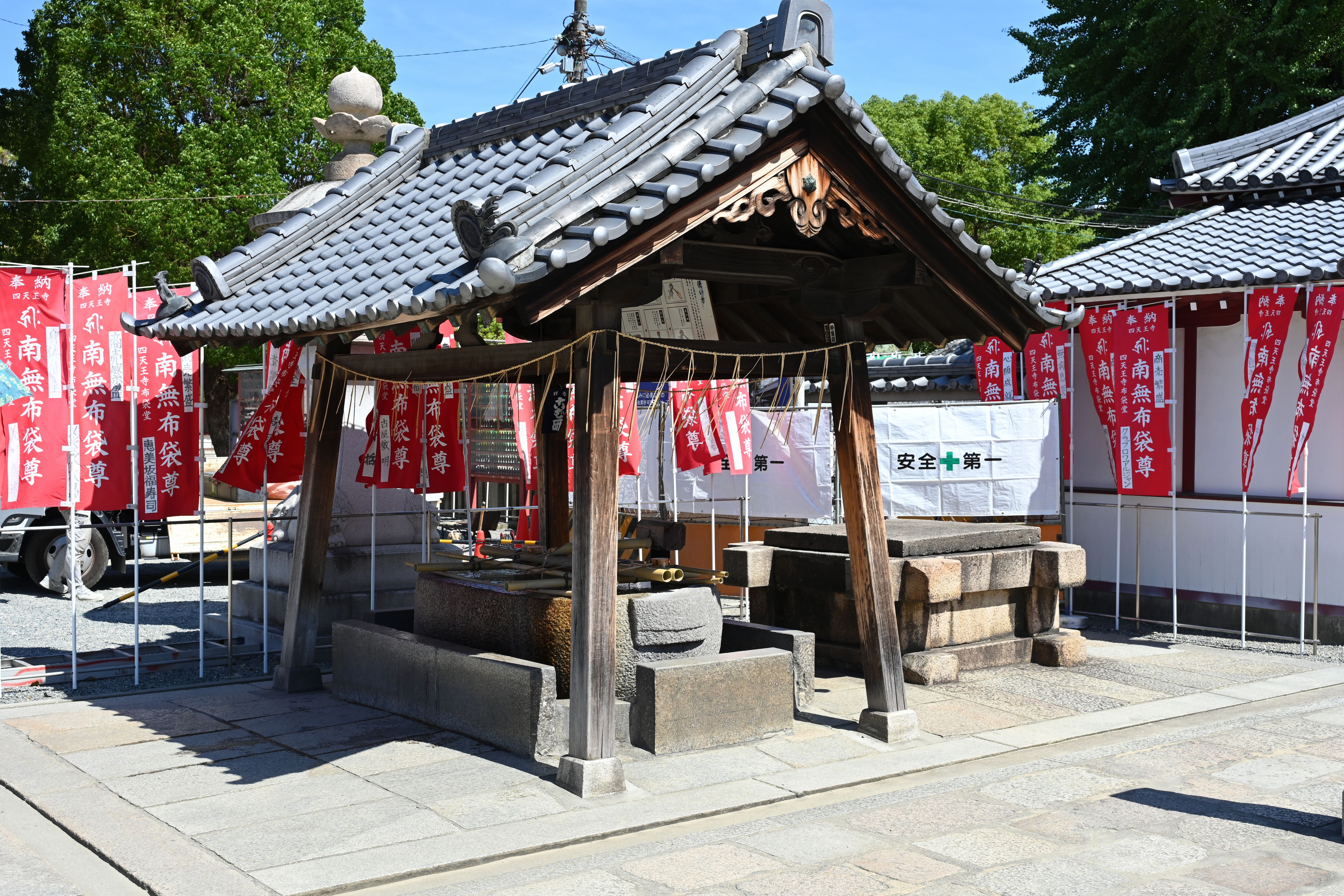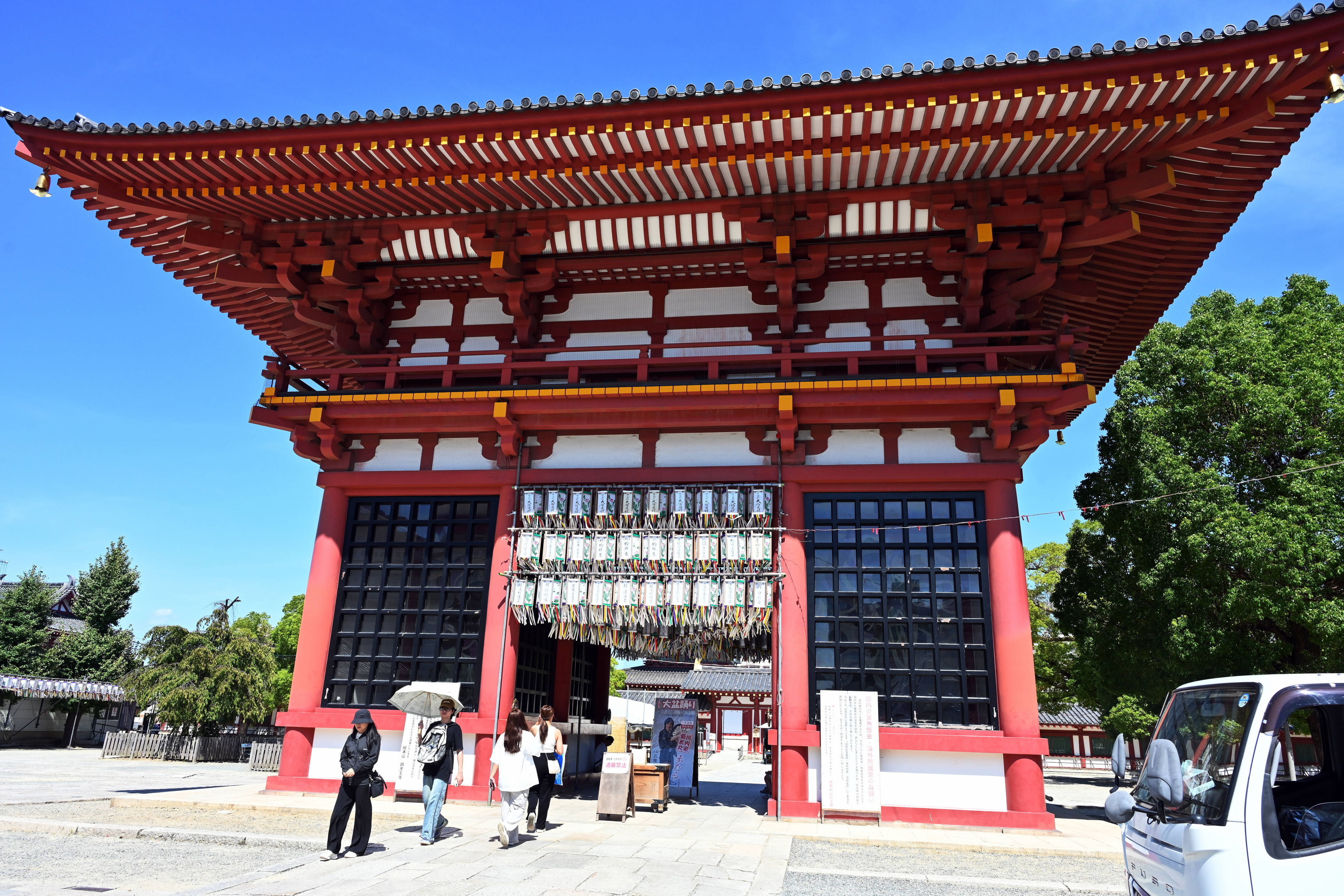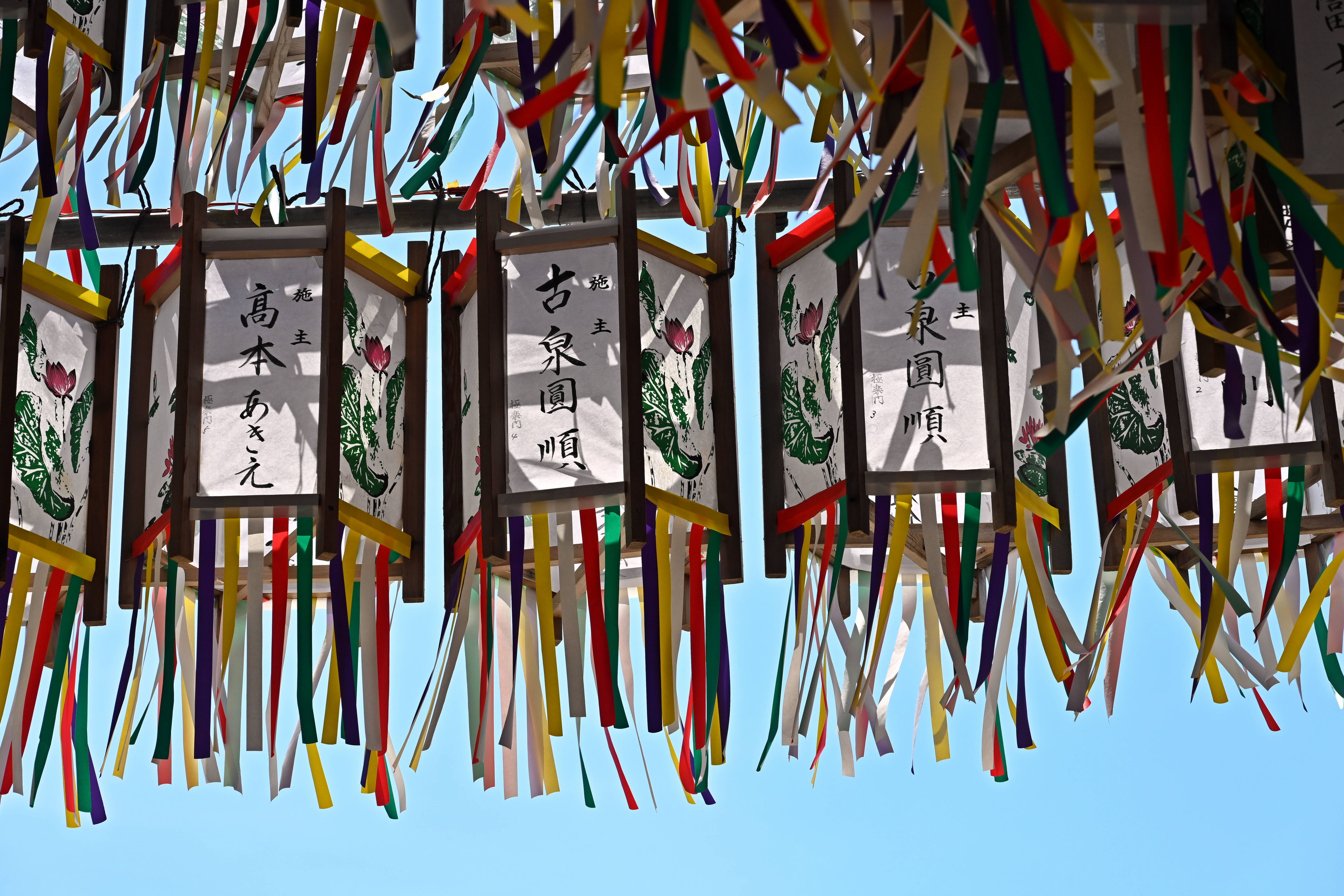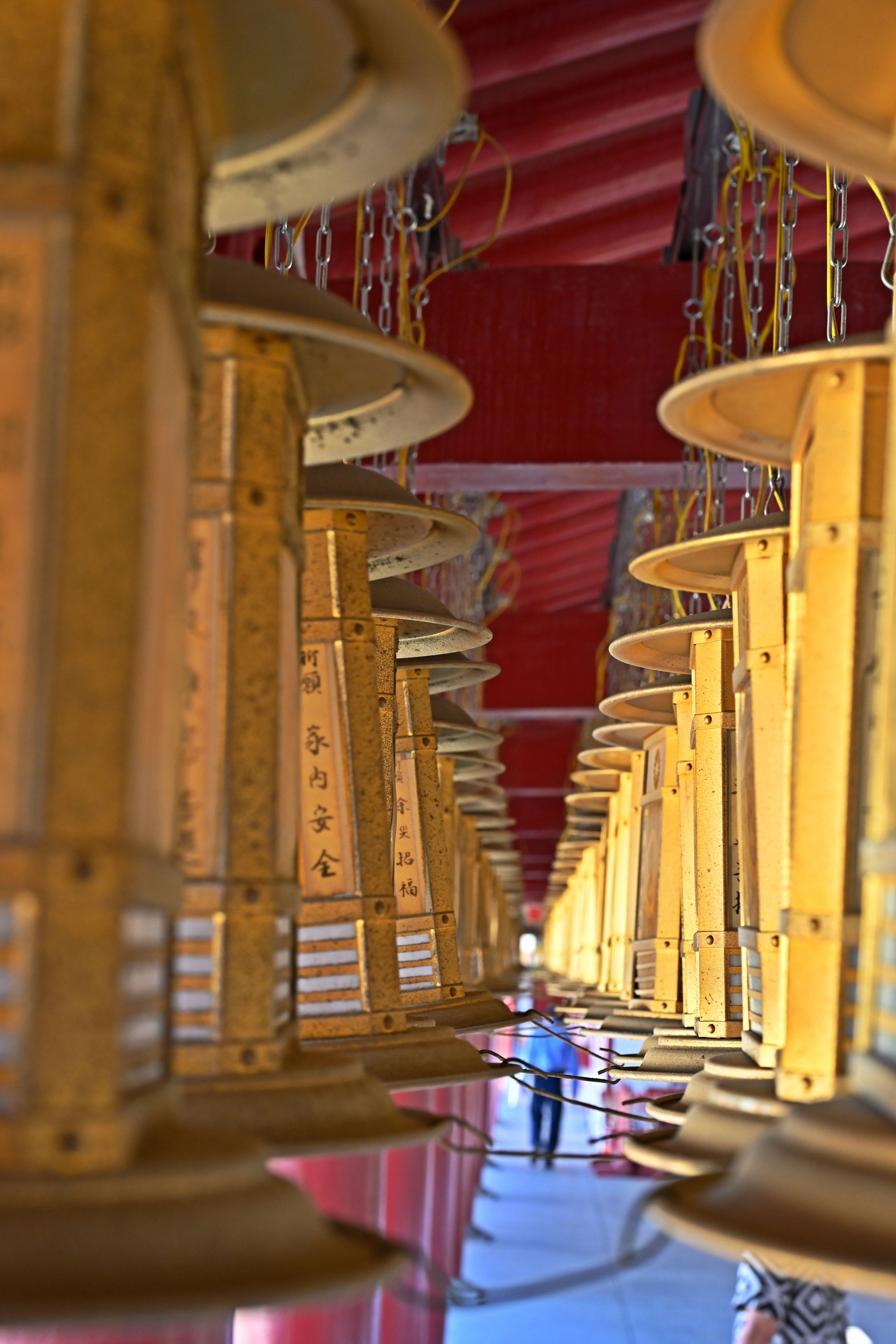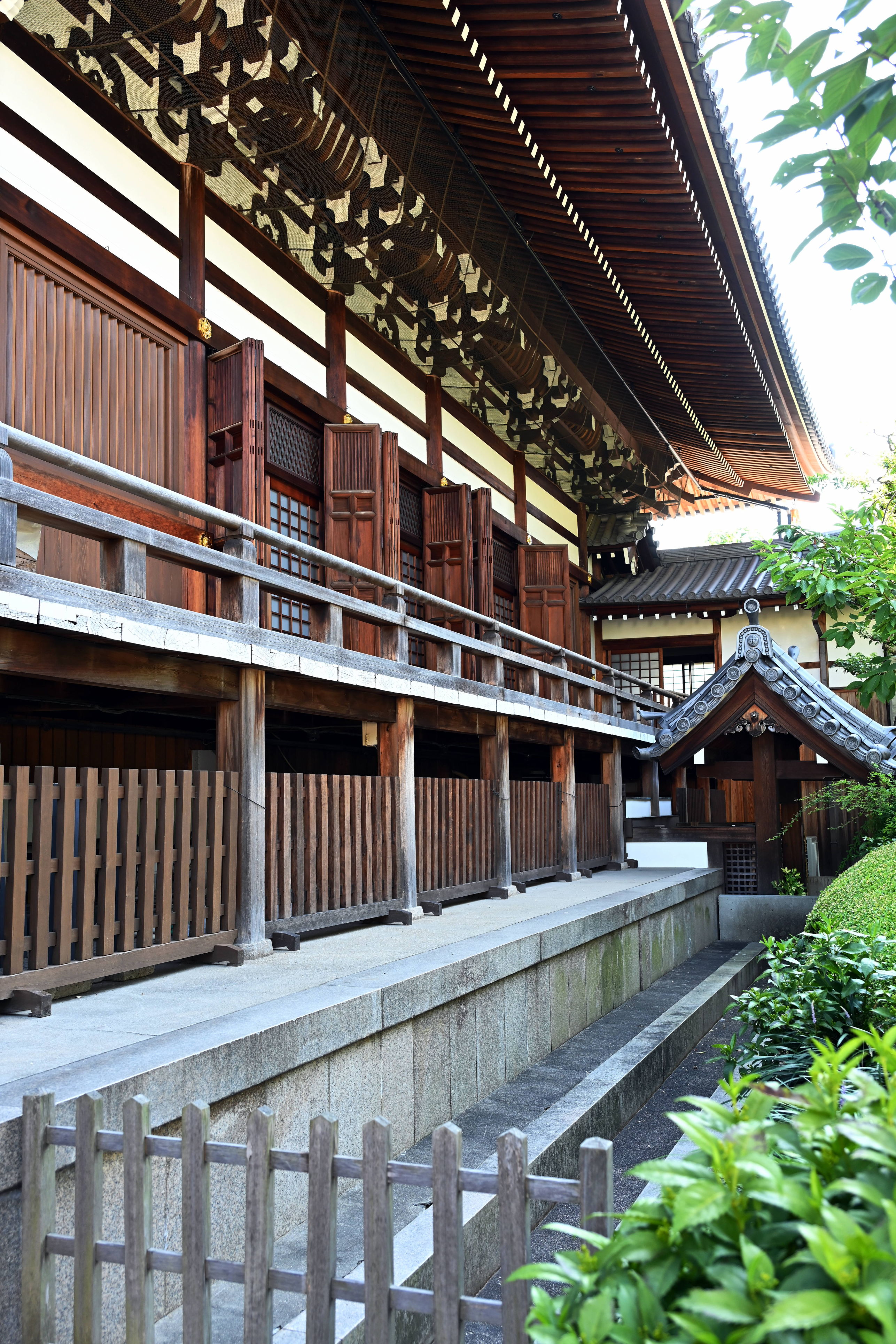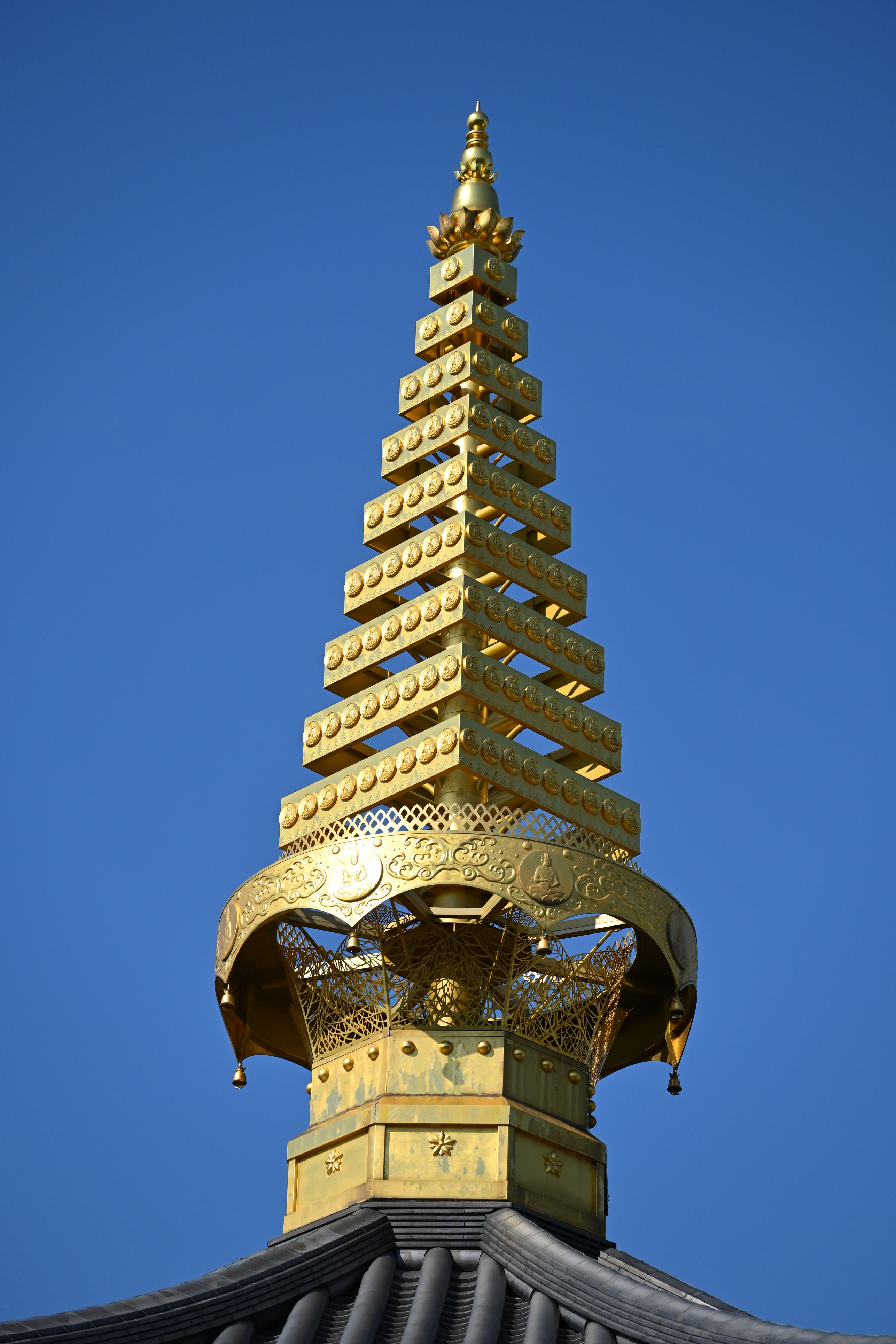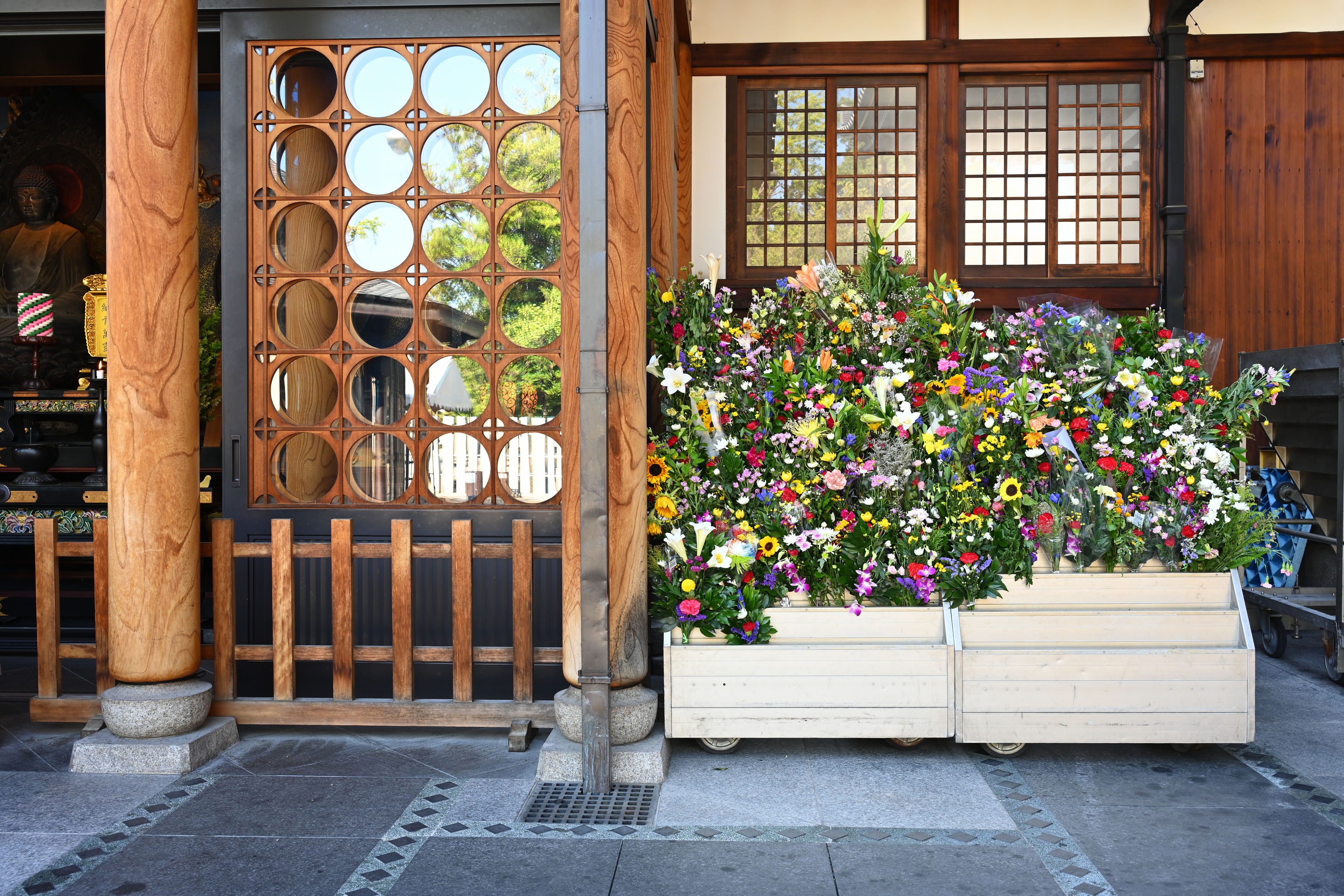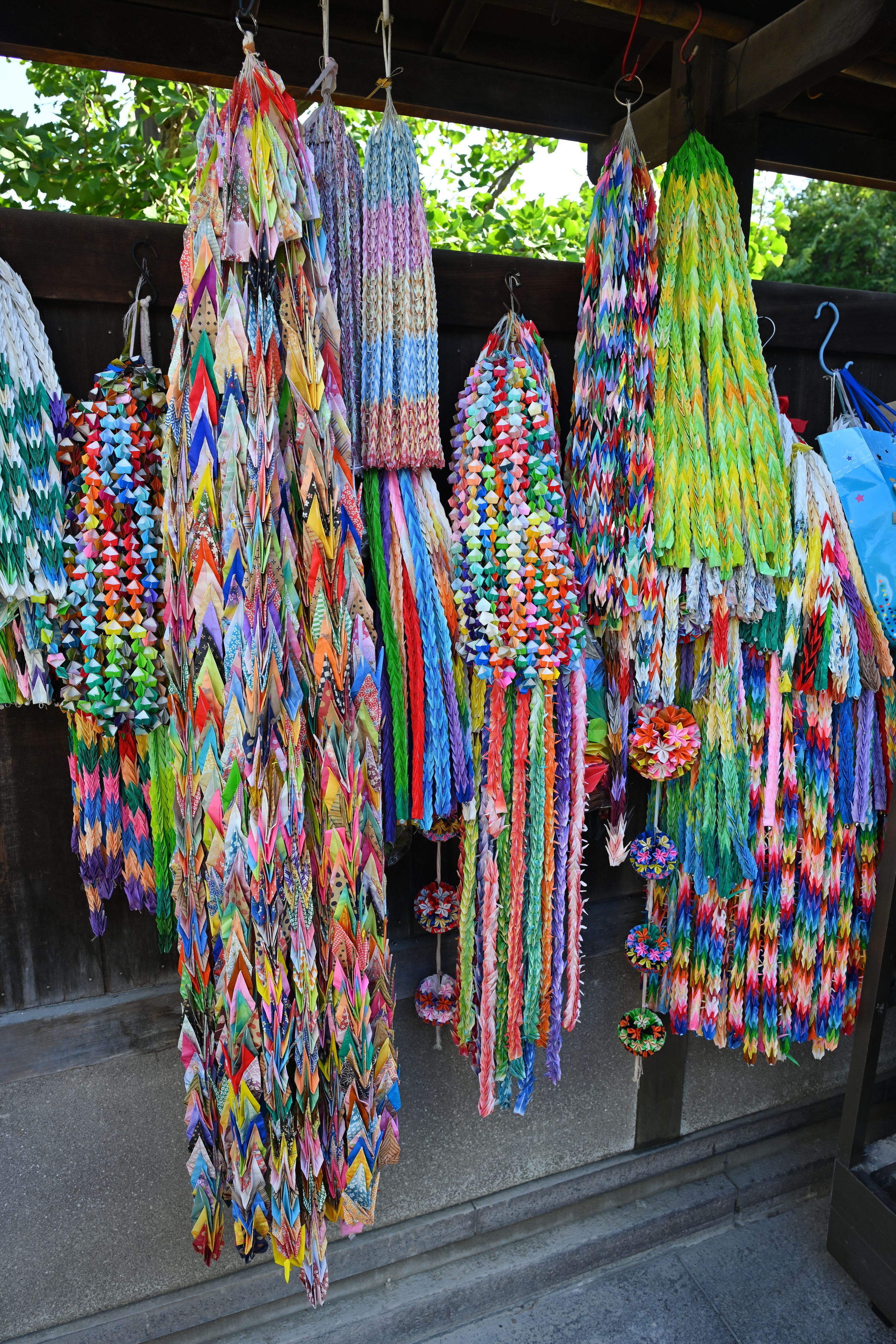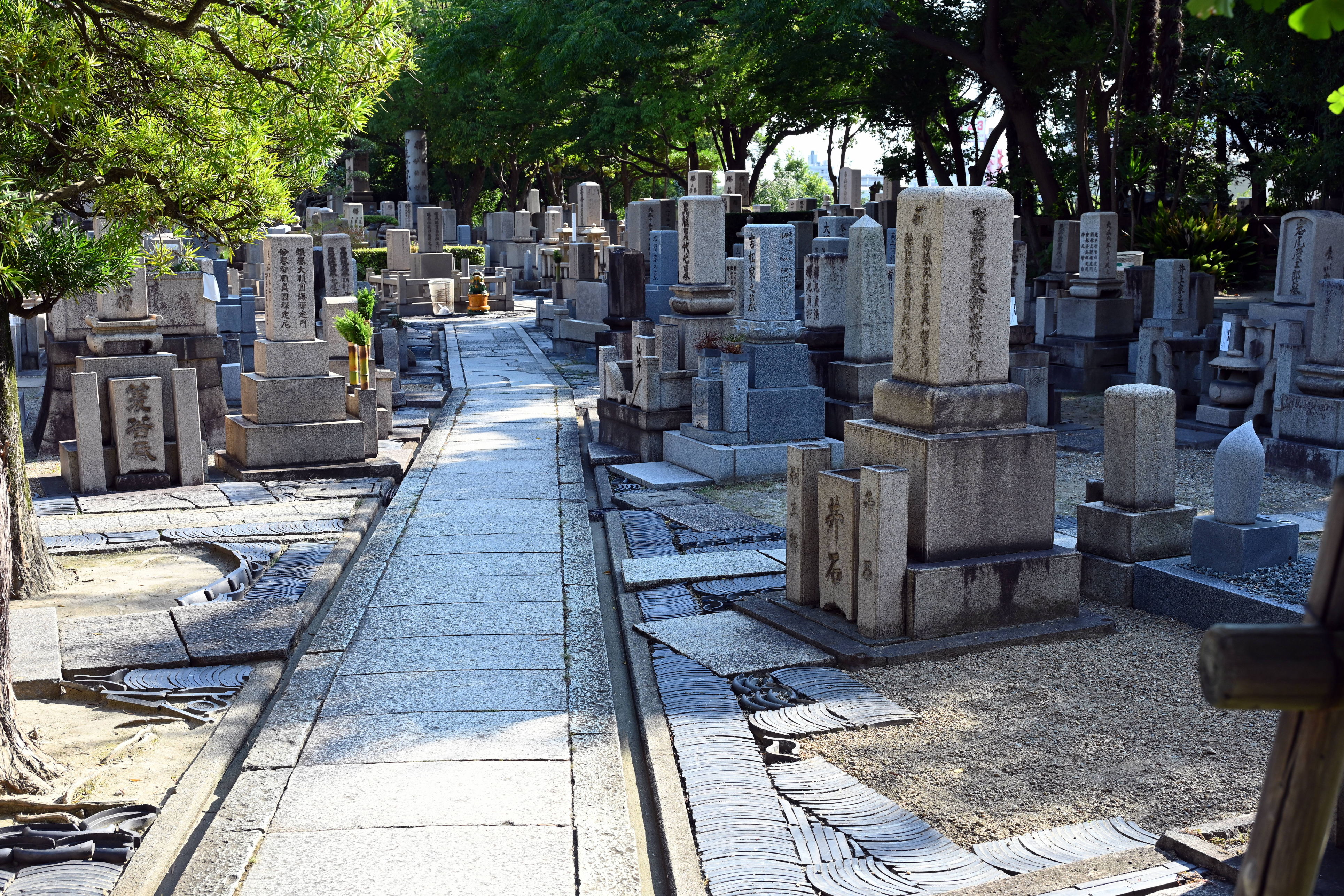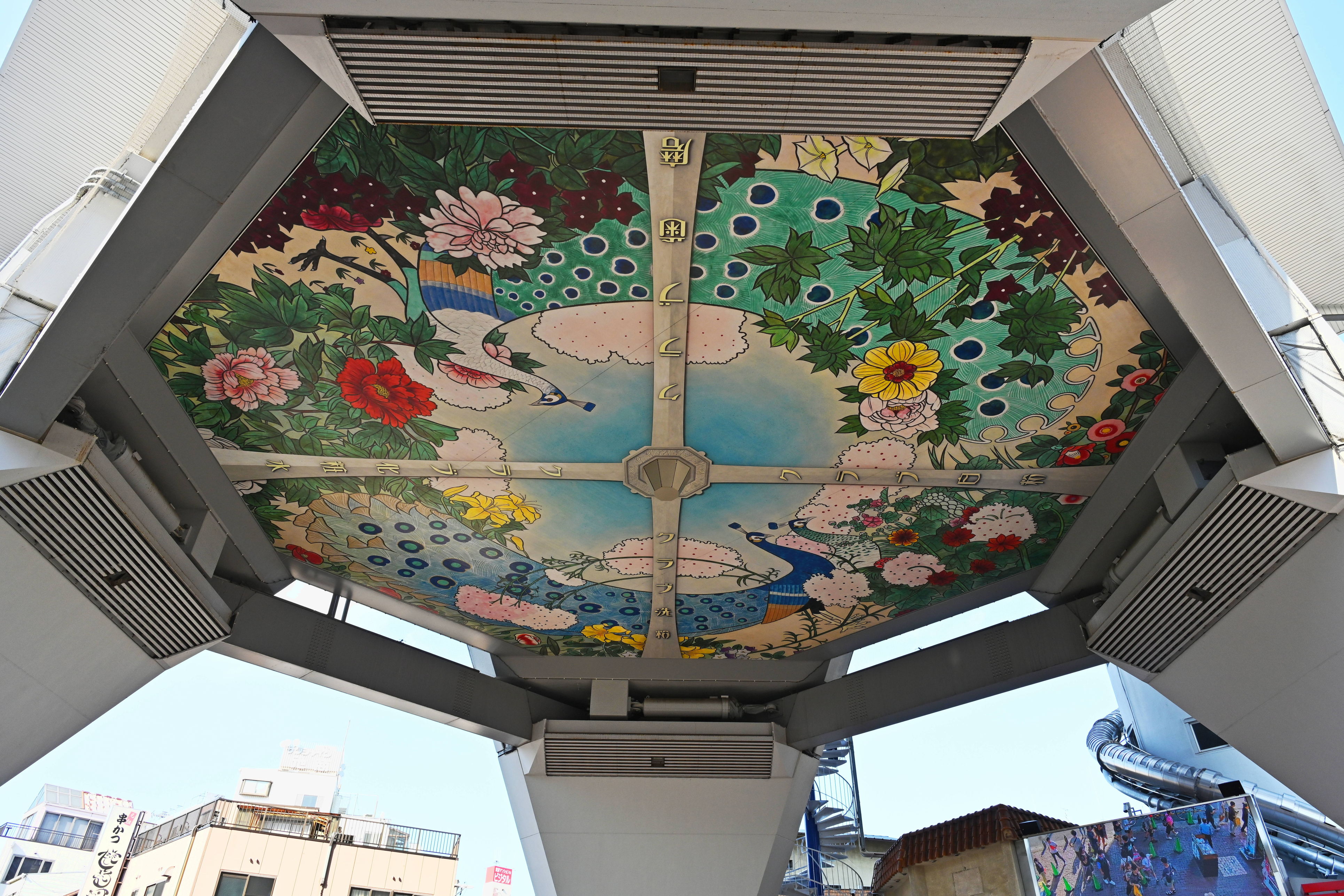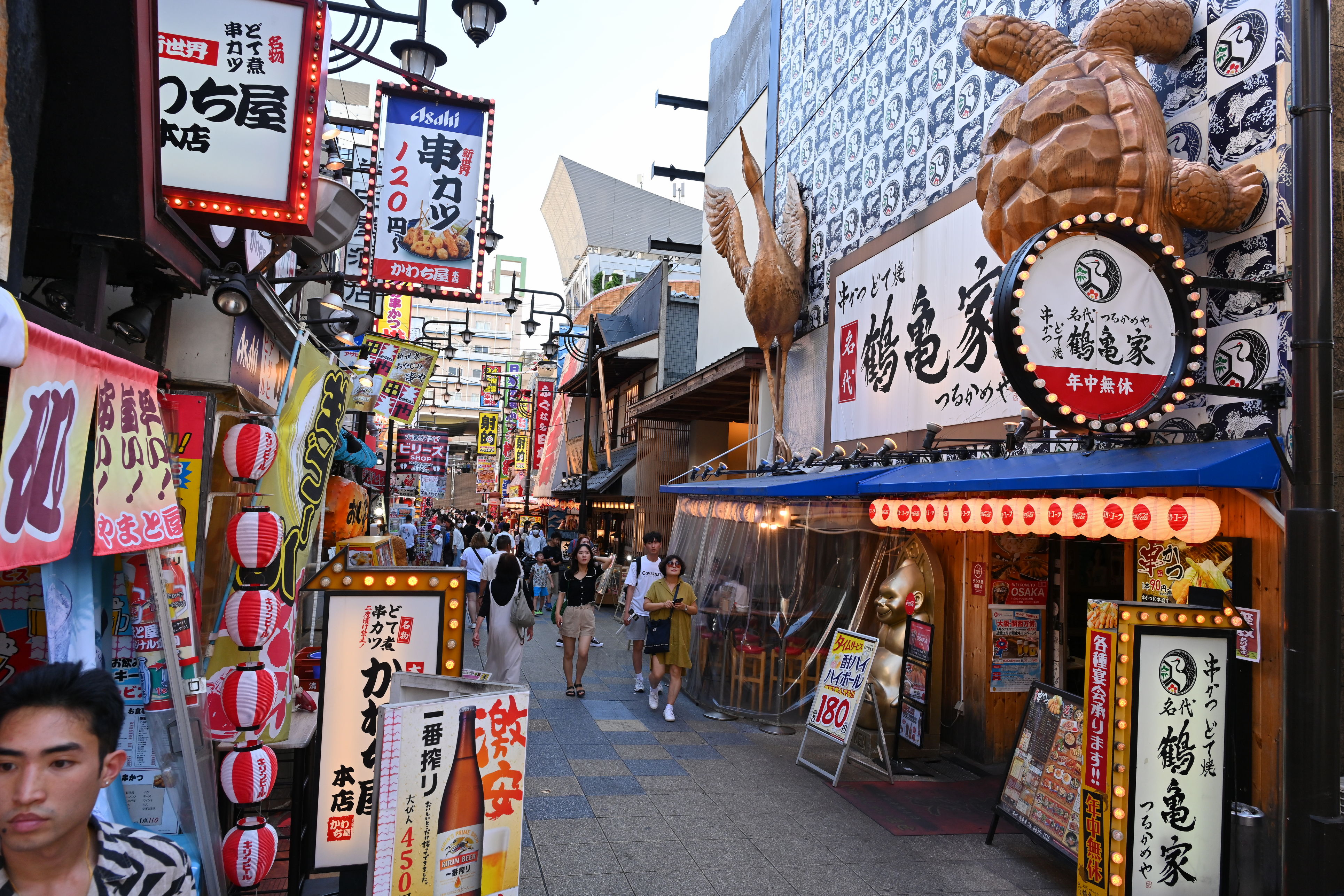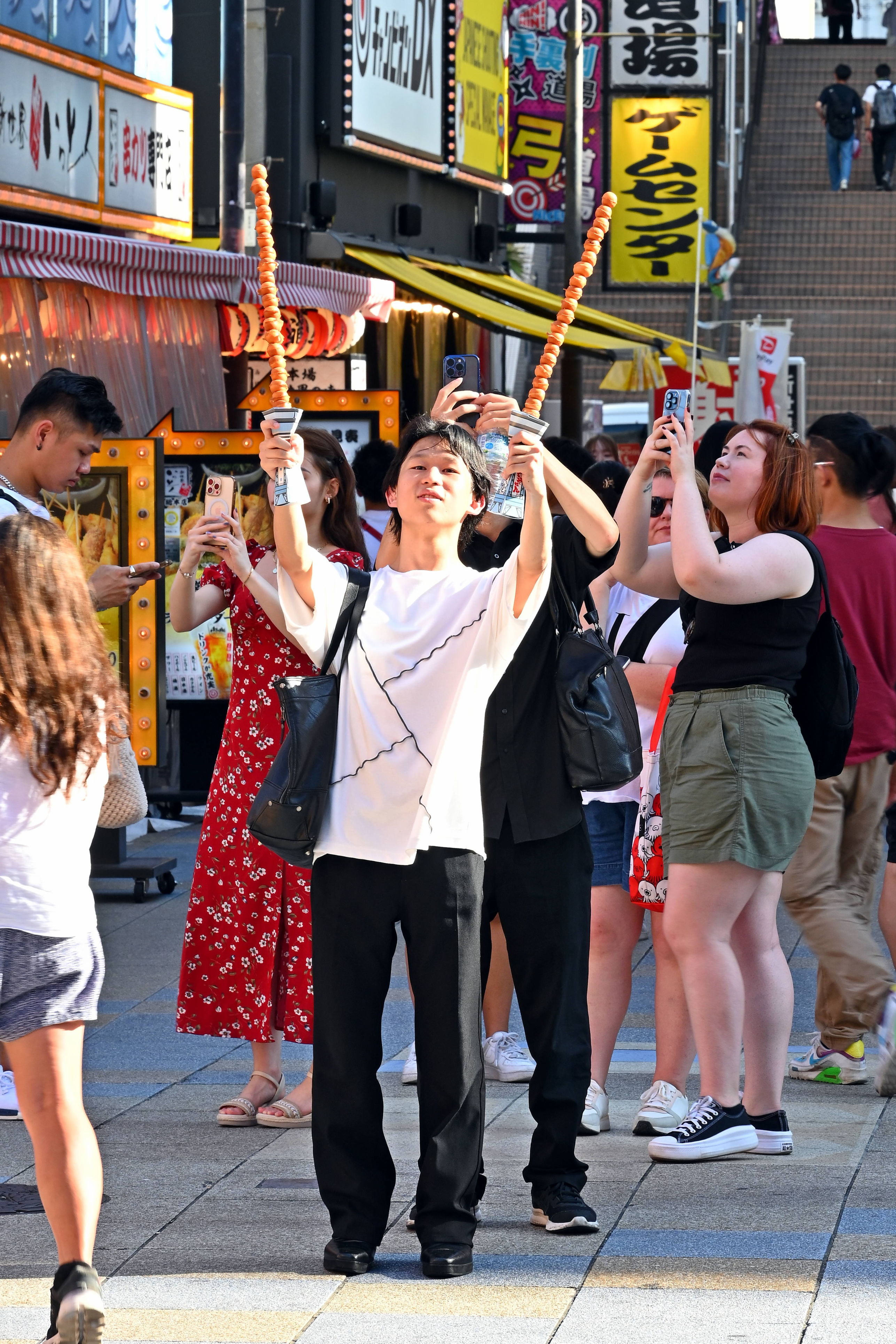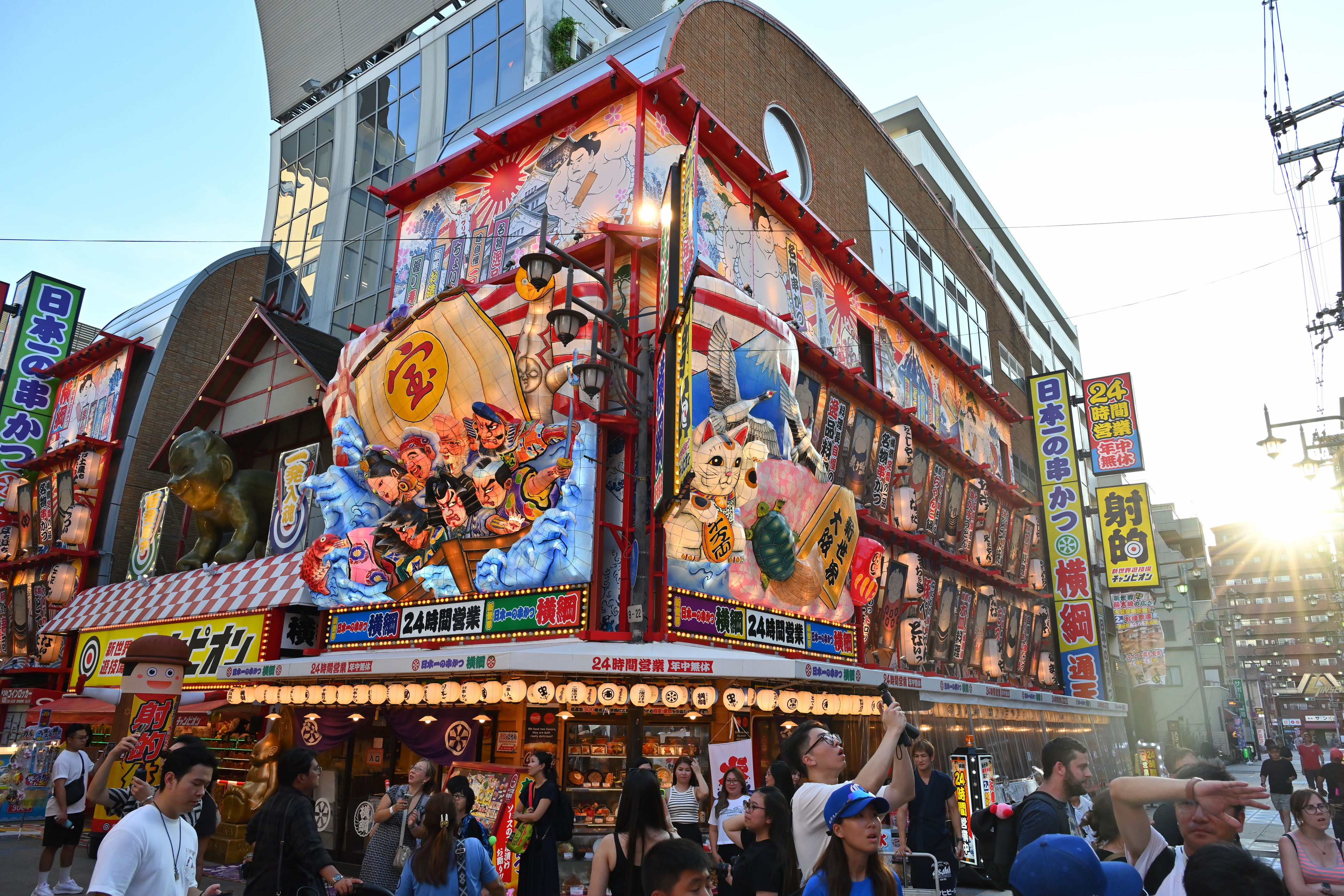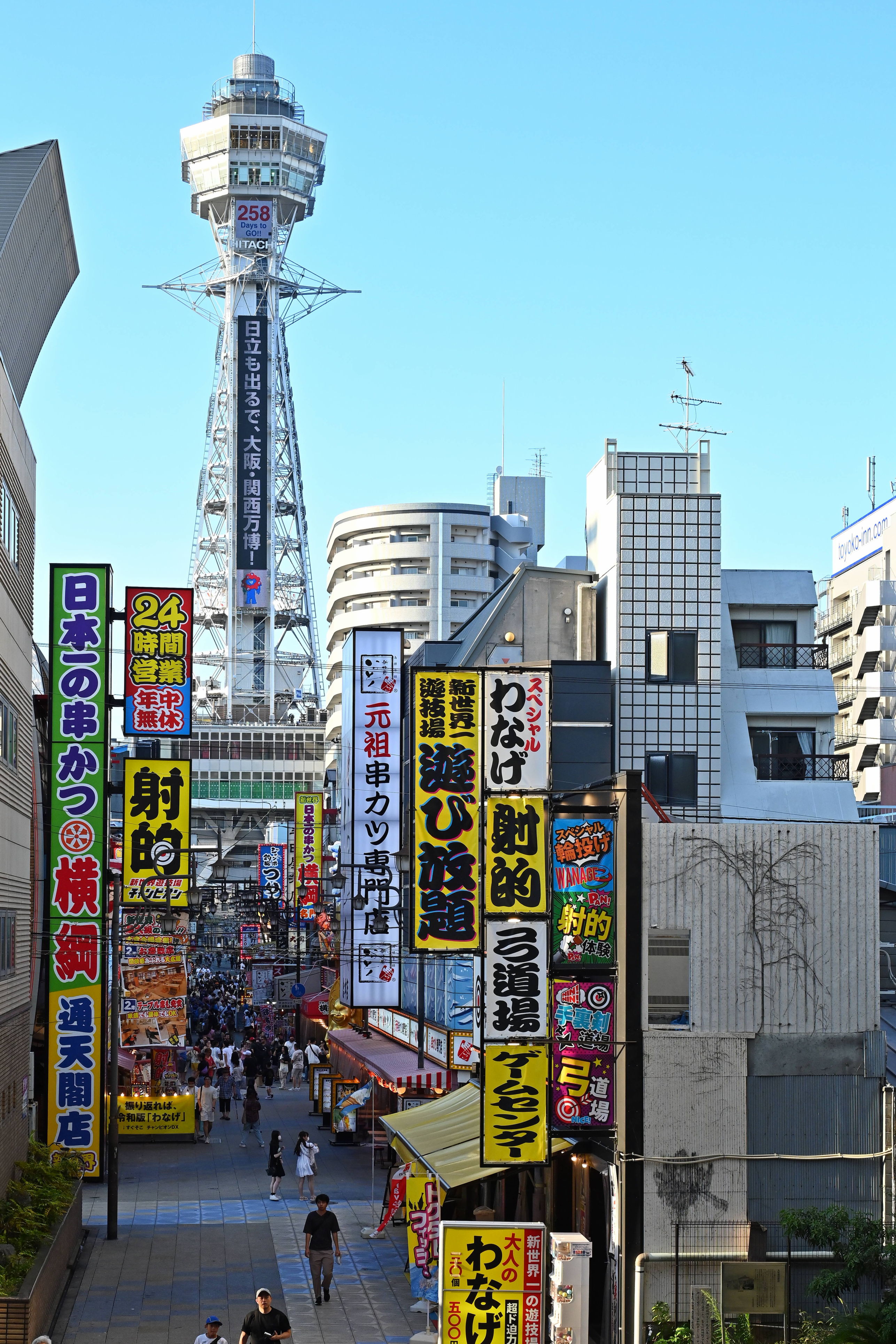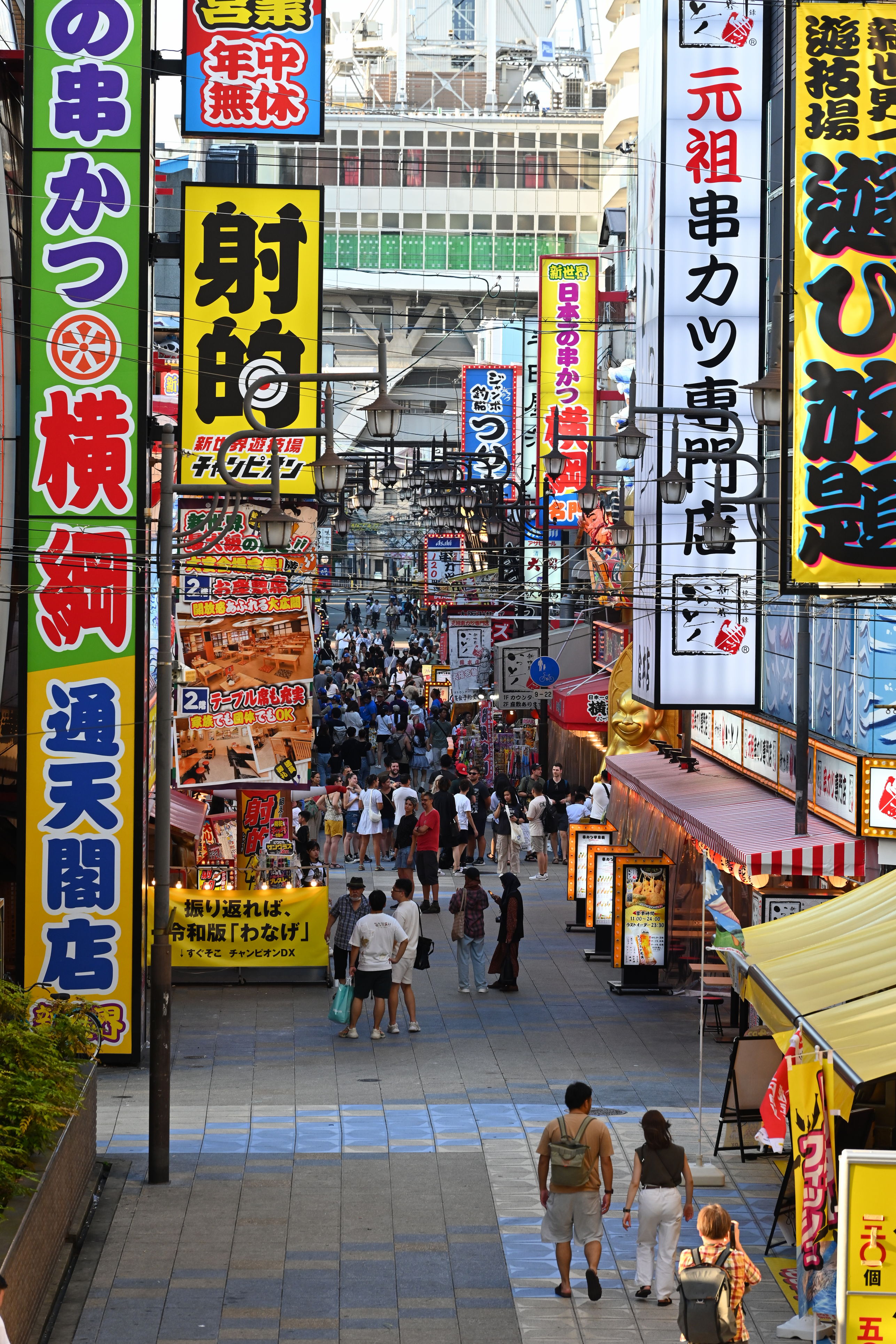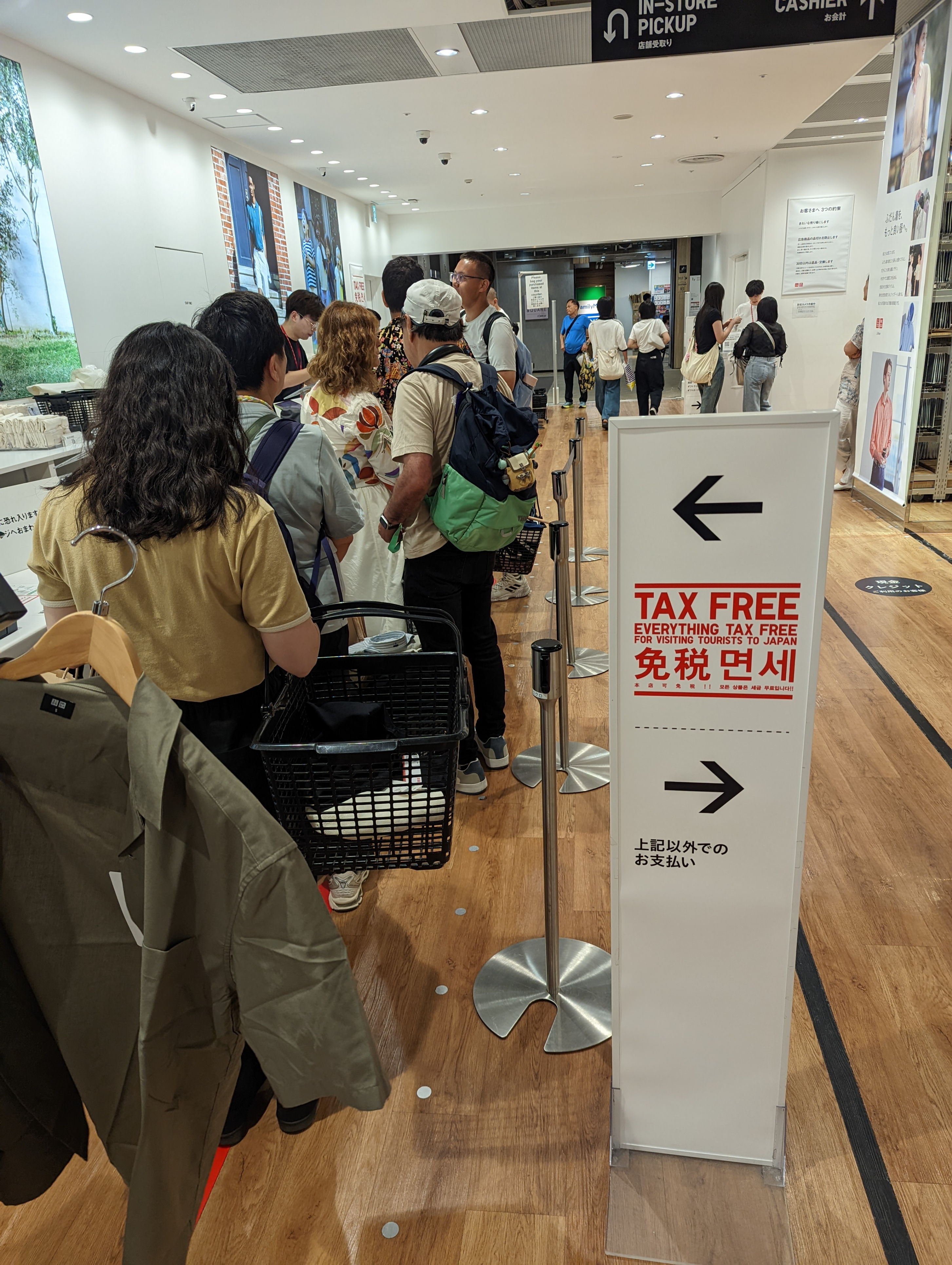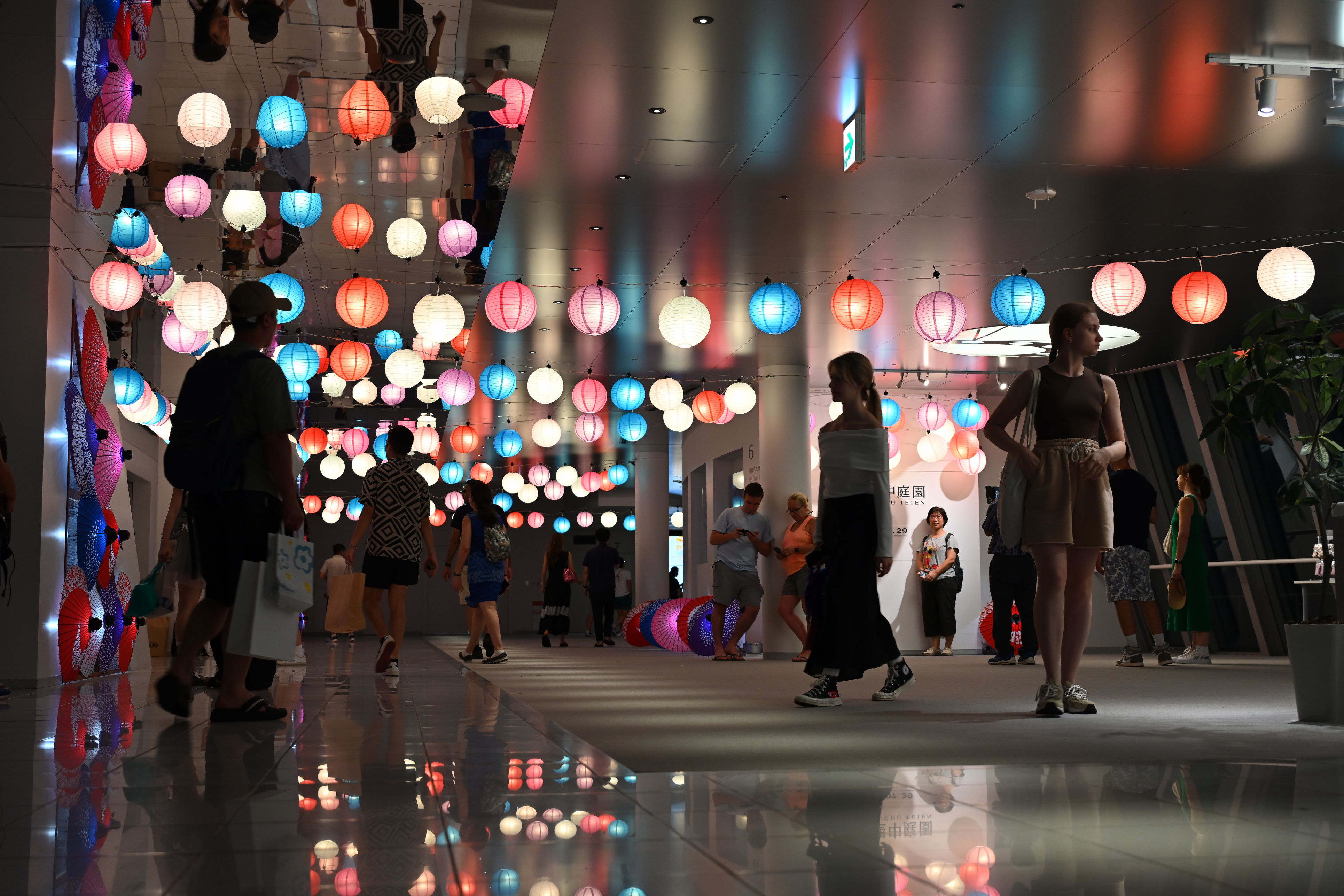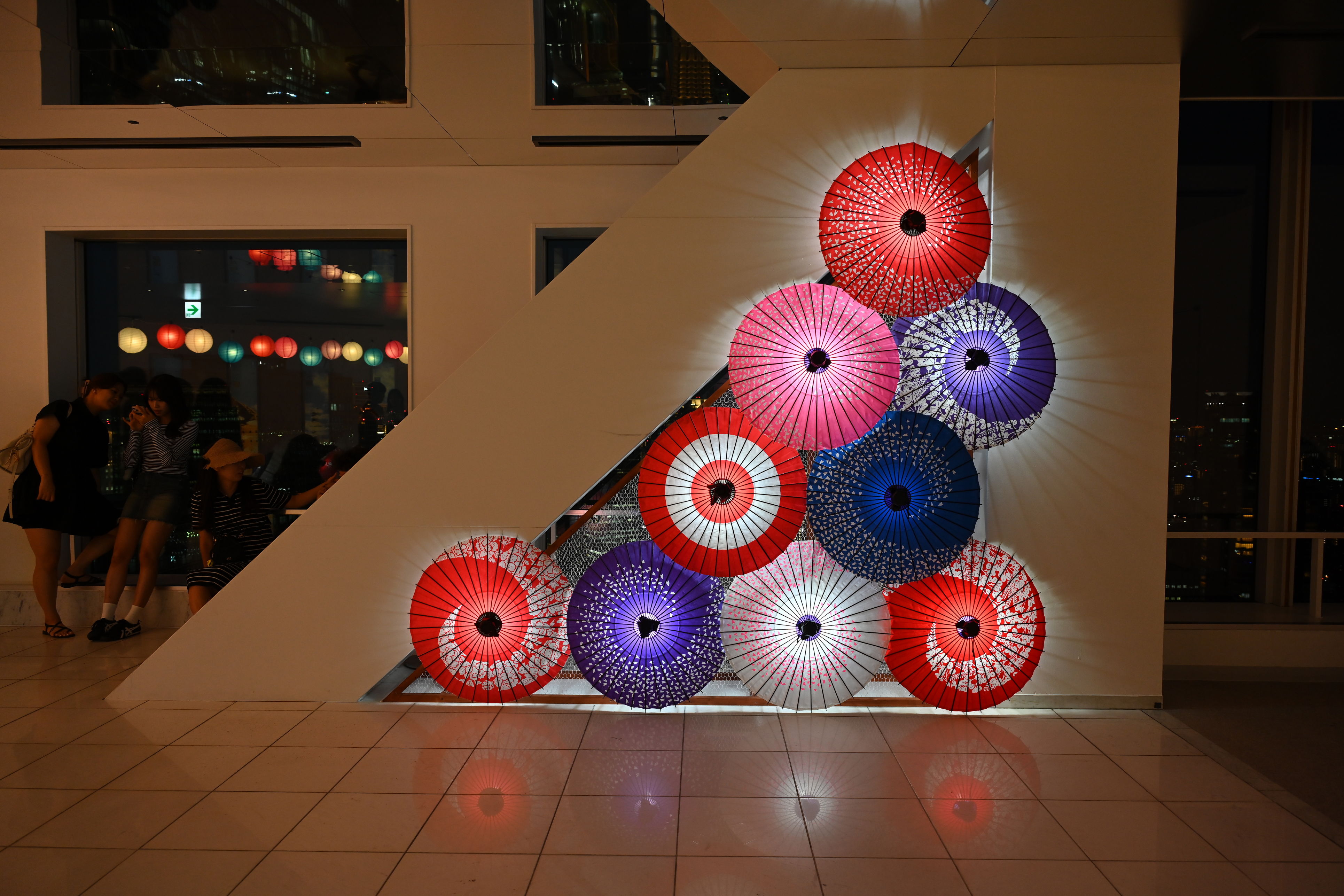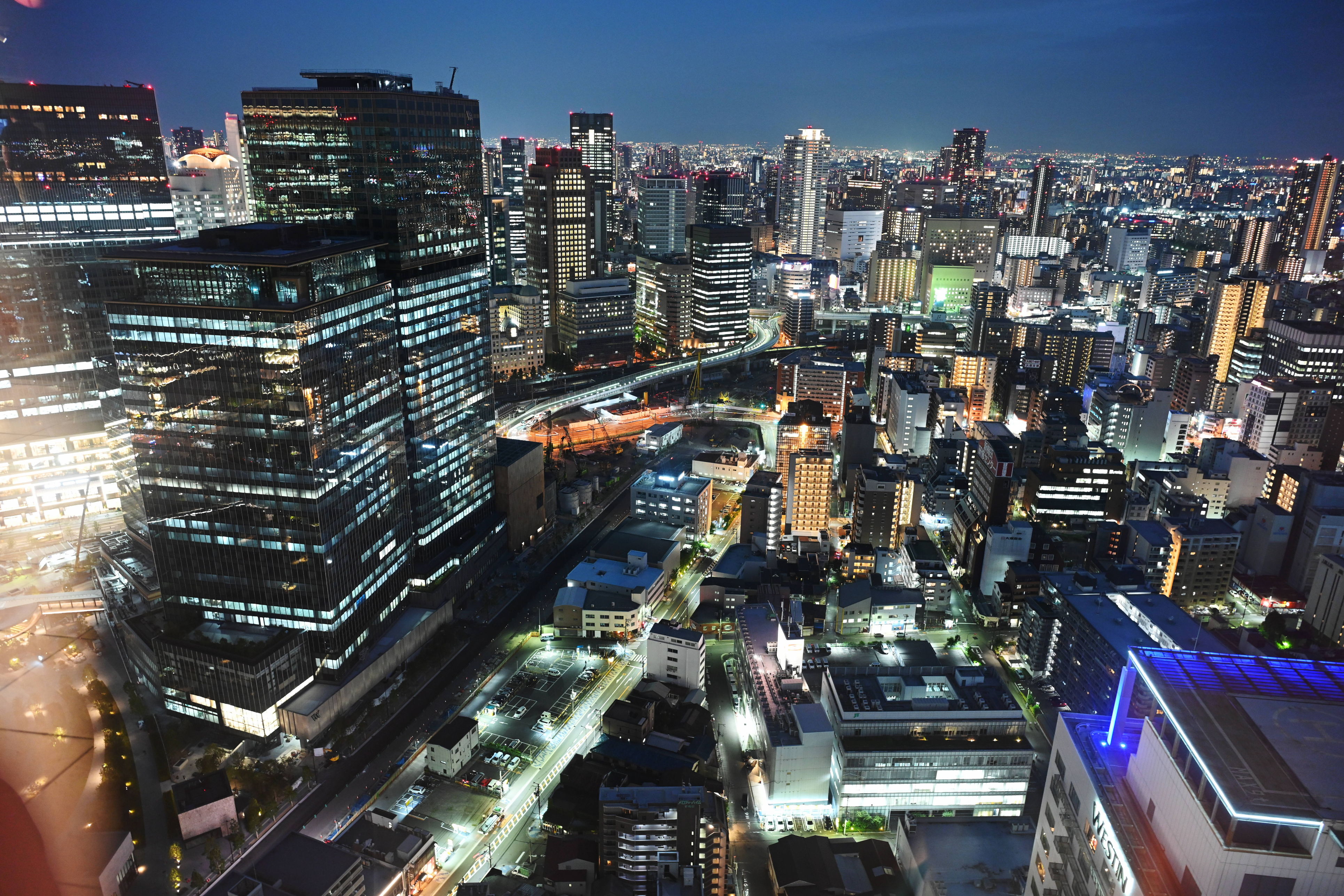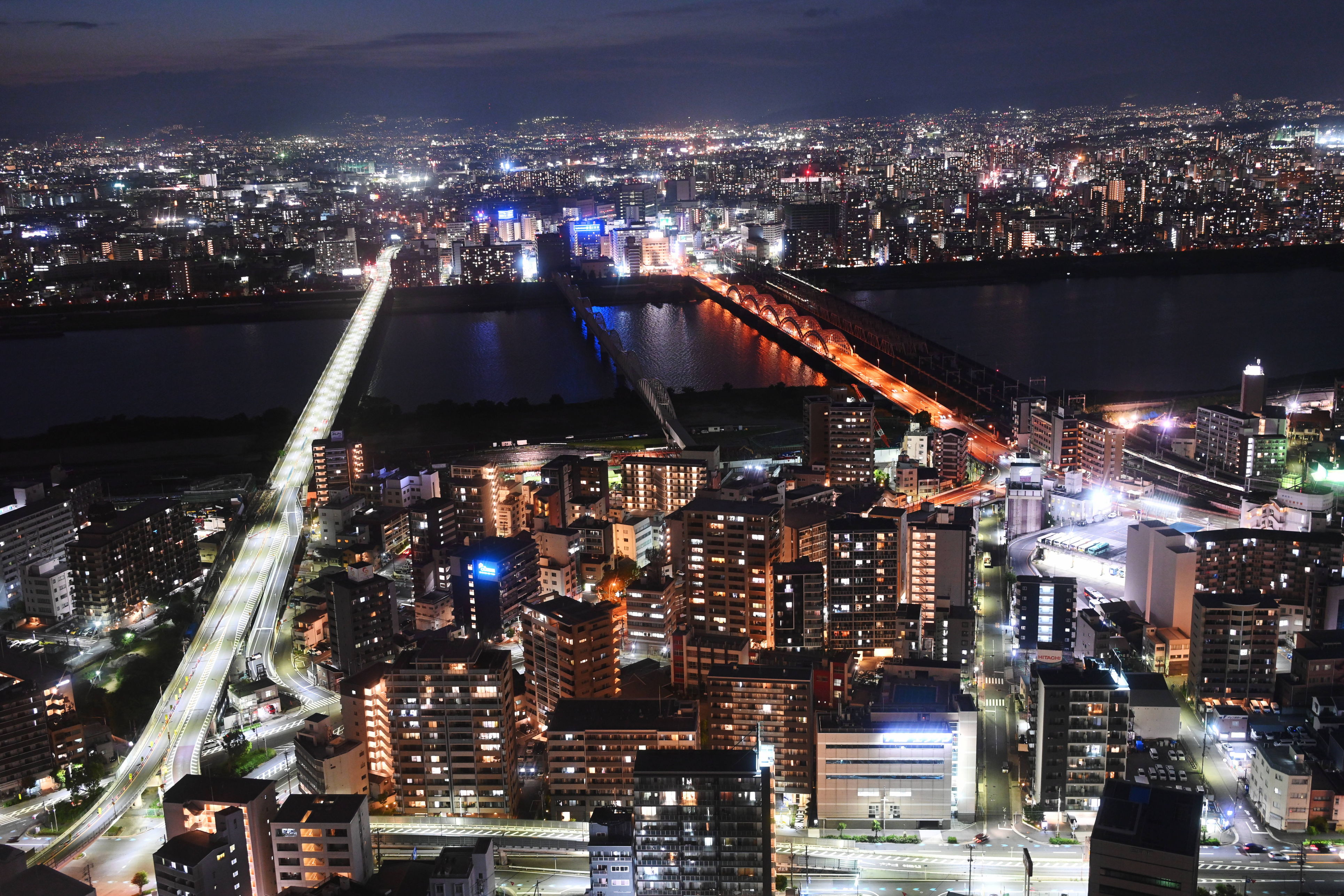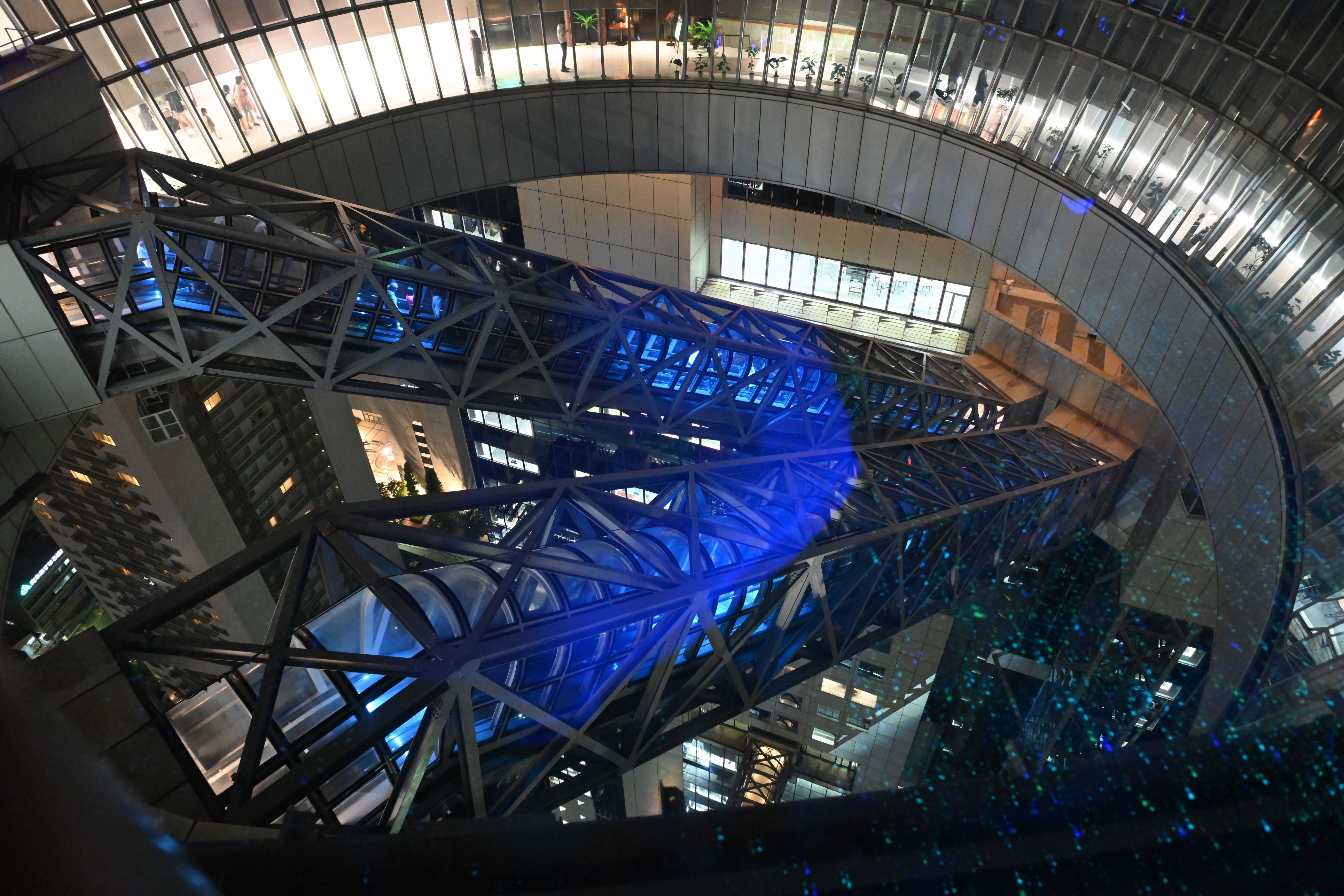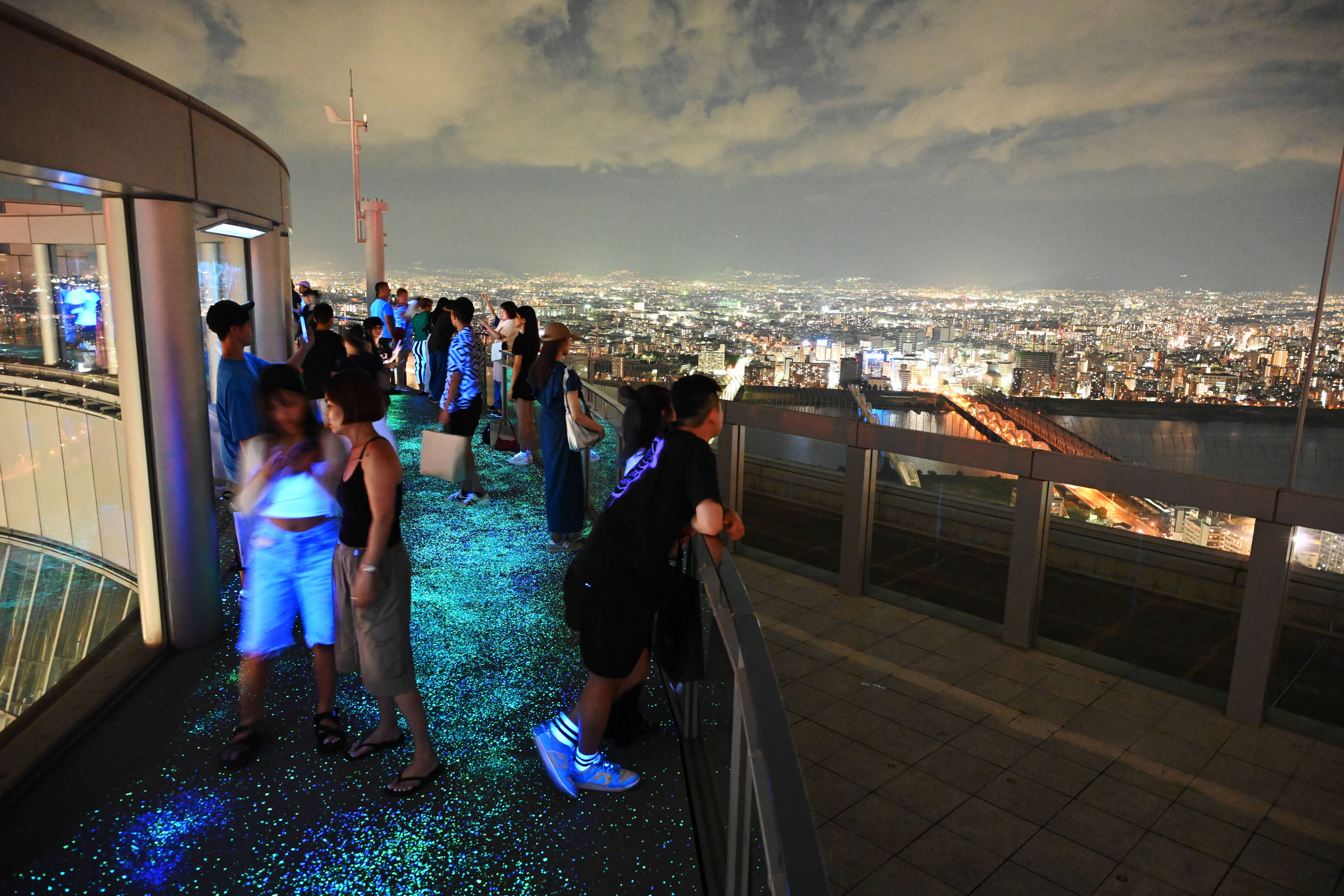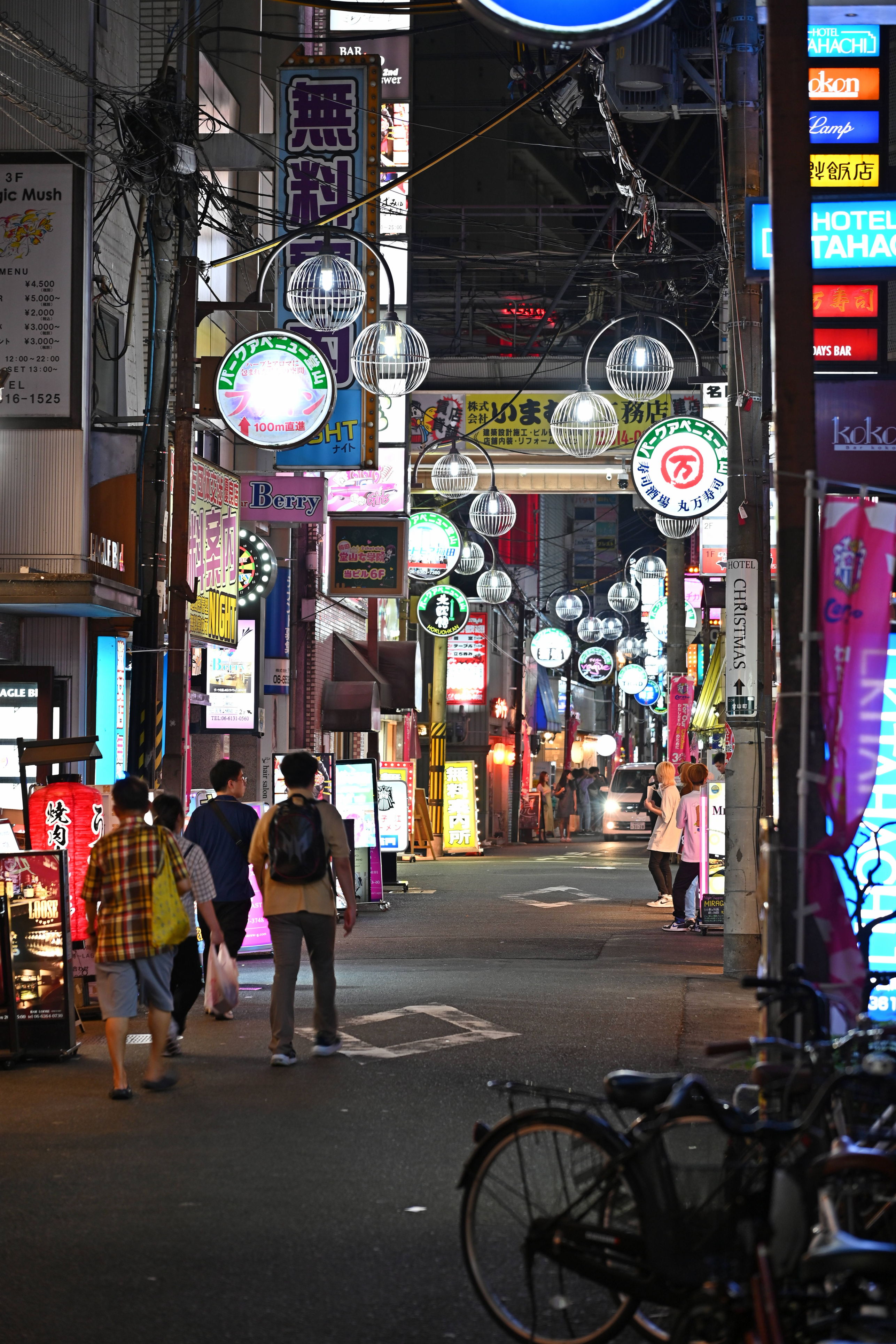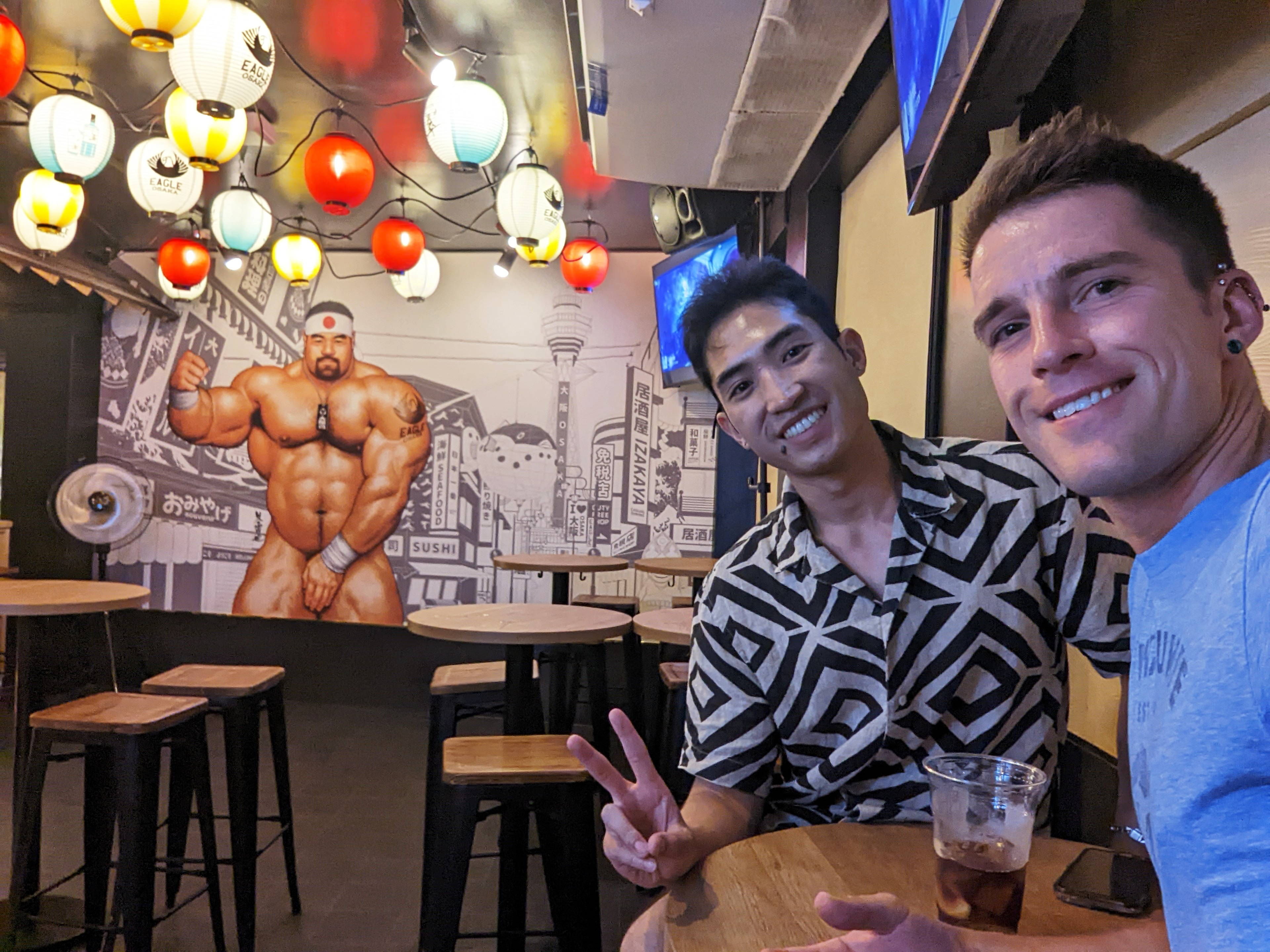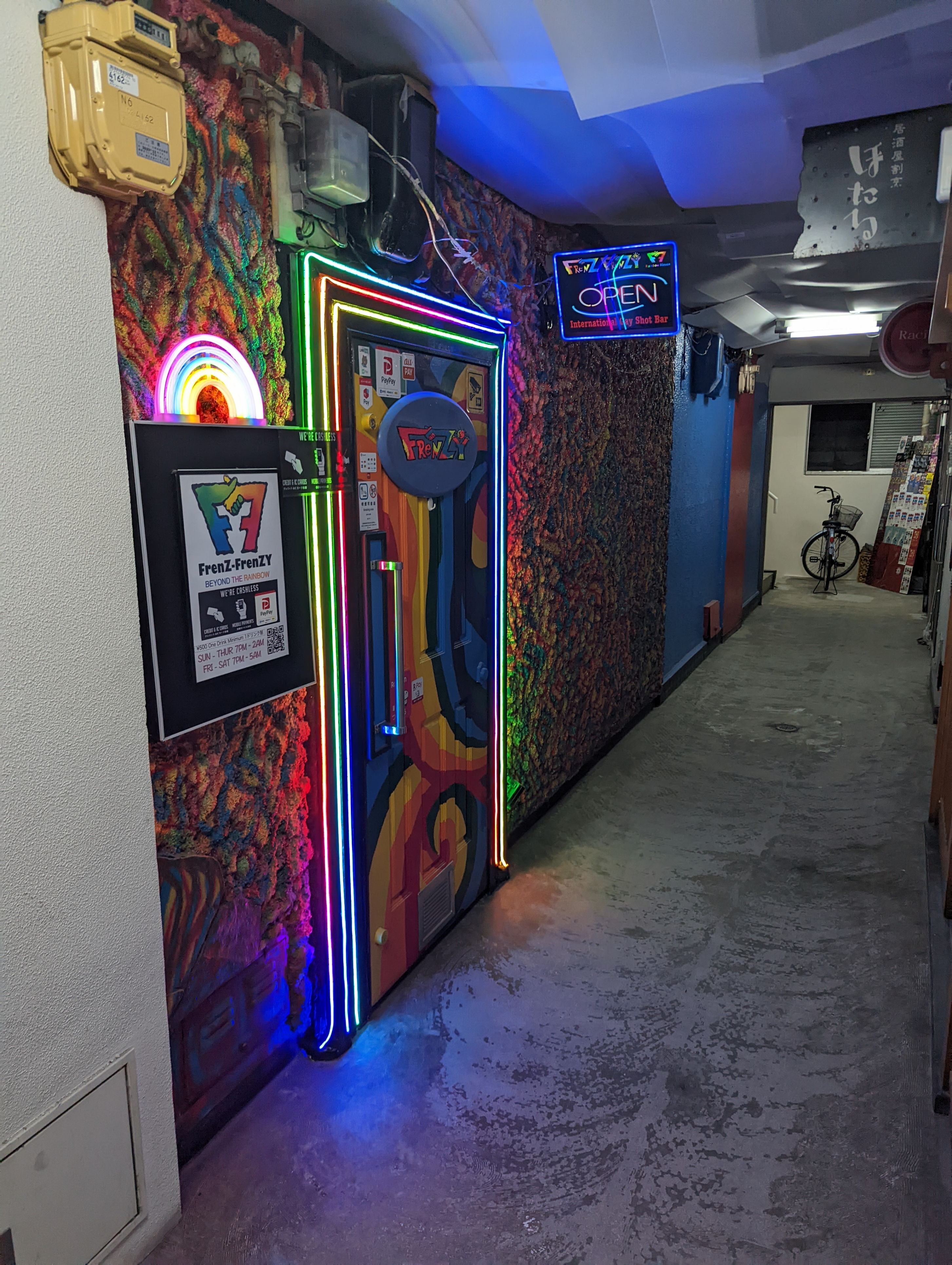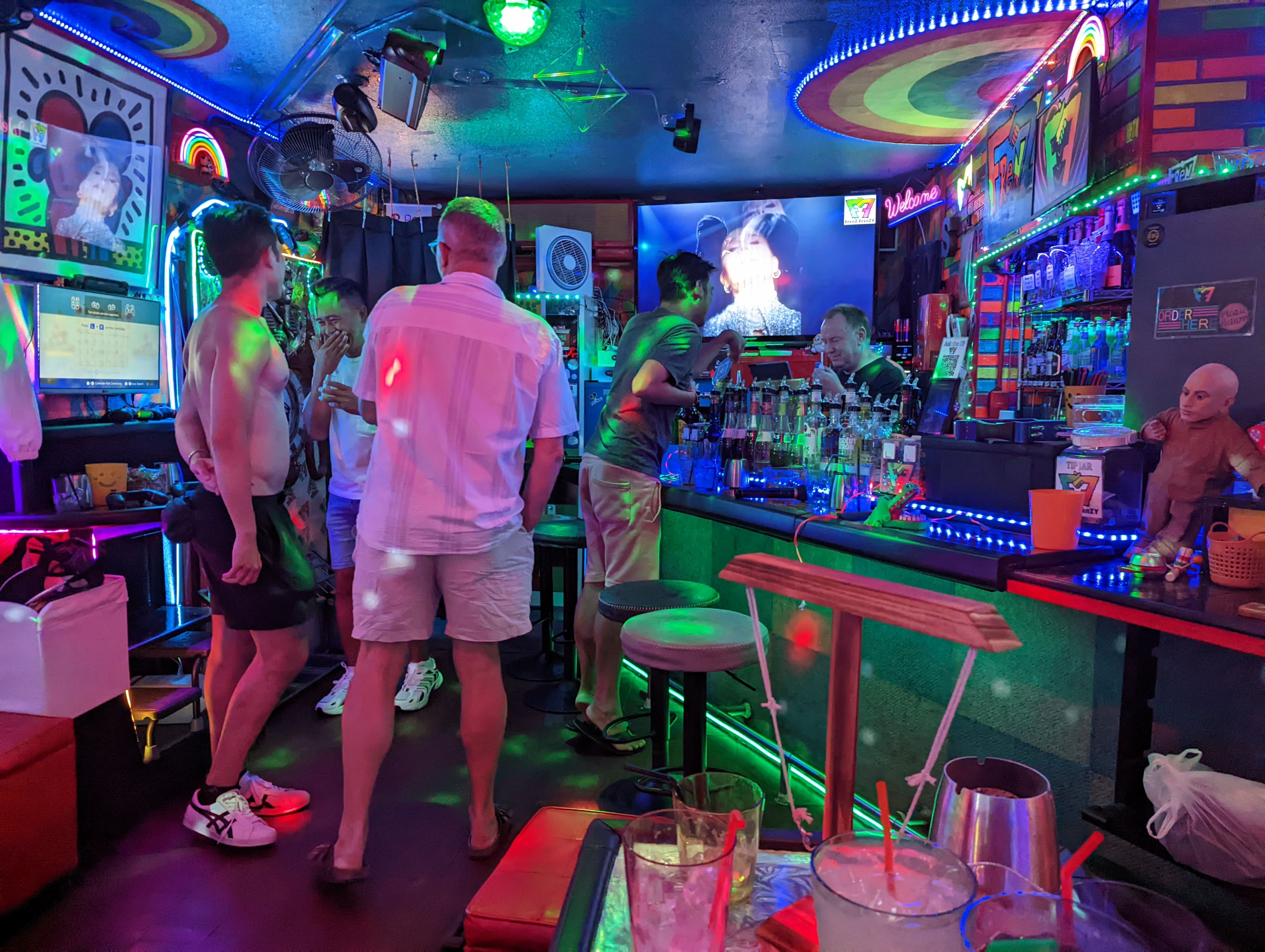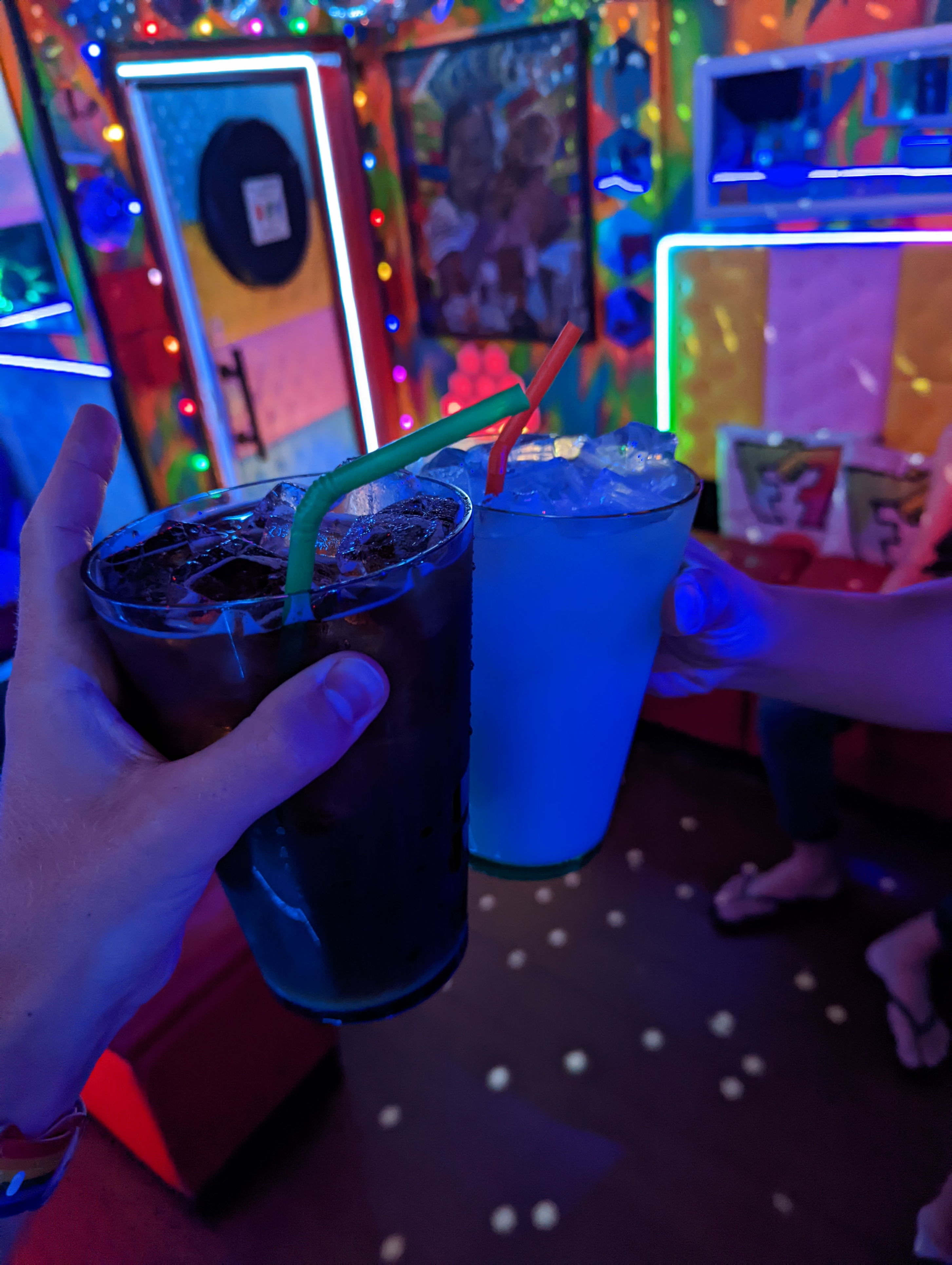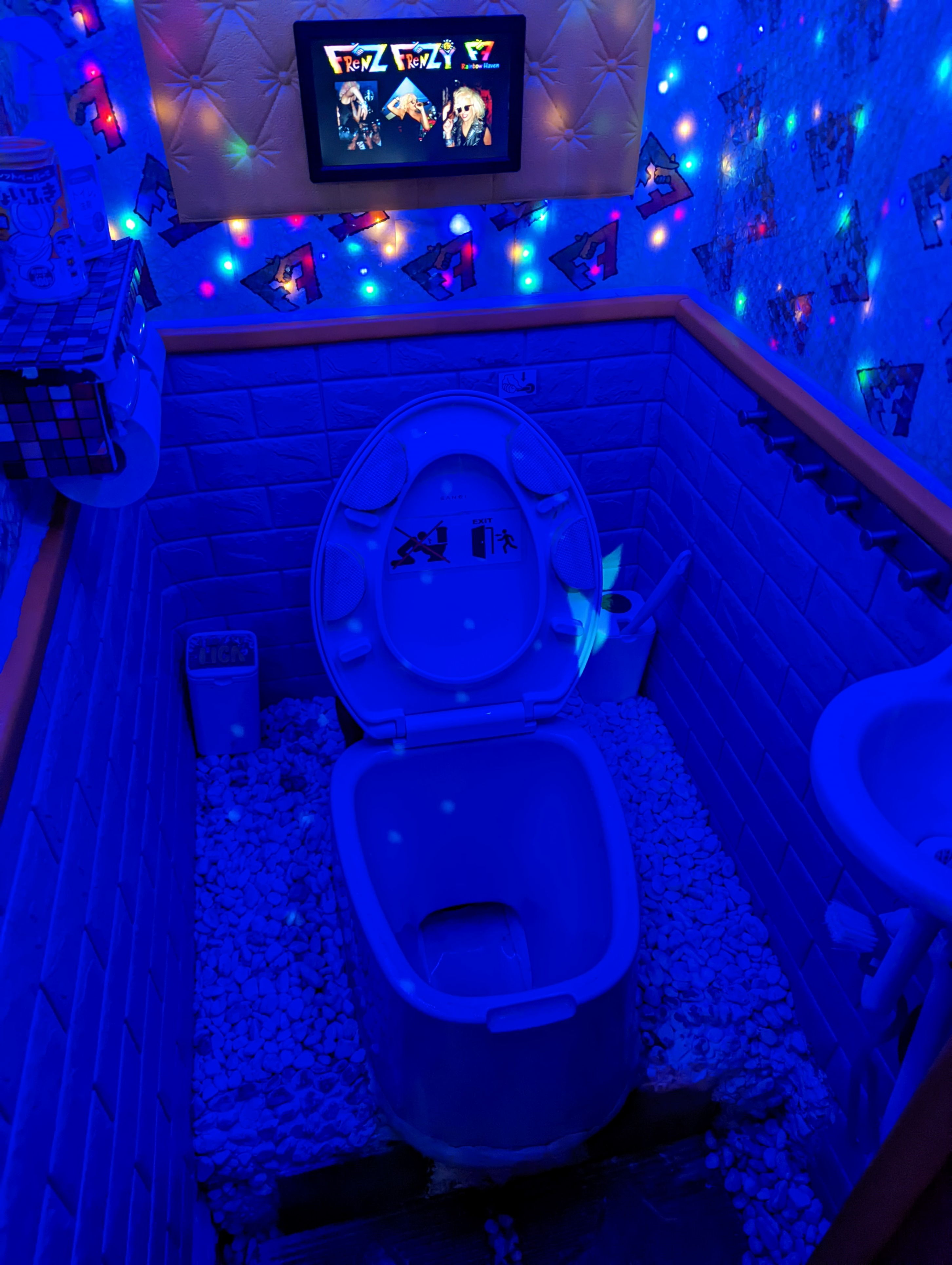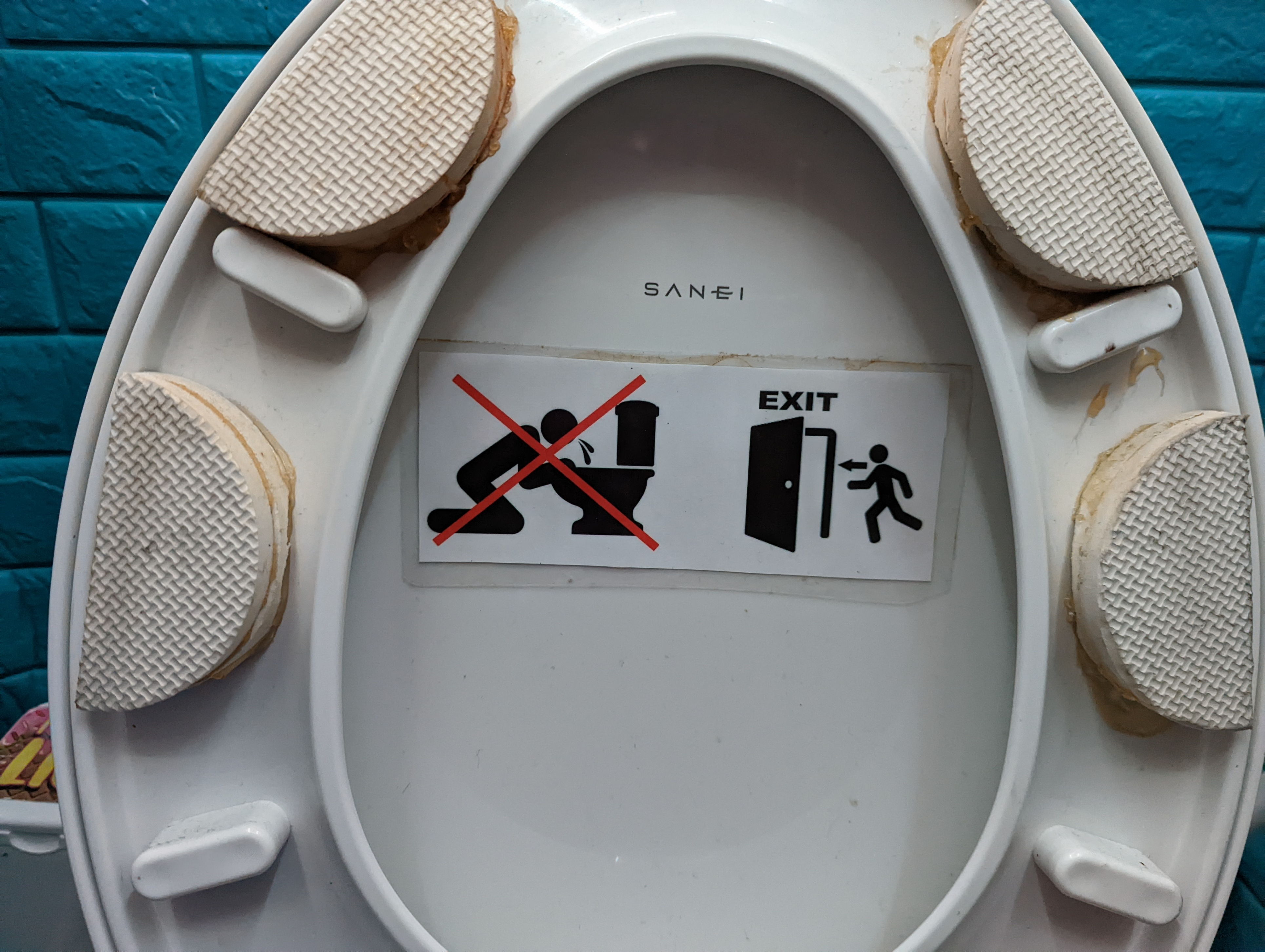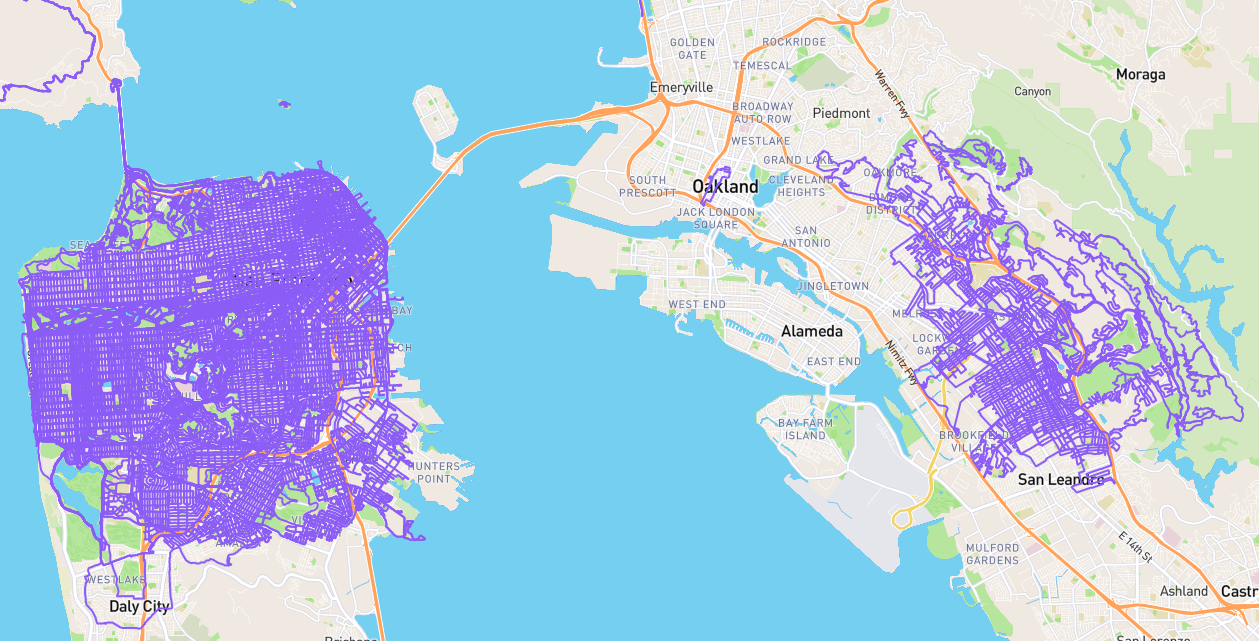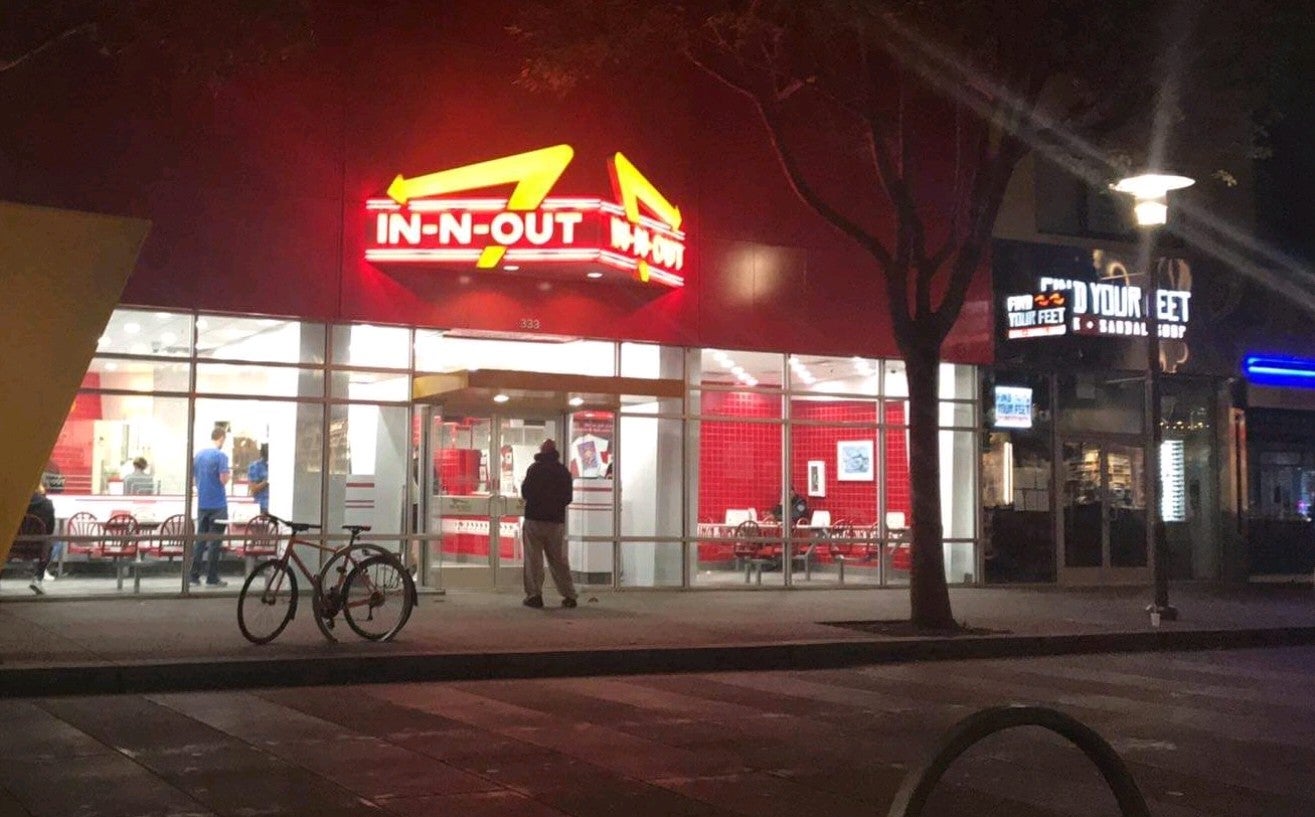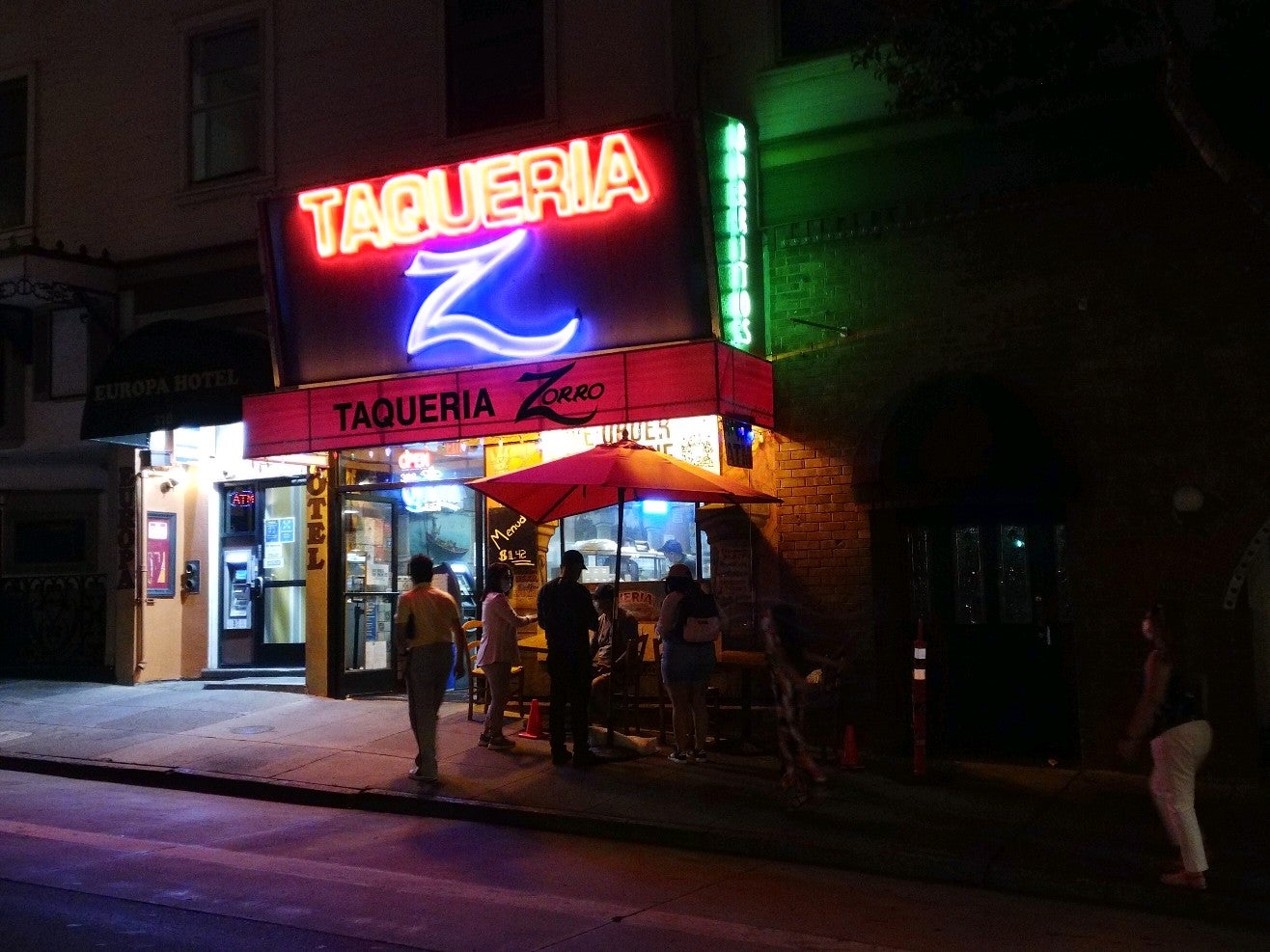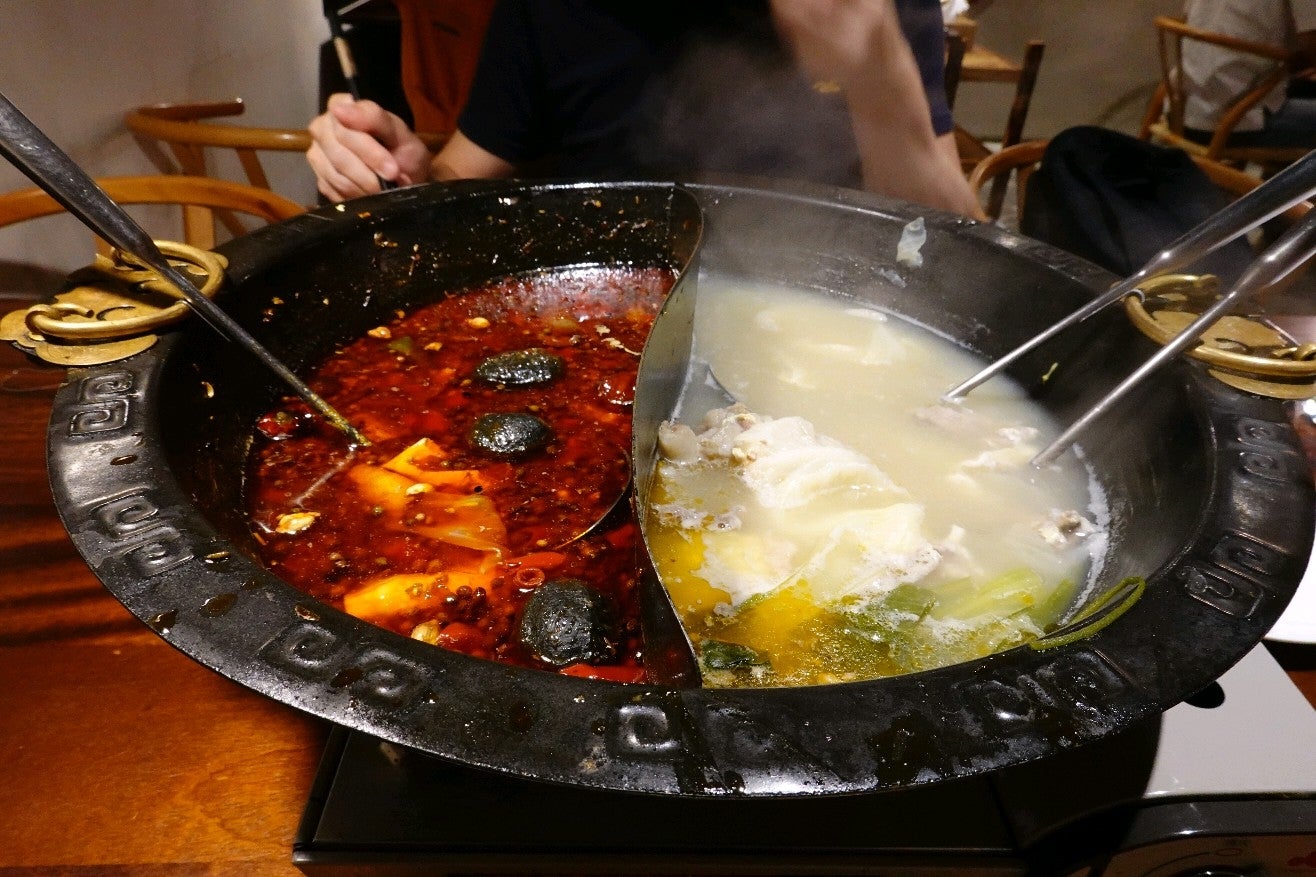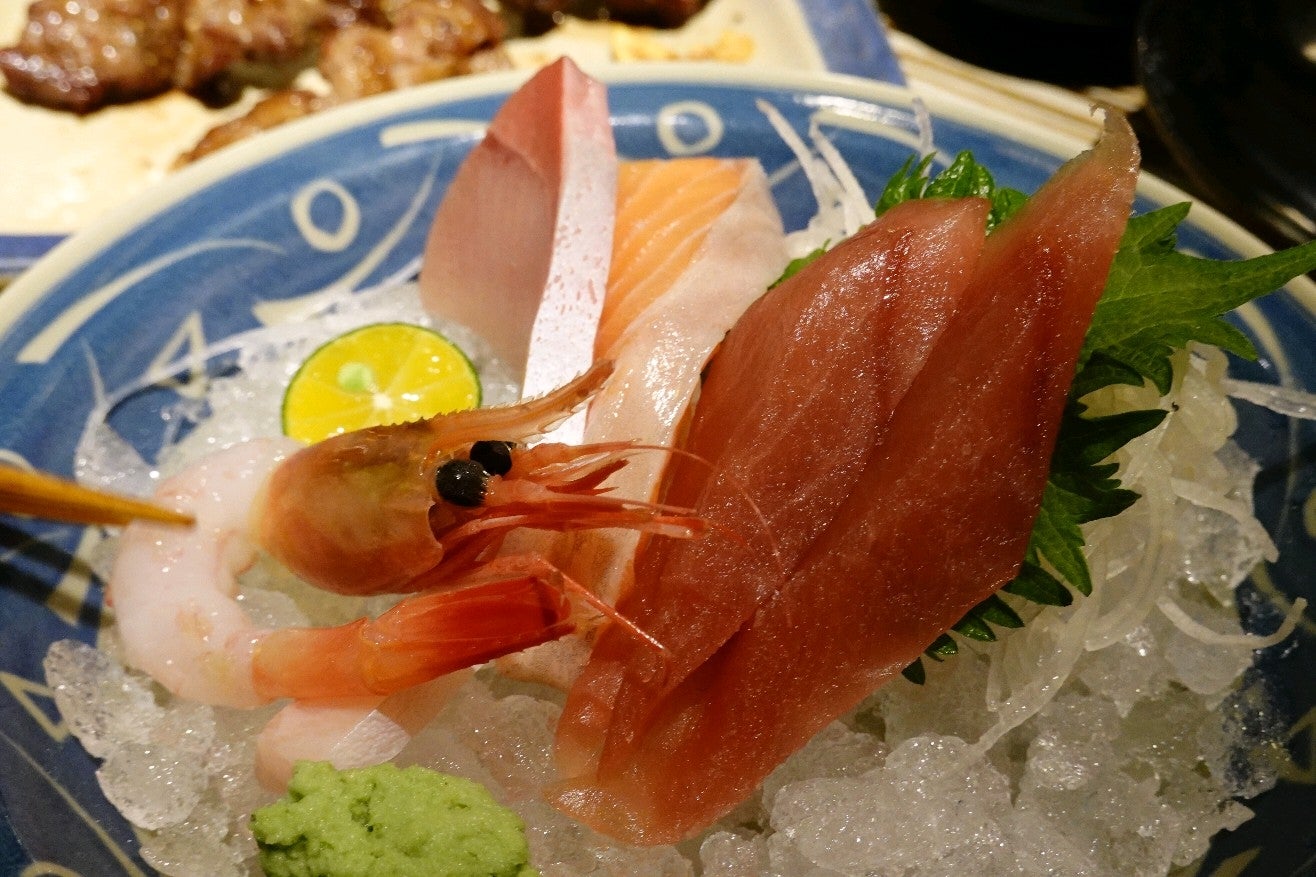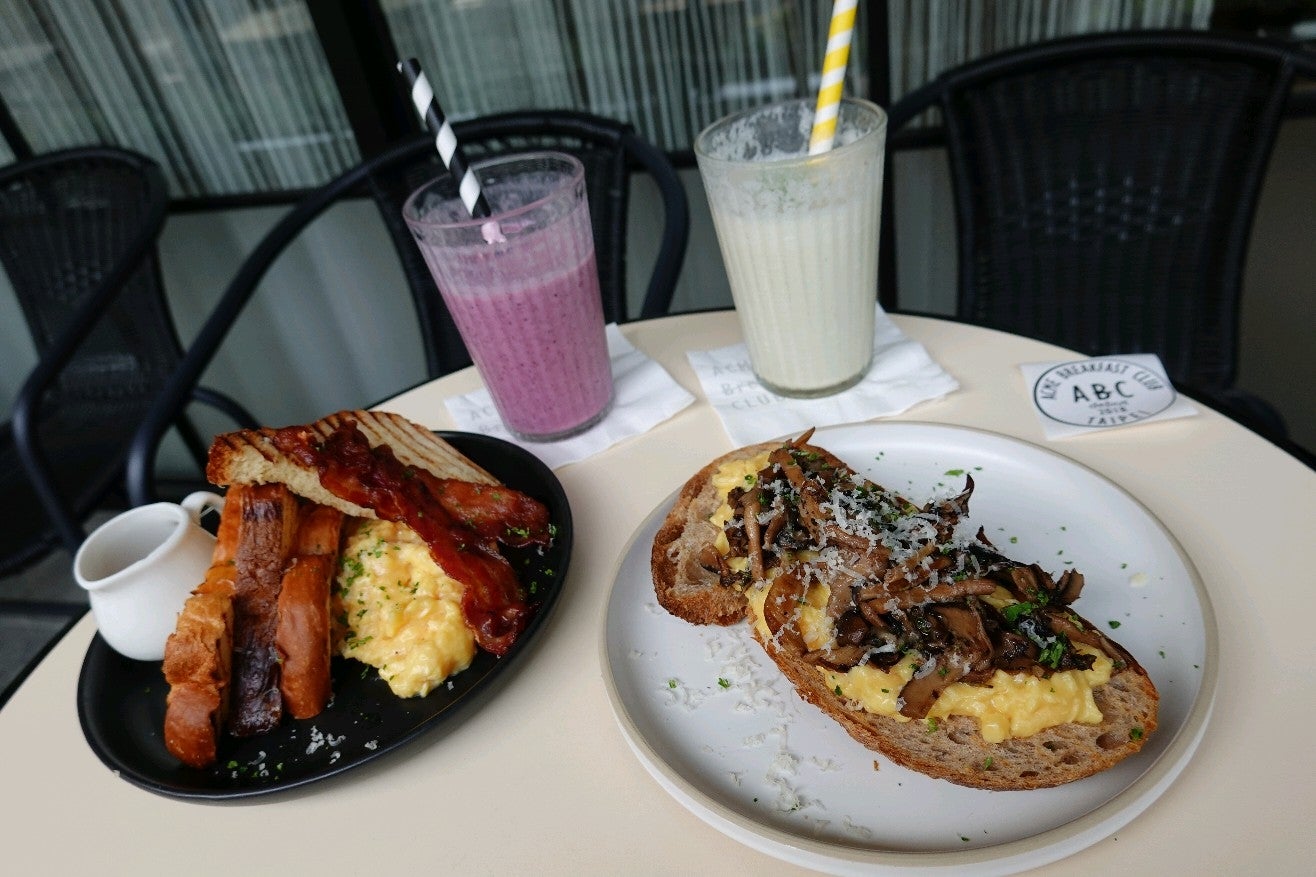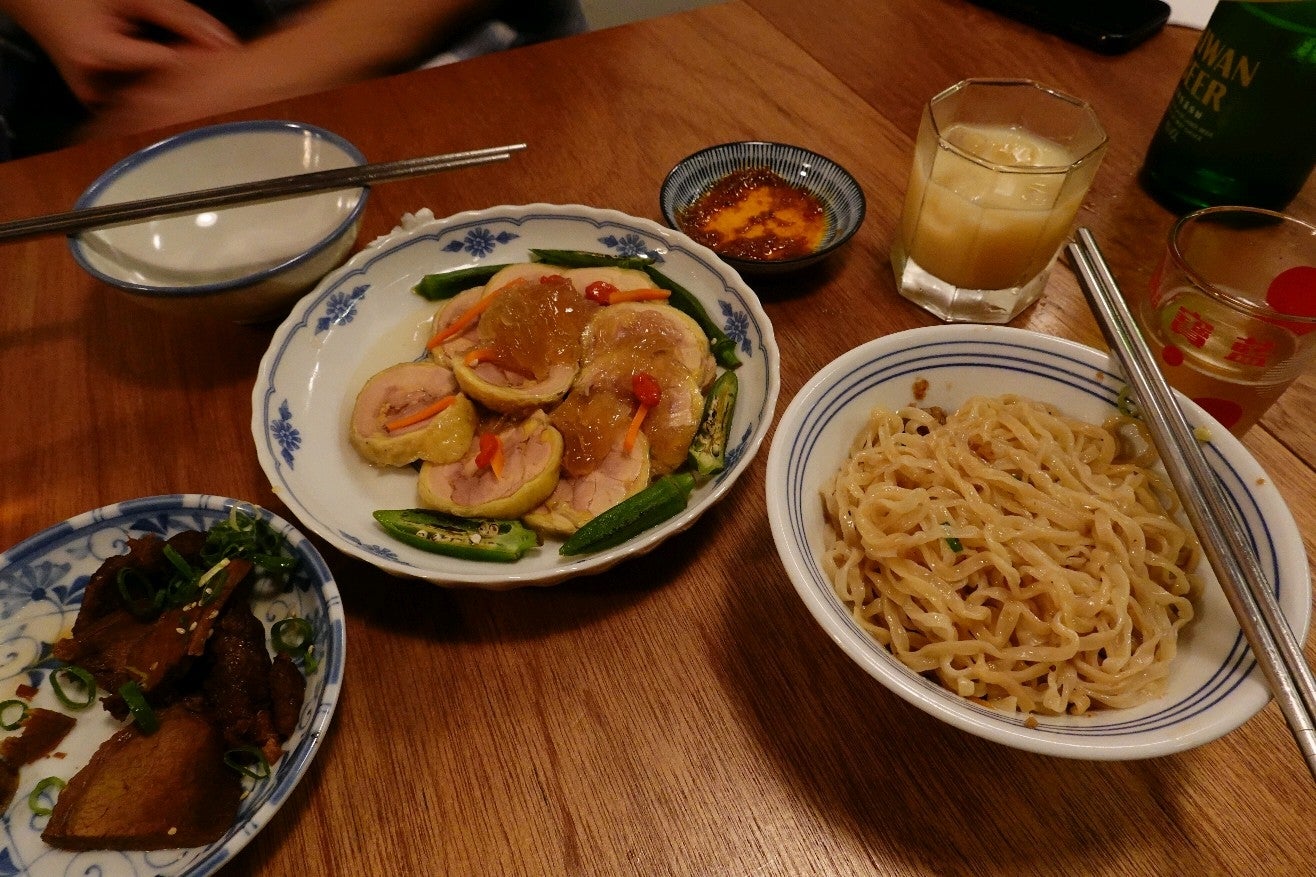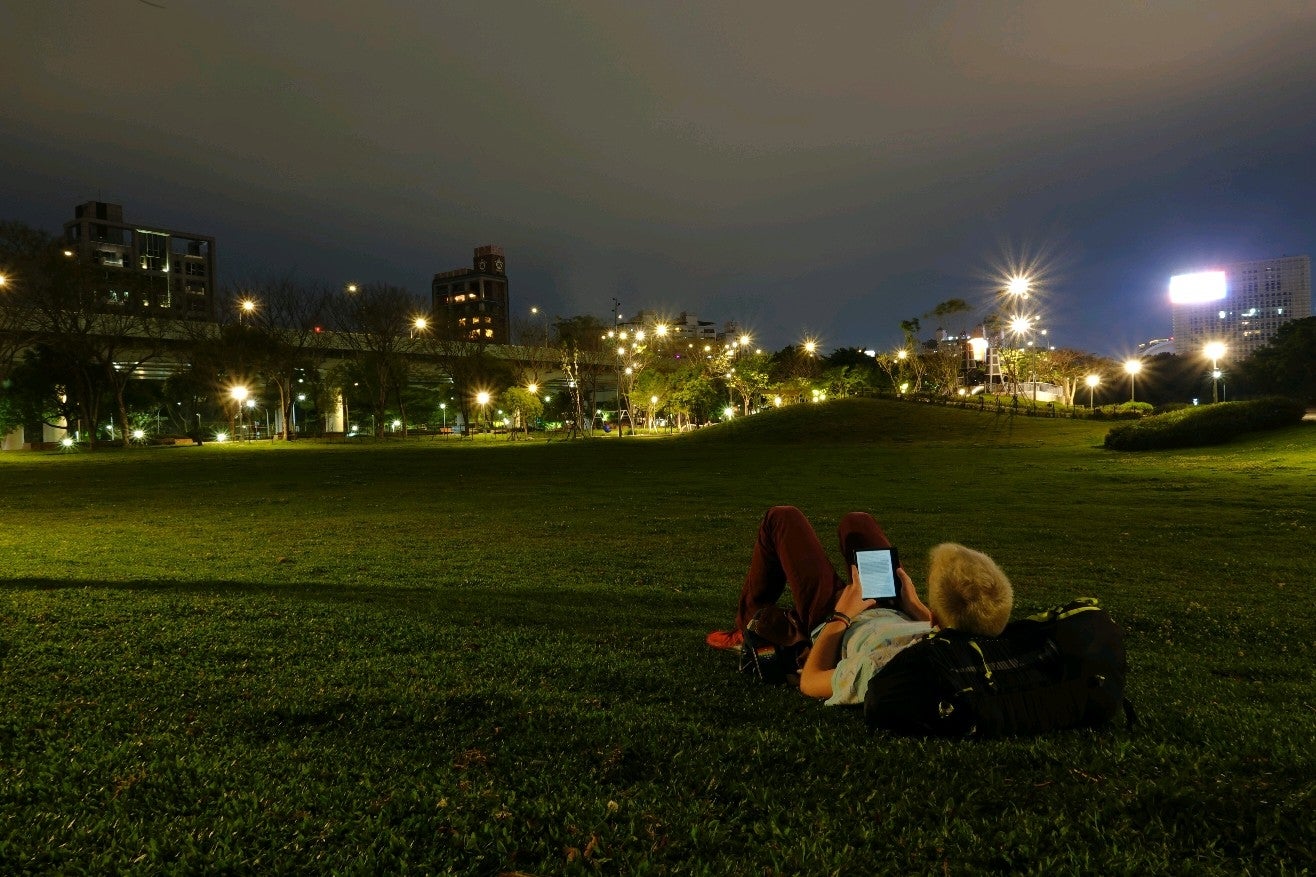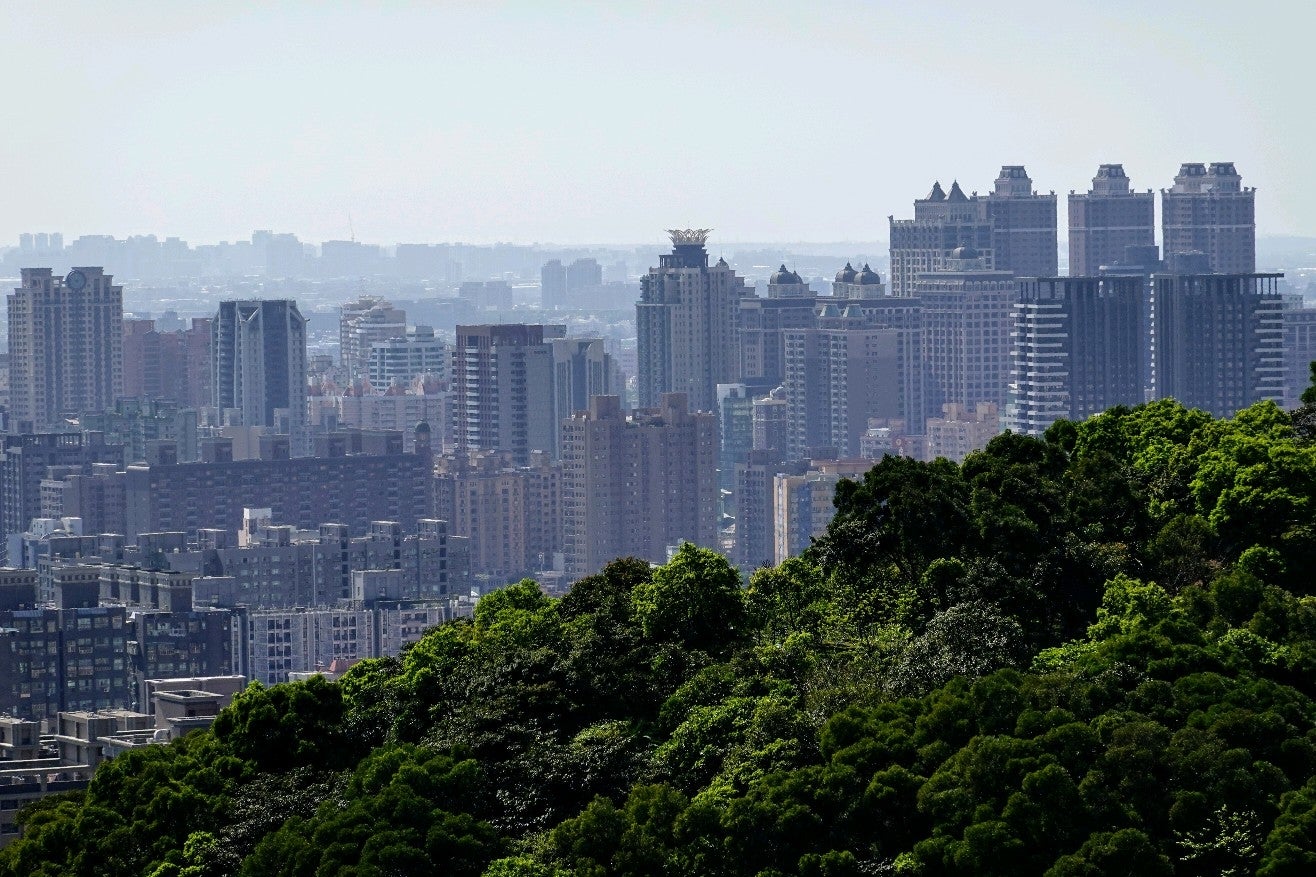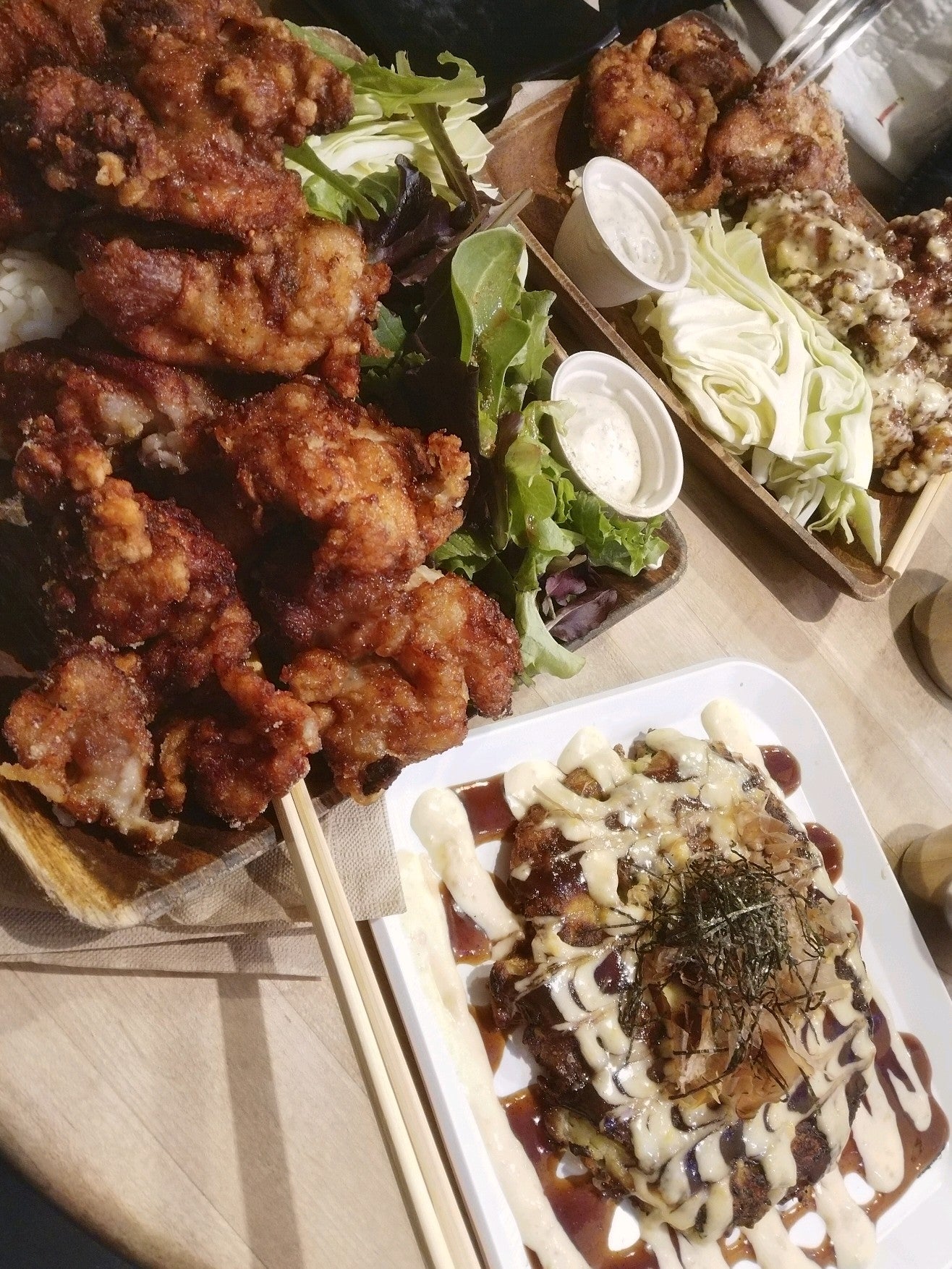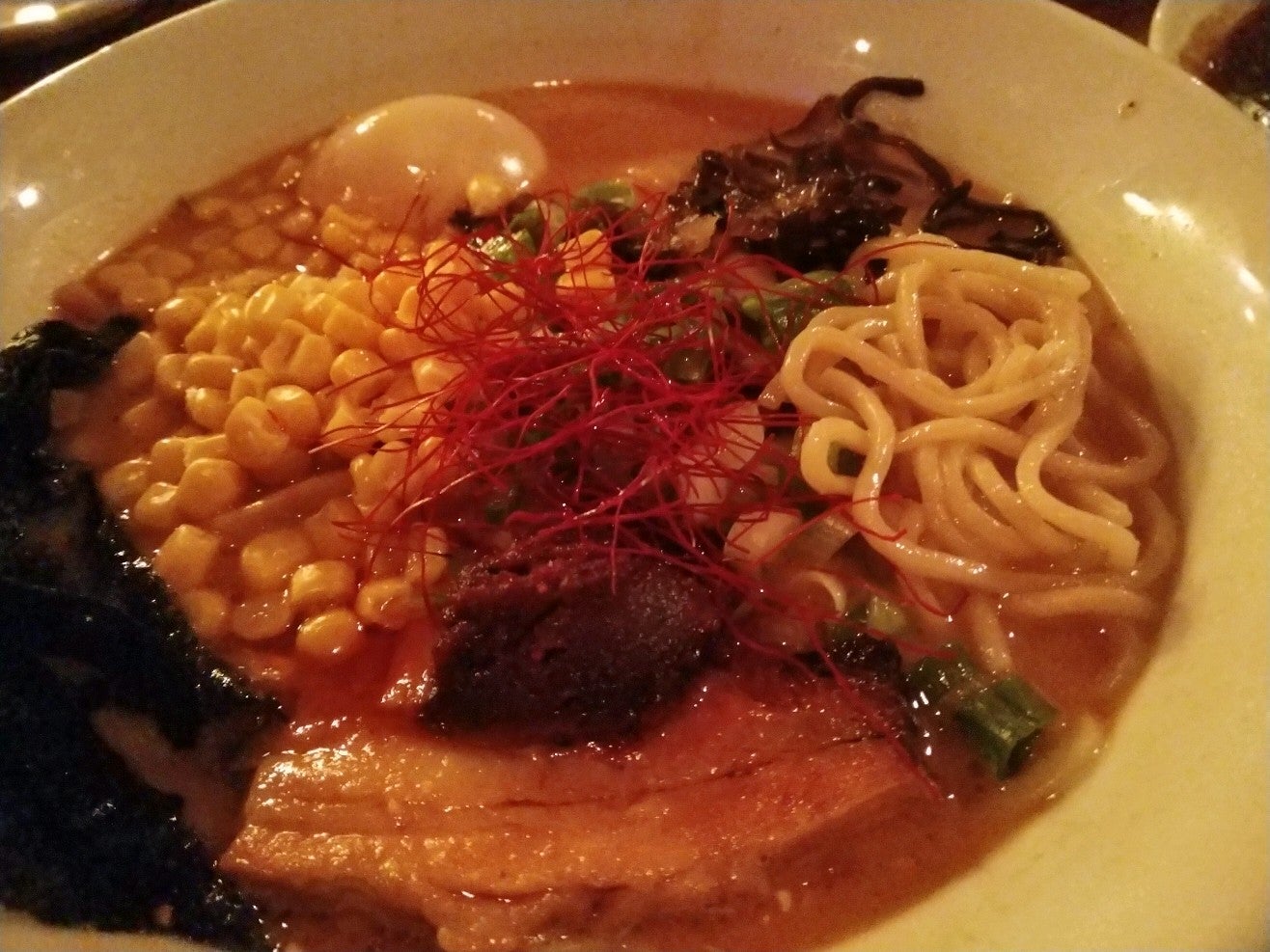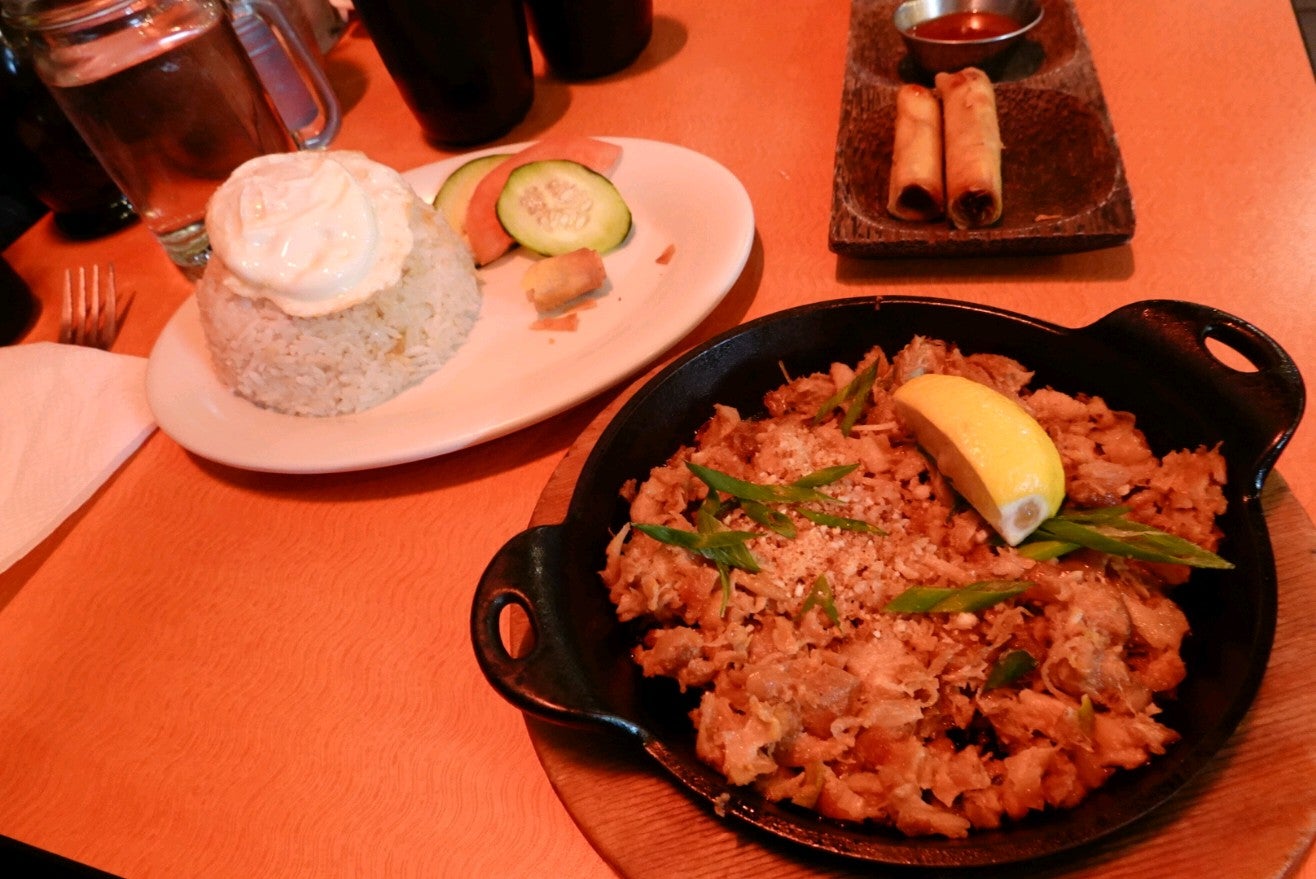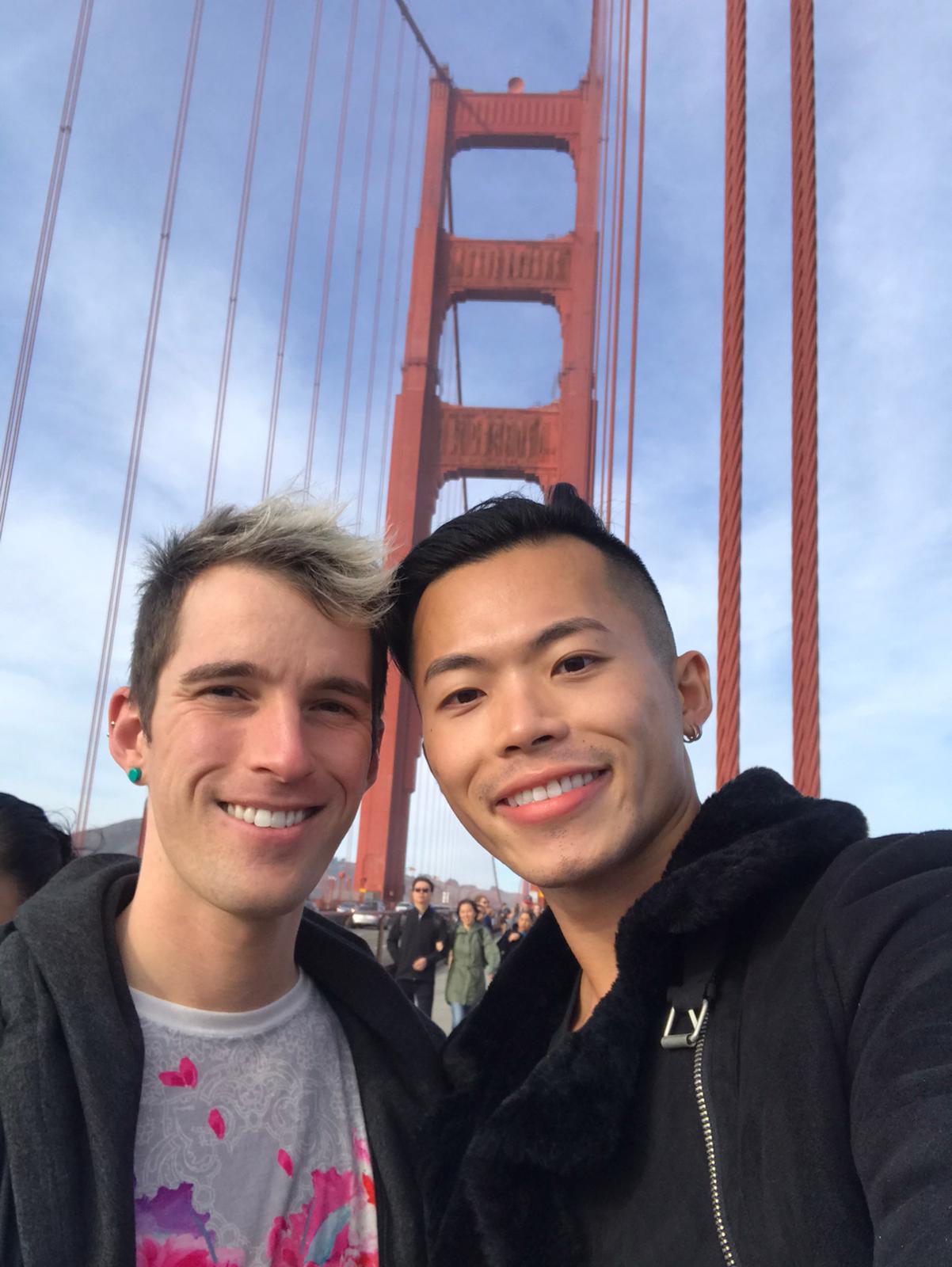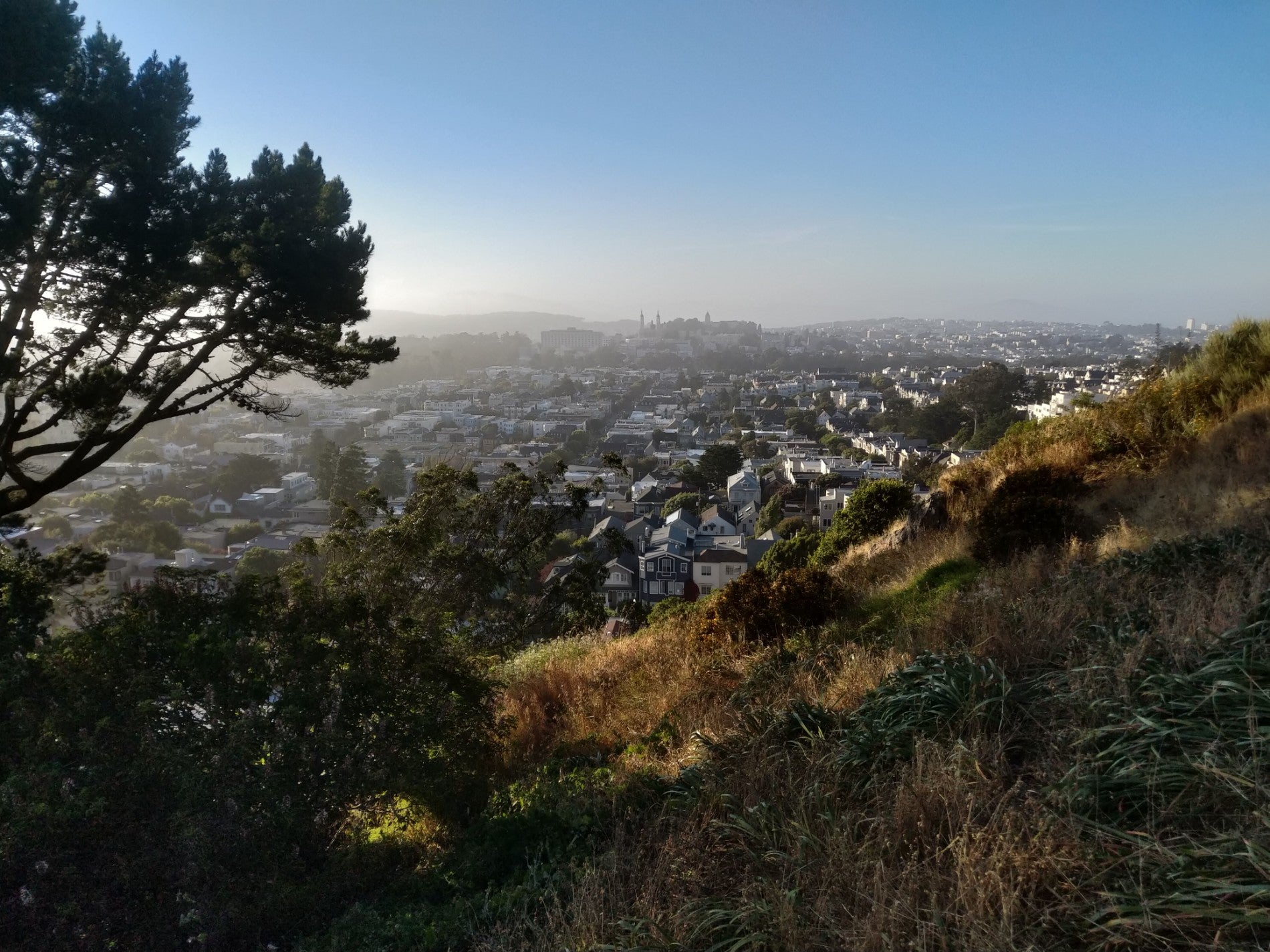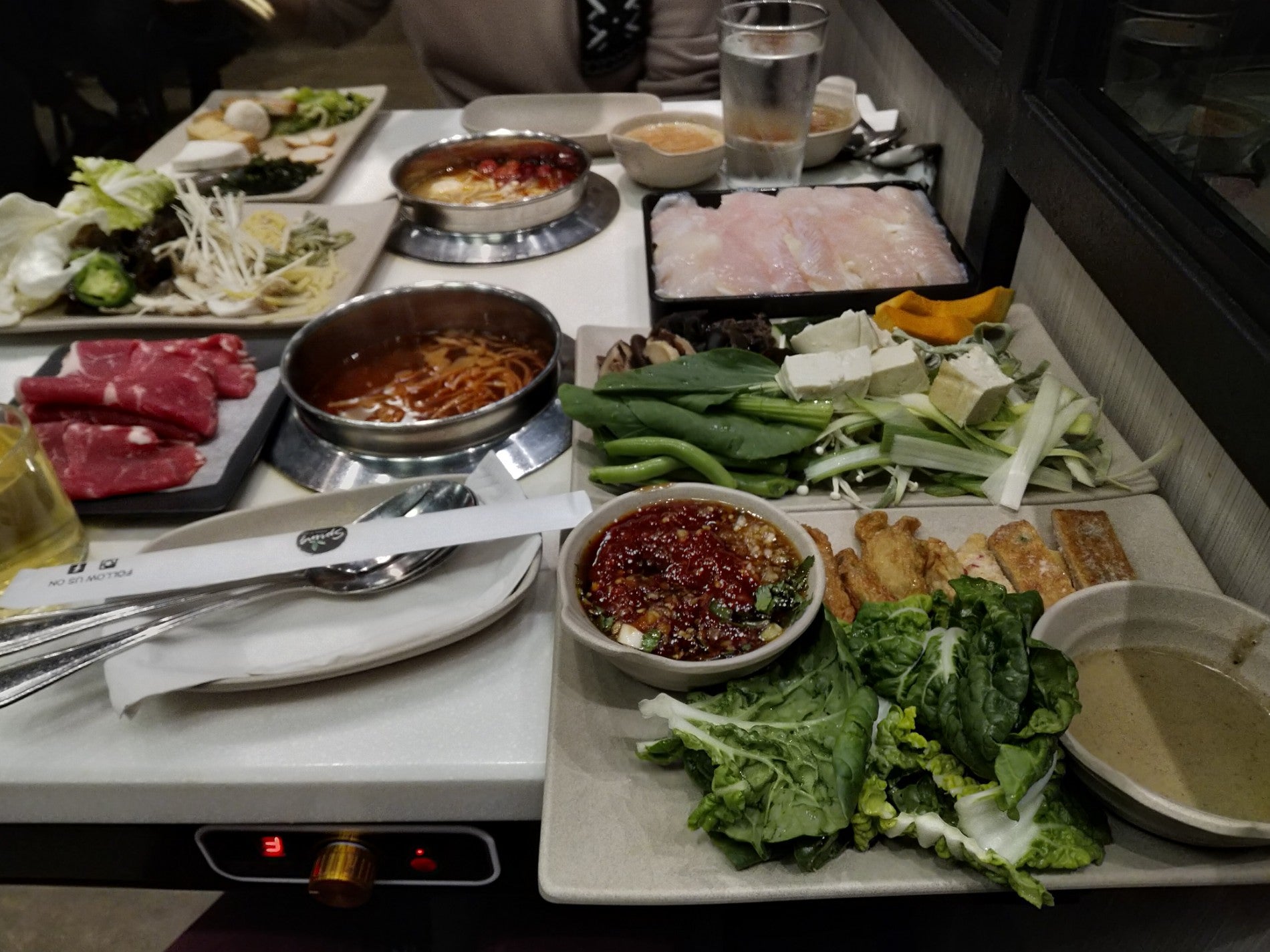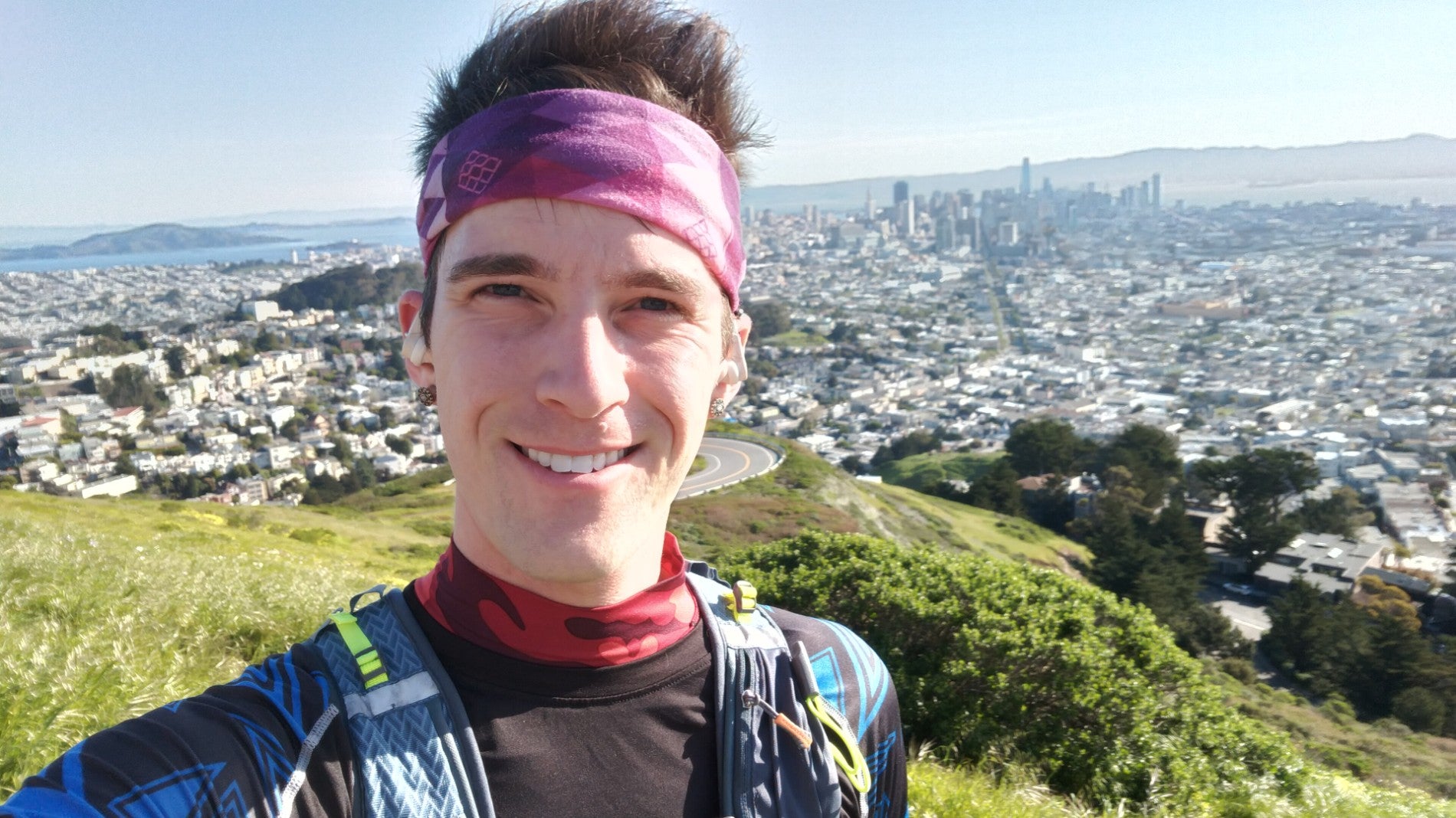Touring Osaka Castle, Umeda Sky Building, Osaka gay bars
There is so much more to do in Kyoto, but yesterday was our last day there, and we spent Monday checking out a few areas of Osaka. We started with Osaka Castle right across from our hotel. Then we went to two temples, Shitenno-ji and Isshin-ji, before going down to Shinsekai and back up to the Kita district, where we ended at some gay bars.
The view from this hotel was quite nice, especially in the morning. I missed sunrise today, but will have another chance tomorrow. I did zoom in on the castle for this photo, but it was still nice, and exclusive feeling, to be right across from Osaka Castle Park. Before heading to breakfast, I had to document the silly clothes drying situation we had going on since the dryer didn’t really dry at the last hotel — something about Japanese clothes driers, not that specific hotel. I had to line dry my clothes when I lived in Japan as well.
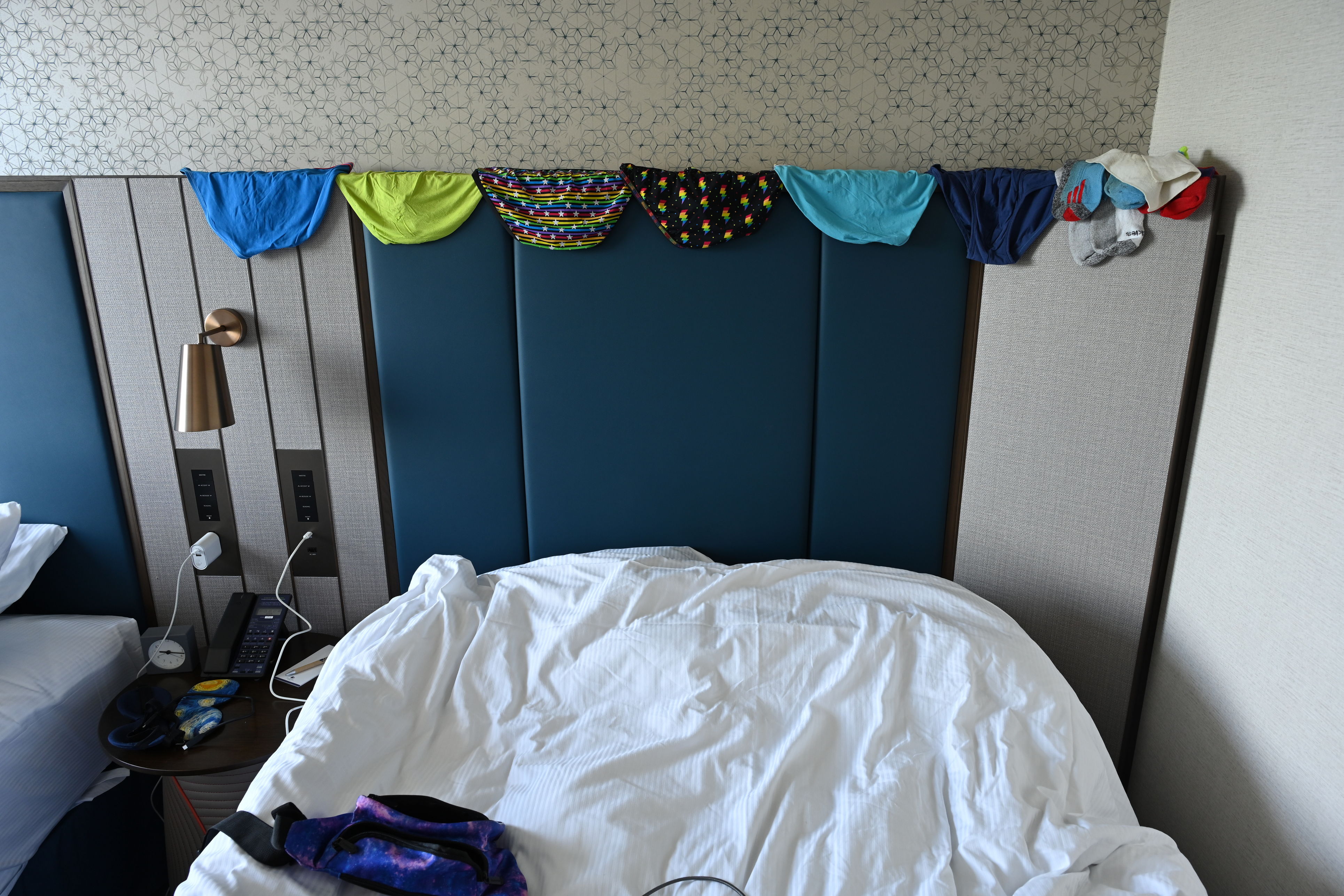
Since the machines couldn't dry our clothes all the way at the last hotel, we had to take them back out and hang them around our new room.
Osaka Castle
Then we headed to Osaka Castle around 11:00. The castle was constructed starting in 1583 to 1597, though like many things in Japan, it’s been rebuilt over time. I think the most recent significant rebuild was due to a certain world war that had severe impacts in Osaka.
The main thing that surprised me in subsequent reading that I wish I knew when I was there is that the castle grounds we see today are actually built on top of the buried original, though this was still 400 years ago. This fact was apparently discovered during an excavation in 1959. This is explained at Osaka Castle Wall Stone Quarry as follows, followed by their helpful diagram:
The Osaka castle seen today was built by the Edo shogunate, with the castle of the Toyotomi period buried deep in the ground. In 1620, the second Tokugawa shogun Hidetada ordered the reconstruction of Osaka castle, which had burned down during the Summer Siege of Osaka (1615). As if to conceal the Toyotomi line’s former glory completely, Osaka castle was rebuilt anew over the old remains, which were buried with vast amounts of earth.
Then apparently that castle was burned down due to a lightening strike in 1665 and was not rebuilt until 1931. This is why the inside is “modern”.
Patton and I made our way into the grounds and walked up to the castle to figure out how to get in. The whole area was quiet and peaceful. I really admired the well fitting, giant blocks of granite all around.
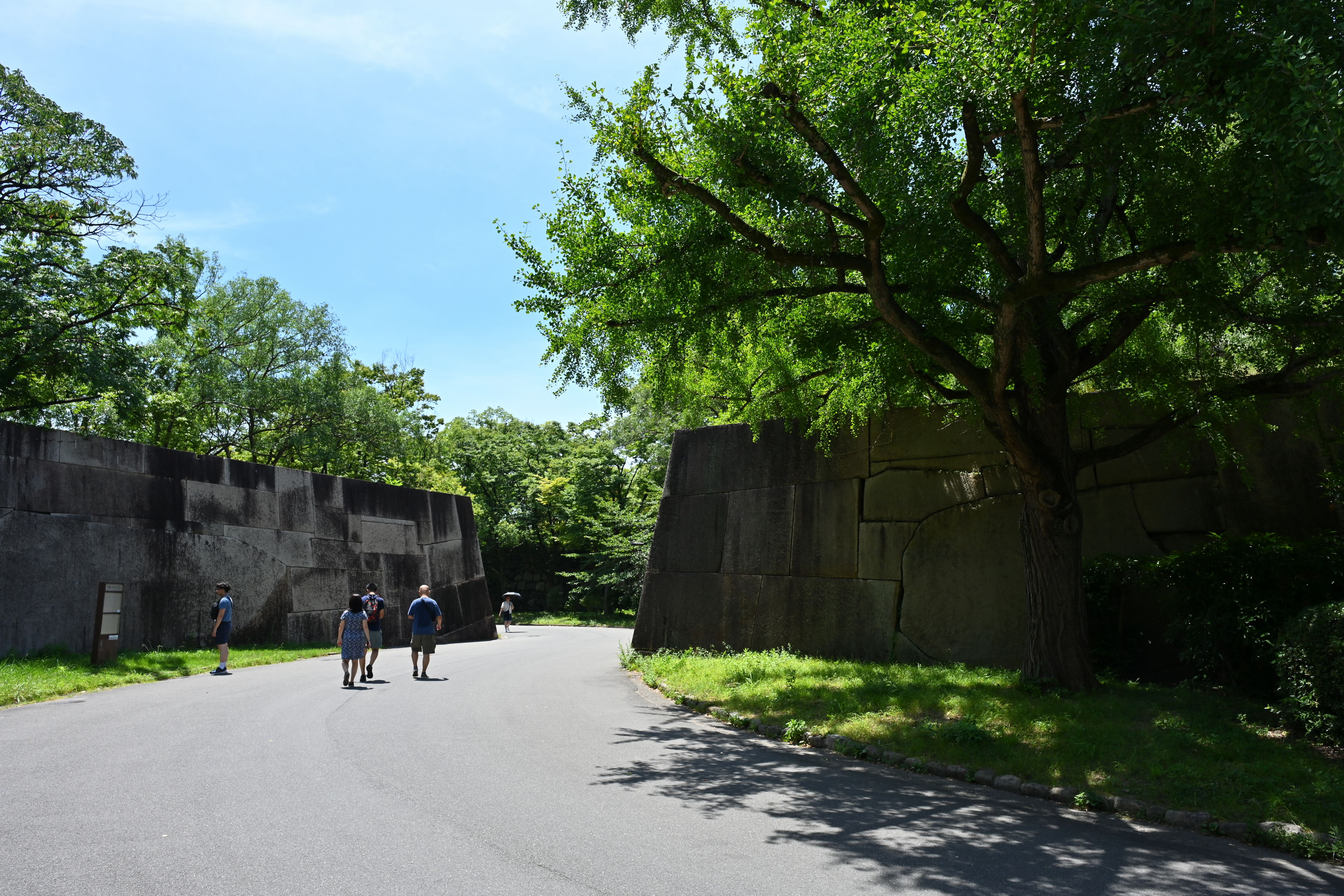
The path into Osaka Castle Park is a quiet, paved way through stone walls and trees. It's very nice, and hot!
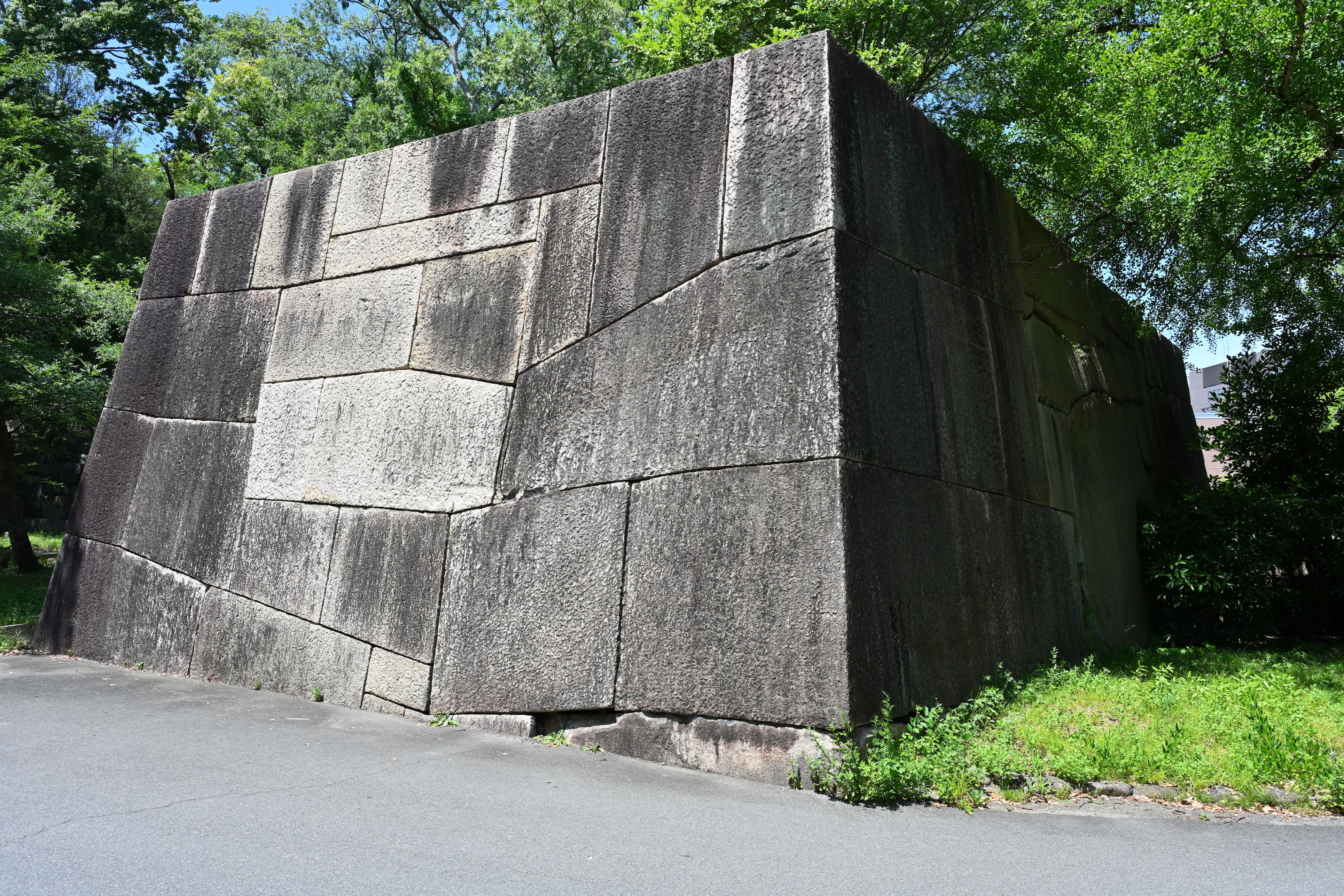
All over the Osaka Castle grounds are these intricately stacked granite boulders that were put in place around 400 years ago. It is pretty remarkable how clean all the lines are.
I wanted to know more about how the heck the giant stones were transported here, but I couldn’t find much about technical details, if they are known at all. Some references mentioned sea kelp might have contributed somehow. But the main interesting thing here is the work was split up among people who had their reputations staked on their contribution, sort of like a competition. According to The Stone Walls of Osaka Castle | October 2021 | Highlighting Japan:
By order of the shogunate, the tasks for constructing the stone walls were shared among the sixty-four daimyo (feudal lords) across western Japan. As evidence of this, stones inscribed with the various daimyo’s crests can be seen in the walls even now. In all, about one million granite stones are used in the walls. These were transported from nearby Mount Rokko and islands in the Seto Inland Sea, and from quarries on the island of Kyushu, some 420 km from Osaka.
It is thought that the large size of the castle walls, as well as their refined and orderly beauty, are a result of the daimyo staking their prestige on the quality of their workmanship.
Later we saw some even bigger stones. But first, we went up to the castle and museum.
It was very hot again, close to 100 degrees F, but I was content to wait in the normal ticket line. It was shaded, and Patton had his shade umbrella I got at Don Quixote. Patton was impatient, though, and started researching if we could skip the line by buying tickets online. Well, it paid off. In just a few minutes he had bought tickets and we could get out and go over to the much shorter line for “Web TICKET”.
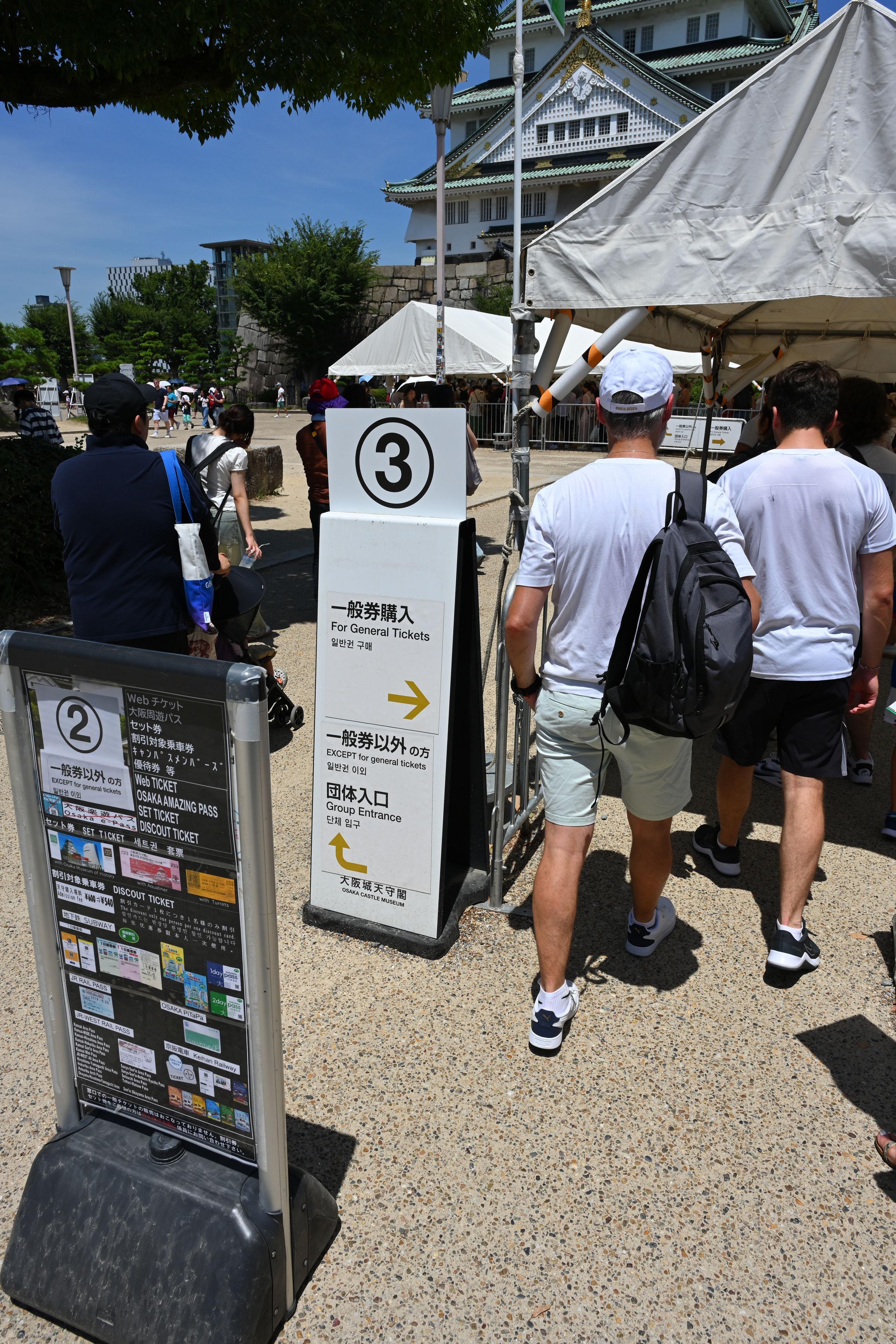
Waiting in line to buy tickets for the Osaka Castle, Patton was able to buy online tickets with his phone, and then we could move to a much shorter line.
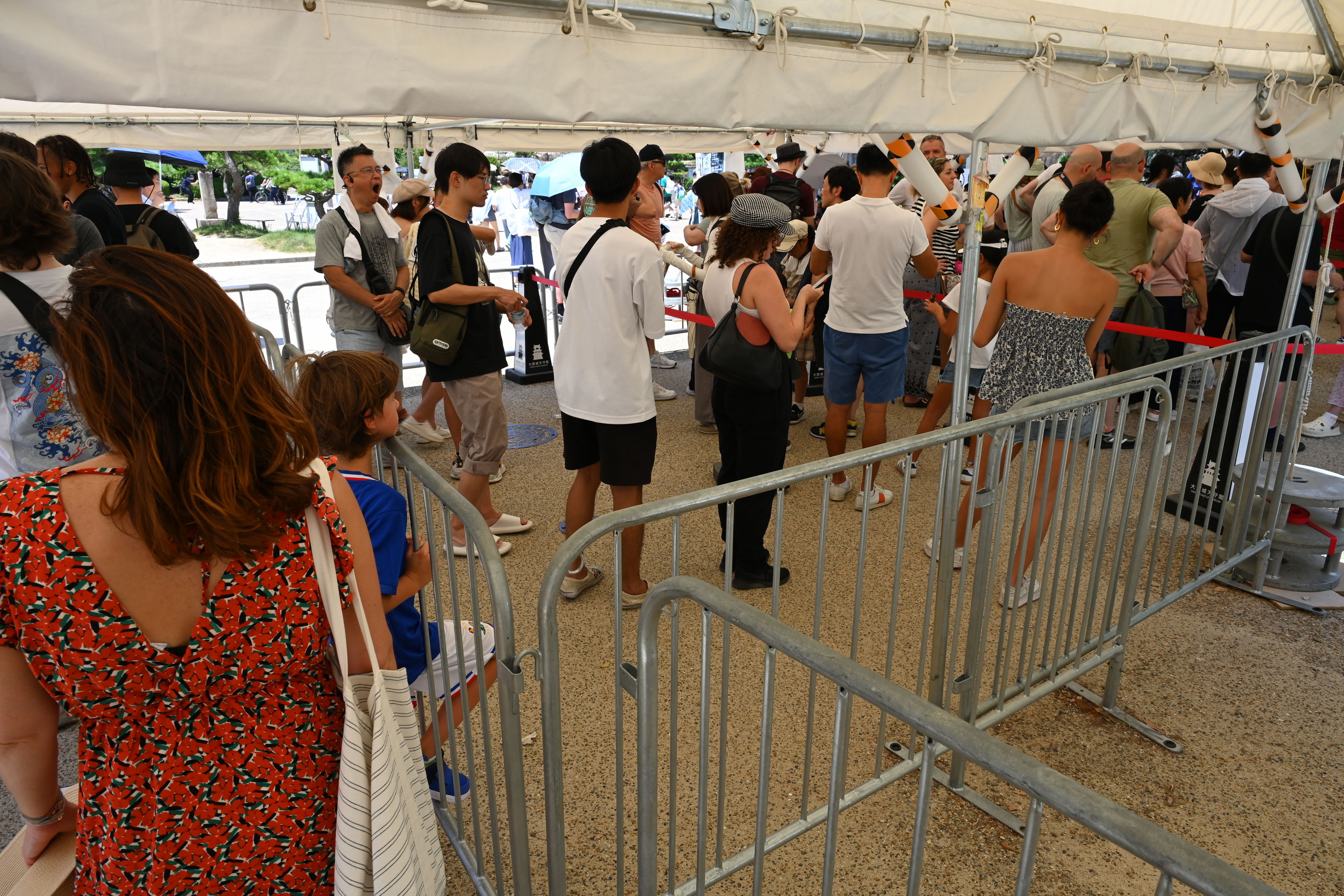
This was in the main line to buy general tickets for the Osaka Castle. While here, Patton was able to buy web tickets with his phone, and then we could move to a much shorter line.
The castle is almost entirely dedicated to a museum housing artifacts about the castle’s history, and a bit about Osaka history as well. Many of the artifacts were copies for display, somewhat disappointingly. Also, they did not allow photography on most of the floors except for two and the observation floor. Overall it was an interesting exhibit. It contained a lot of details about specific families and lineages that I ignored, but I did get a sense of how society at the time was dependent on many feudal lords and there was not a lot of unity across Japan.
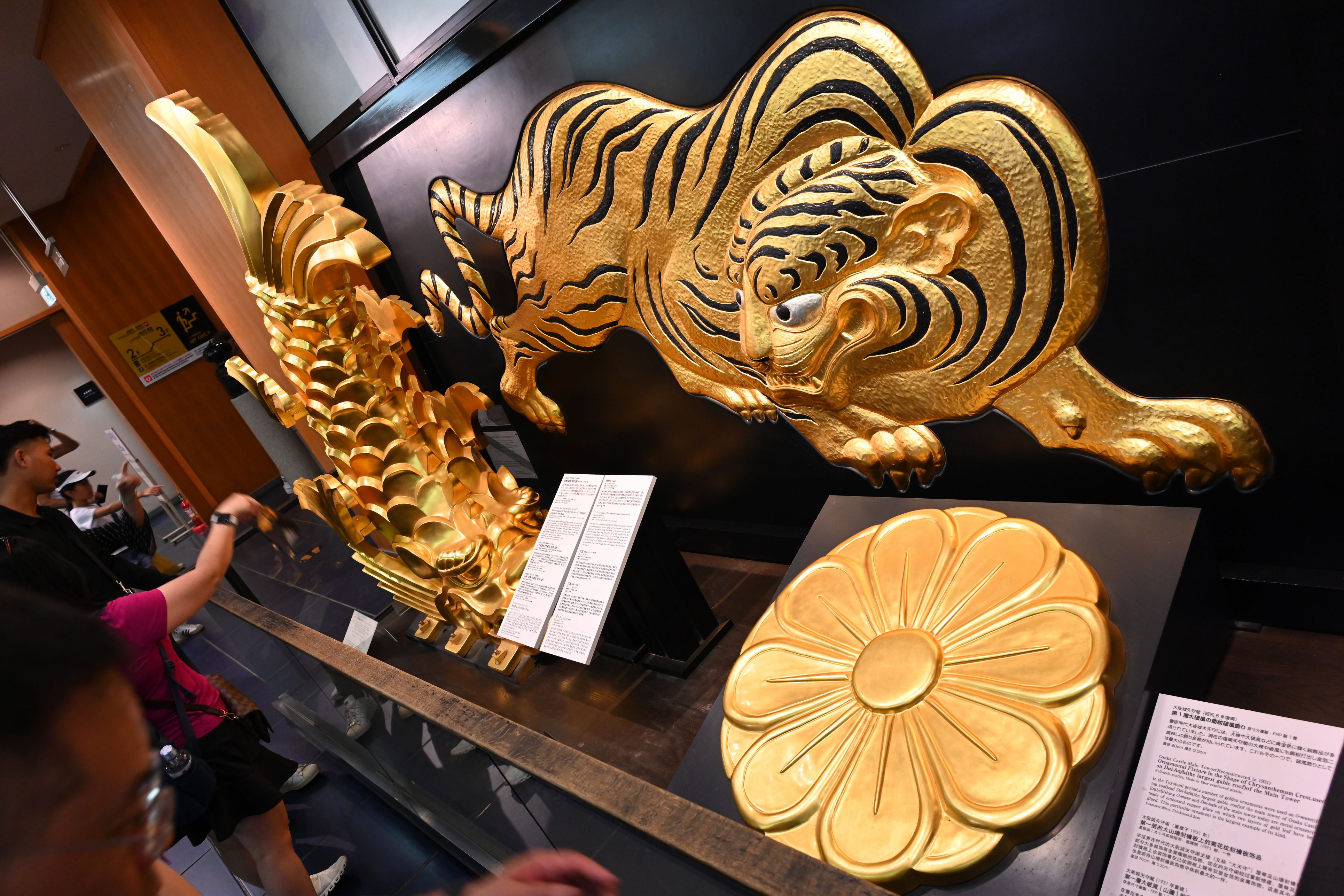
In the Toyotomi period, a number of golden ornaments were used on O-mune (the top roof) and Dai-hafu (the largest gable roof) of the main tower of Osaka Castle. Embellishing O-mune and Dai-hafu of the main tower today are metal ornaments made of embossed copper plate on which two layers of gold leaf have been glued. This particular ornament is the largest example of its kind...Items from the second floor of Osaka Castle museum where they allowed photos. No photos on floors 3 through 6.
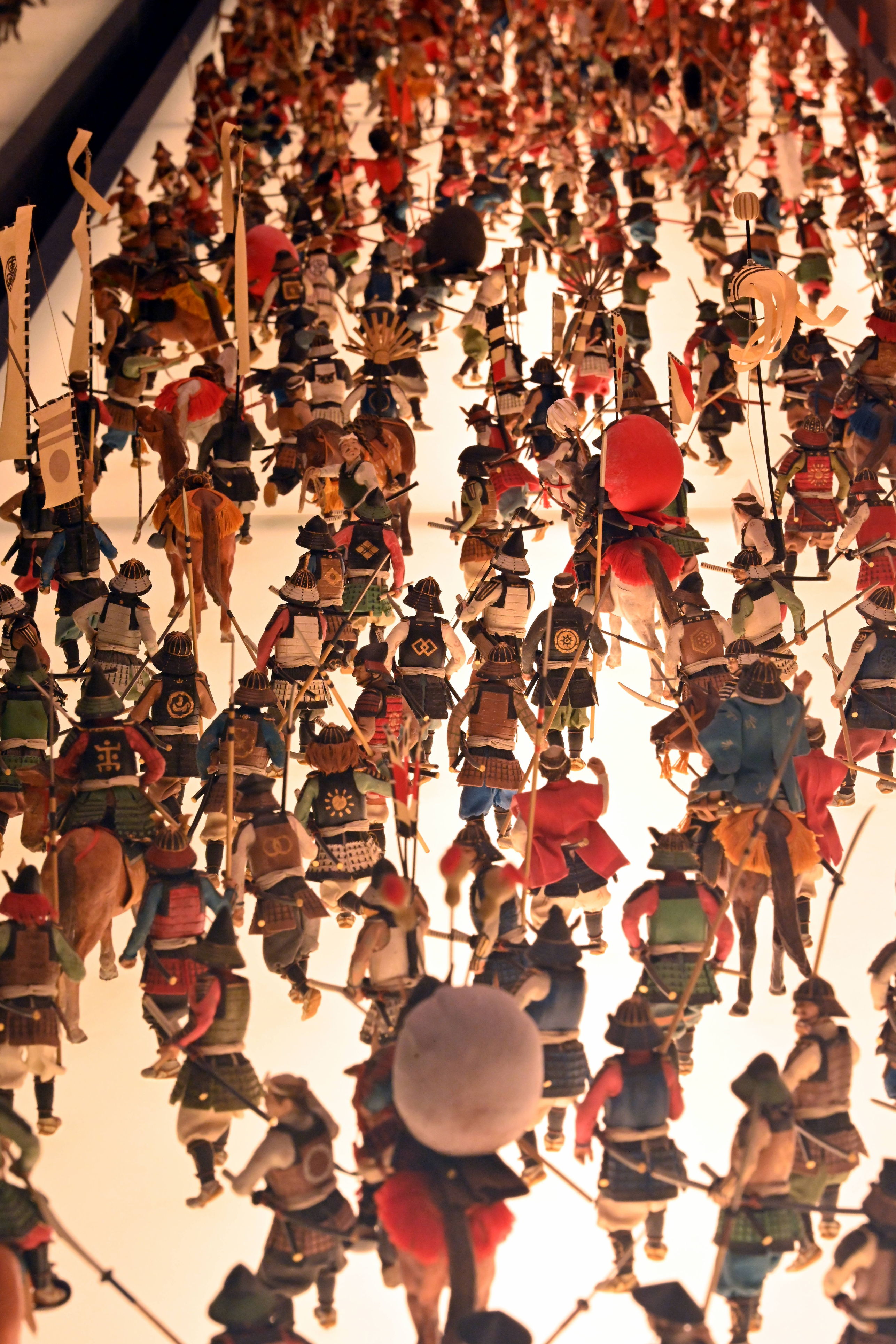
This was a quite elaborate depiction of one of battles of the siege of Osaka from around 1614, I think. Items from the seventh floor of Osaka Castle museum where they allowed photos. No photos on floors 3 through 6.
We made our way up to the top floor where the observation deck is. This outdoor area felt very similar to the one I visited in September in Warsaw, Poland, at the Palace of Culture and Science 30th floor. The whole thing was enclosed in standard looking fencing with a small opening for less obstructed viewing in the center. This presumably prevents people from accidentally falling over the railings, and maybe also prevents birds from entering.

One of the golden ornaments from the Toyotomi period (though I am not sure how old this one is), made of embossed copper plate on which two layers of gold leaf have been glued. Views from the eighth floor observation deck of the Osaka Castle museum in Osaka, Japan.
We took it all in, then headed back down and out the other side of the grounds. This is where we saw the largest cut stone on the site, and apparently in all of Japan.
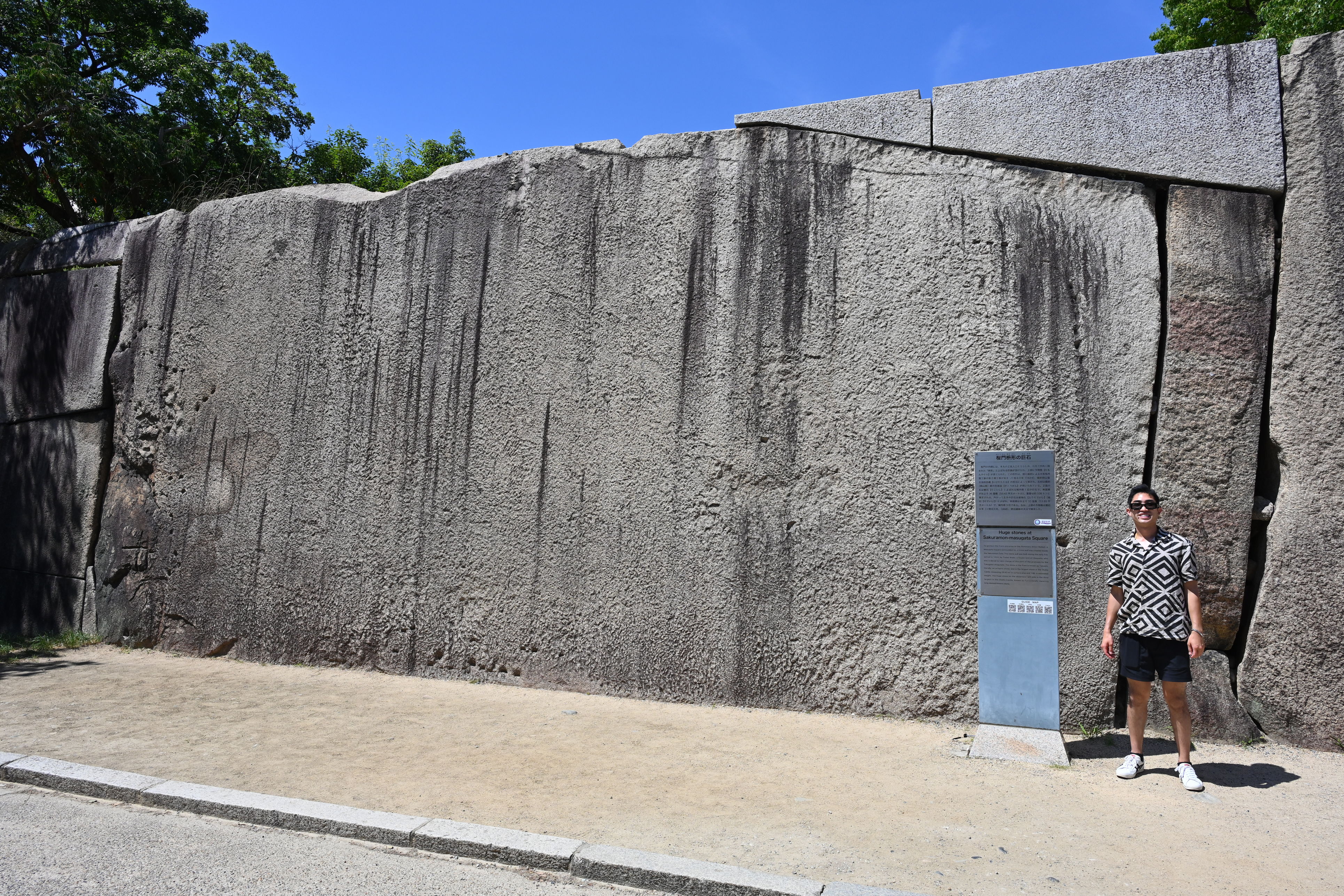
Outside Osaka Castle. The sign says: Huge stones at Sakuramon-masugata Square. To protect the front entrance to the Hommaru (Inner Bailey), a Masugata Square surrounded by a stone wall was created inside the Sakuramon Gate. This stone wall was built during the early Edo period in 1624, by Tadao Ikeda, a feudal lord of Okayama, who was ordered to take charge of this part of the premises by the Tokugawa shogunate. The stone in the front in known as Takoishi, literally, on octopus stone, and is the largest stone in Osaka Castle, measuring 59.43 square meters in surface area and 108t in estimated weight. The huge stone on the observers' left side is the third largest in the Osaka Castle, known as Furisodeishi, meaning long-sleeved kimono stone.
Then we walked through Osaka Castle Park to Hokoku Shrine before exiting.
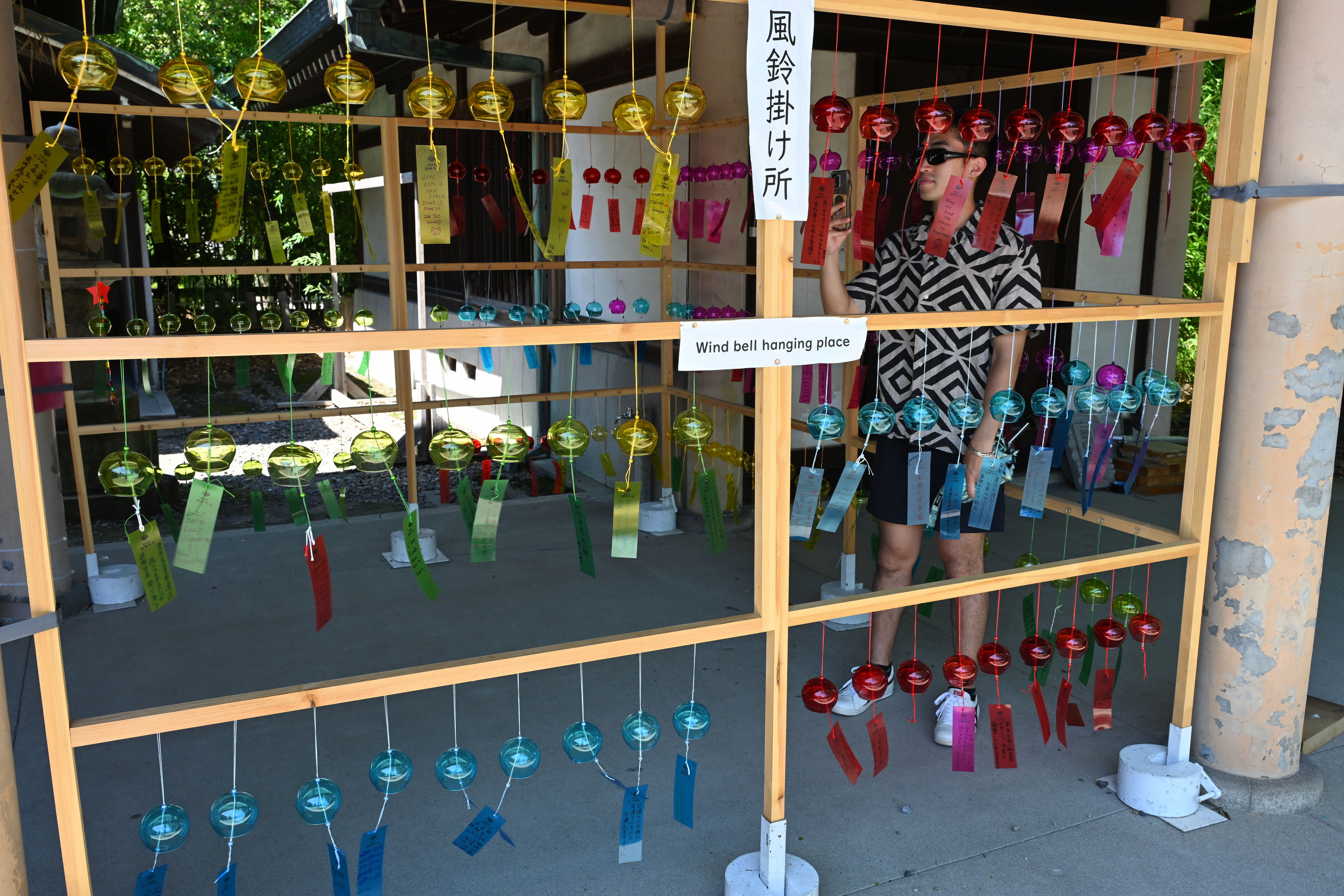
Many wind chimes at the Shinto Hokoku Shrine in Osaka Castle Park, built in the 1800s. July 29, 2024.
Many wind chimes at the Shinto Hokoku Shrine in Osaka Castle Park, built in the 1800s. July 29, 2024.
Shitennō-ji
We continued down street to Tanimachiyonchome Station and took the Tanimachi Line to Shitennōji-mae Yūhigaoka Station to visit the Buddhist temple Shitennō-ji.
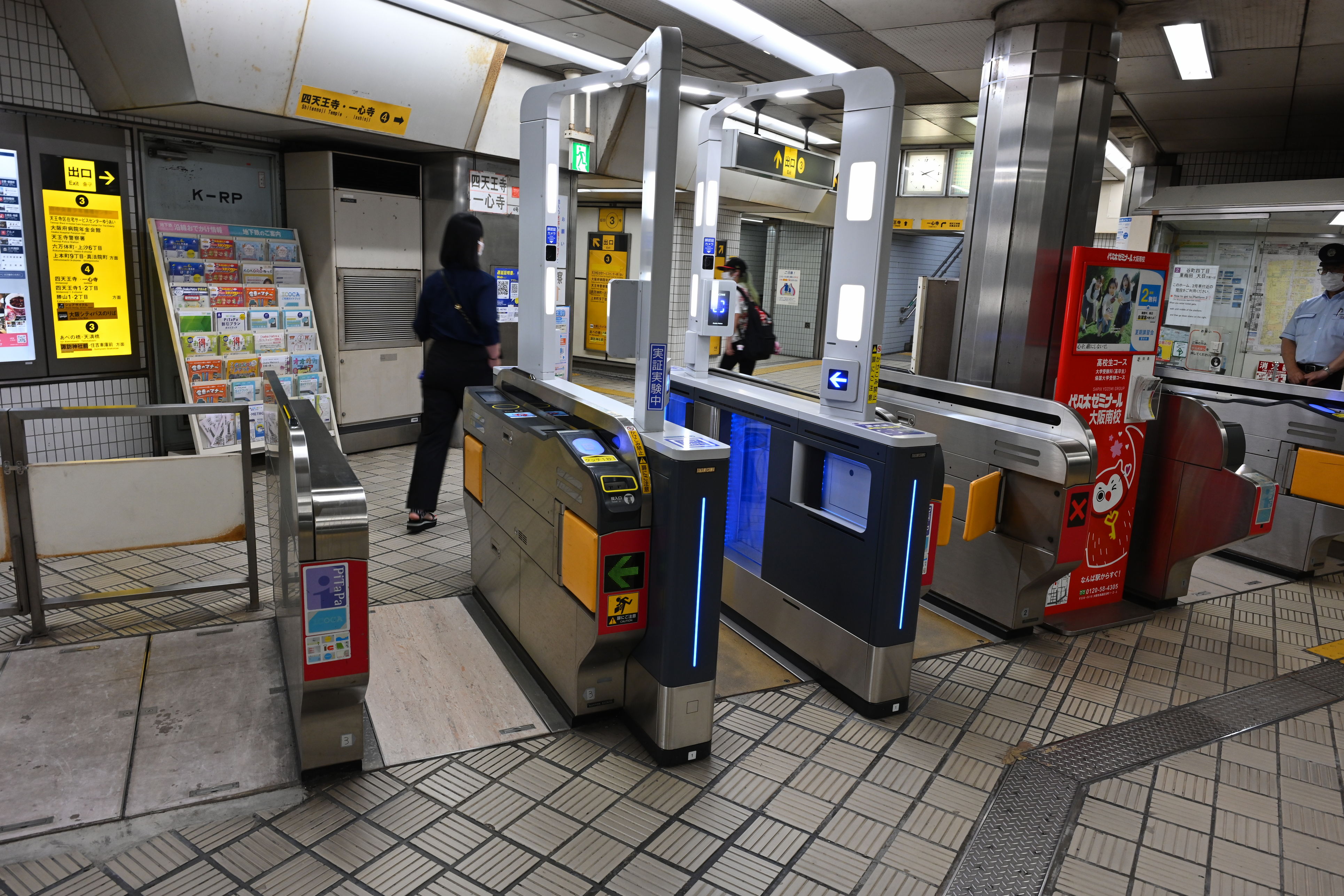
I saw a demonstration of what are apparently going to be more widespread soon, facial recognition ticket gates, at Shitennōji-mae Yūhigaoka Station in Osaka, Japan.
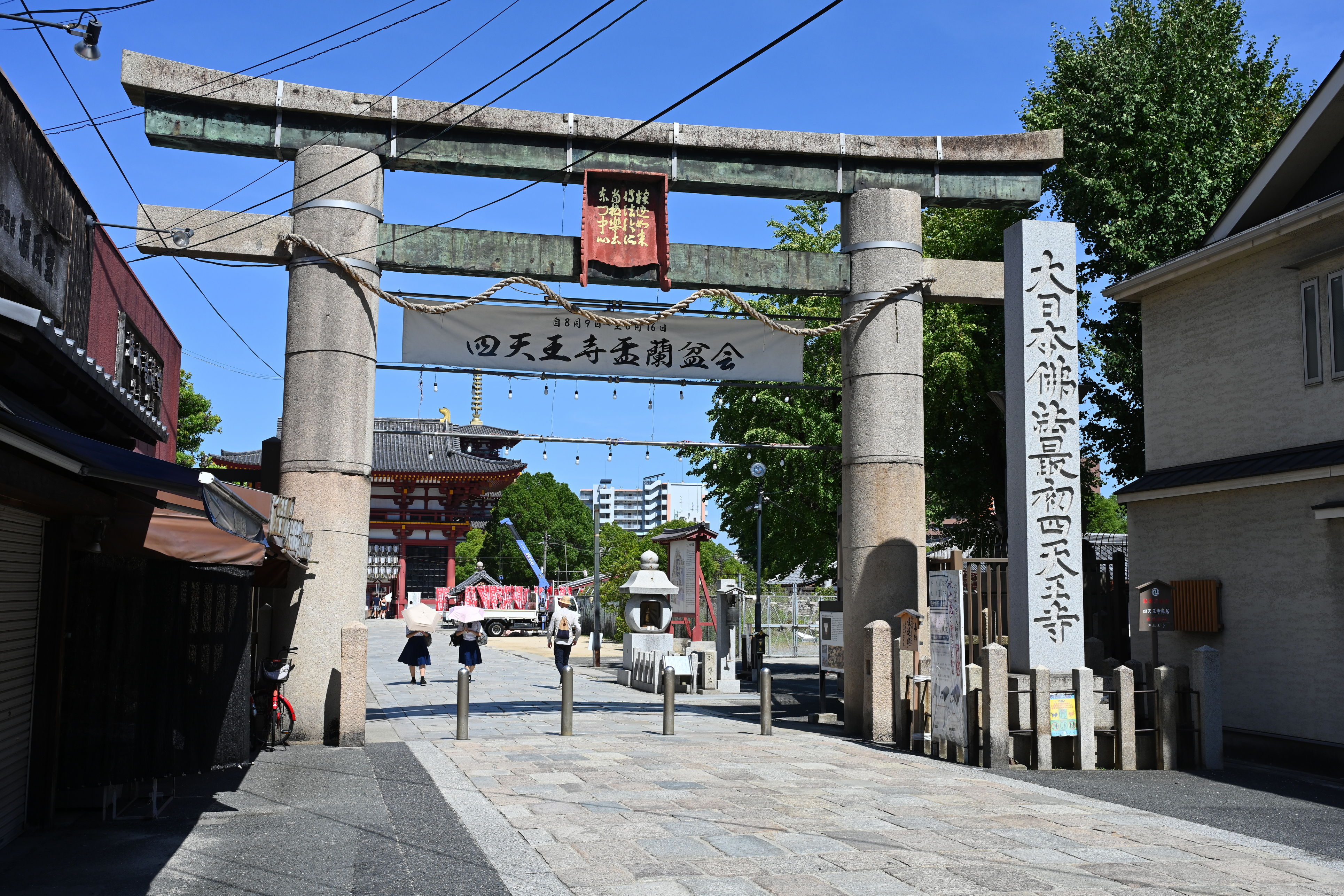
The big stone torii (石鳥居) at the entrance to the street of Buddhist temple Shitennō-ji in Osaka, Japan.
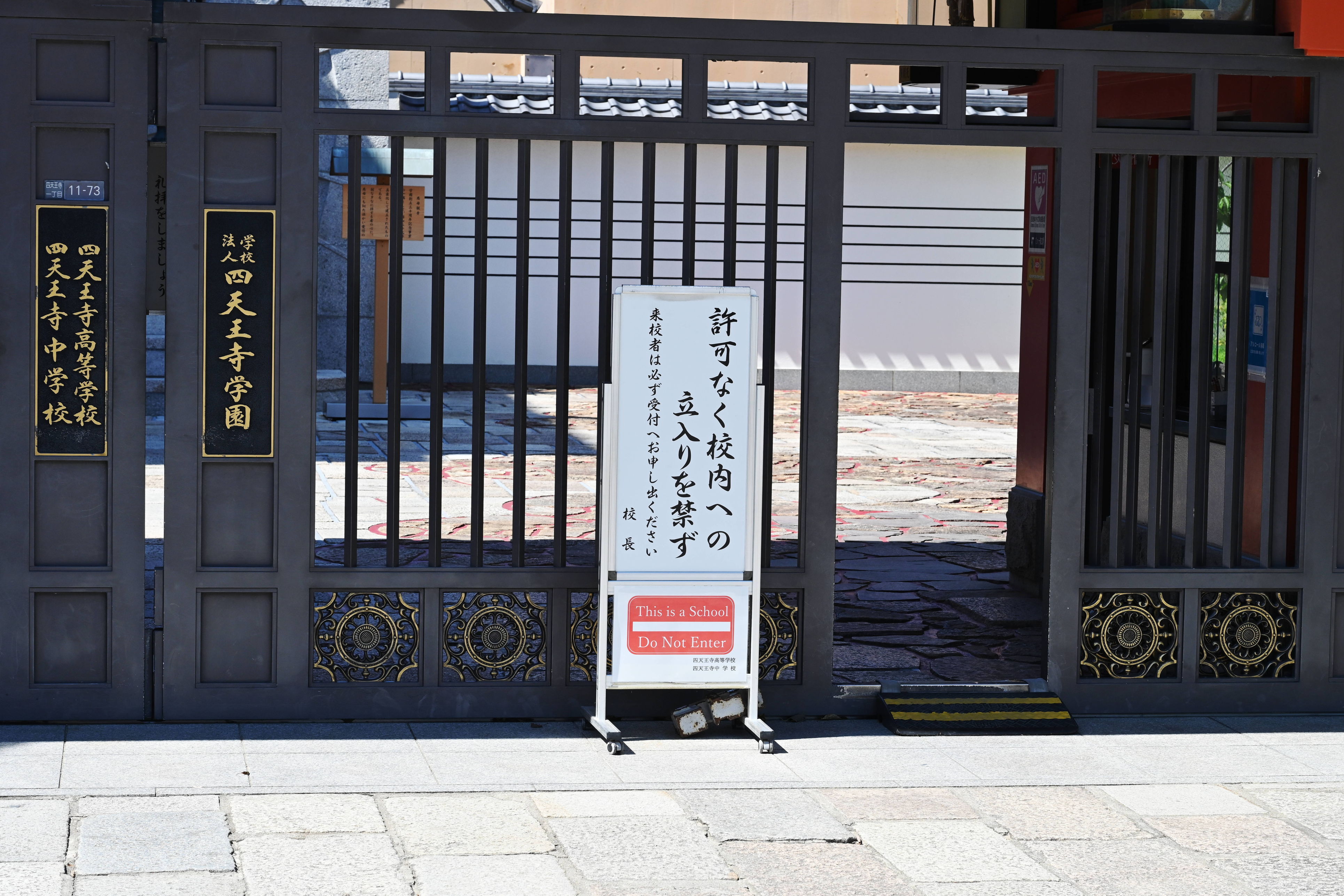
The road leading to Buddhist temple Shitennō-ji in Osaka, Japan, passes by the Shitennoji Junior High and High Schools. Based on this sign, I wonder if they've had issues with tourists flooding the school grounds accidentally.
Shitennō-ji is known as the “Temple of the Four Heavenly Kings“. It was established 593 and is possibly “the first Buddhist and oldest officially-administered temple in Japan”. Apparently it was constructed to help promote Buddhism at a time when it was not popular in Japan.
The most prominent thing here is the Five Story Pagoda. We checked that out first. The five levels represent the five elements: earth, air, fire, water, and heaven. We covered our shoes with plastic bags, though we apparently were supposed to take the shoes off and carry them in the bags. We went up the five floors, which all housed tons of these little gold Buddha things with names on them. It seemed to be organized chronologically, and some of the floors had much older ones. I have no idea what they were, though. At the top was a lookout, but it was very hard to see anything.
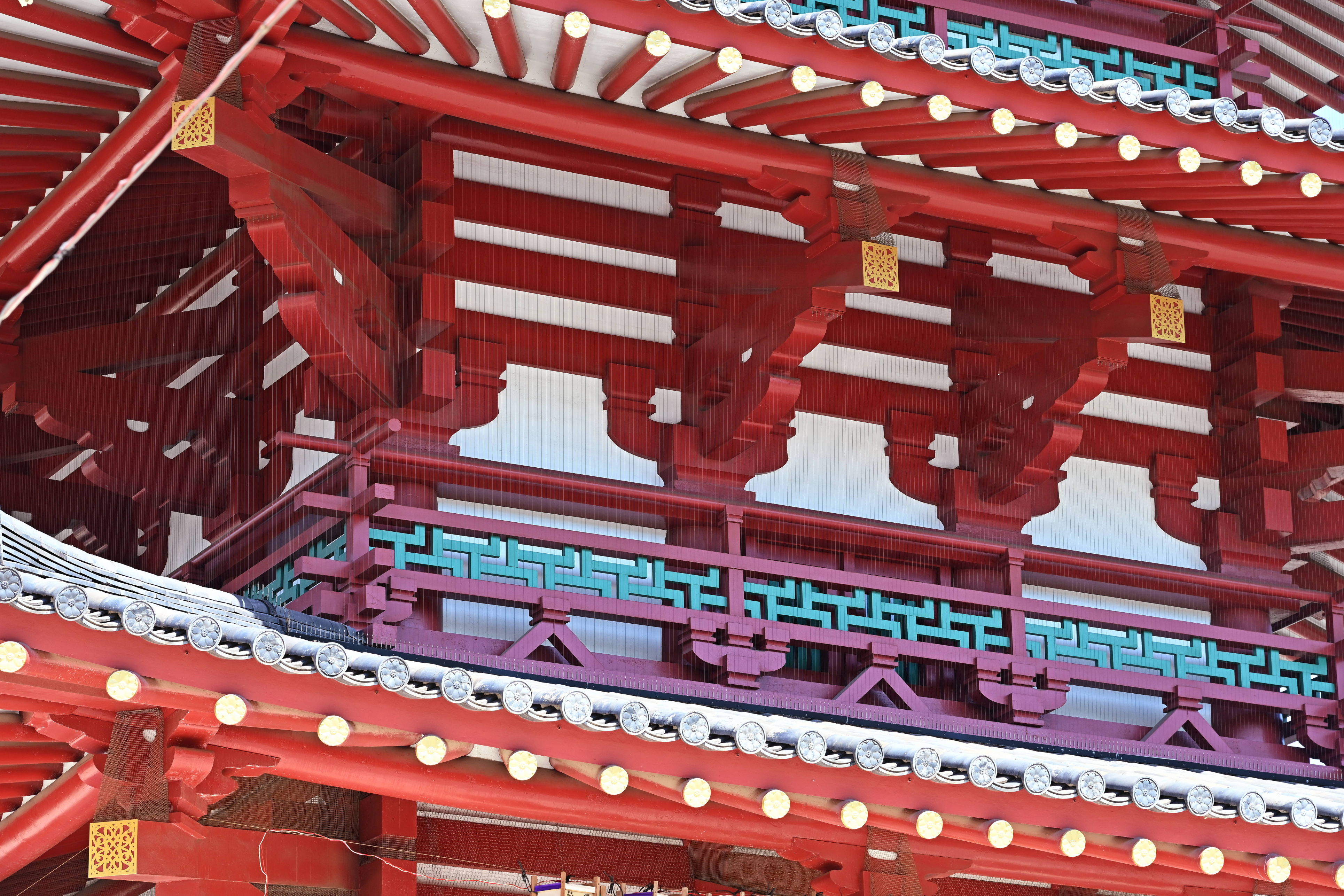
The Five-Storied Pagoda of Buddhist temple Shitennō-ji in Osaka, Japan. The five levels represent the five elements: earth, air, fire, water, and heaven.
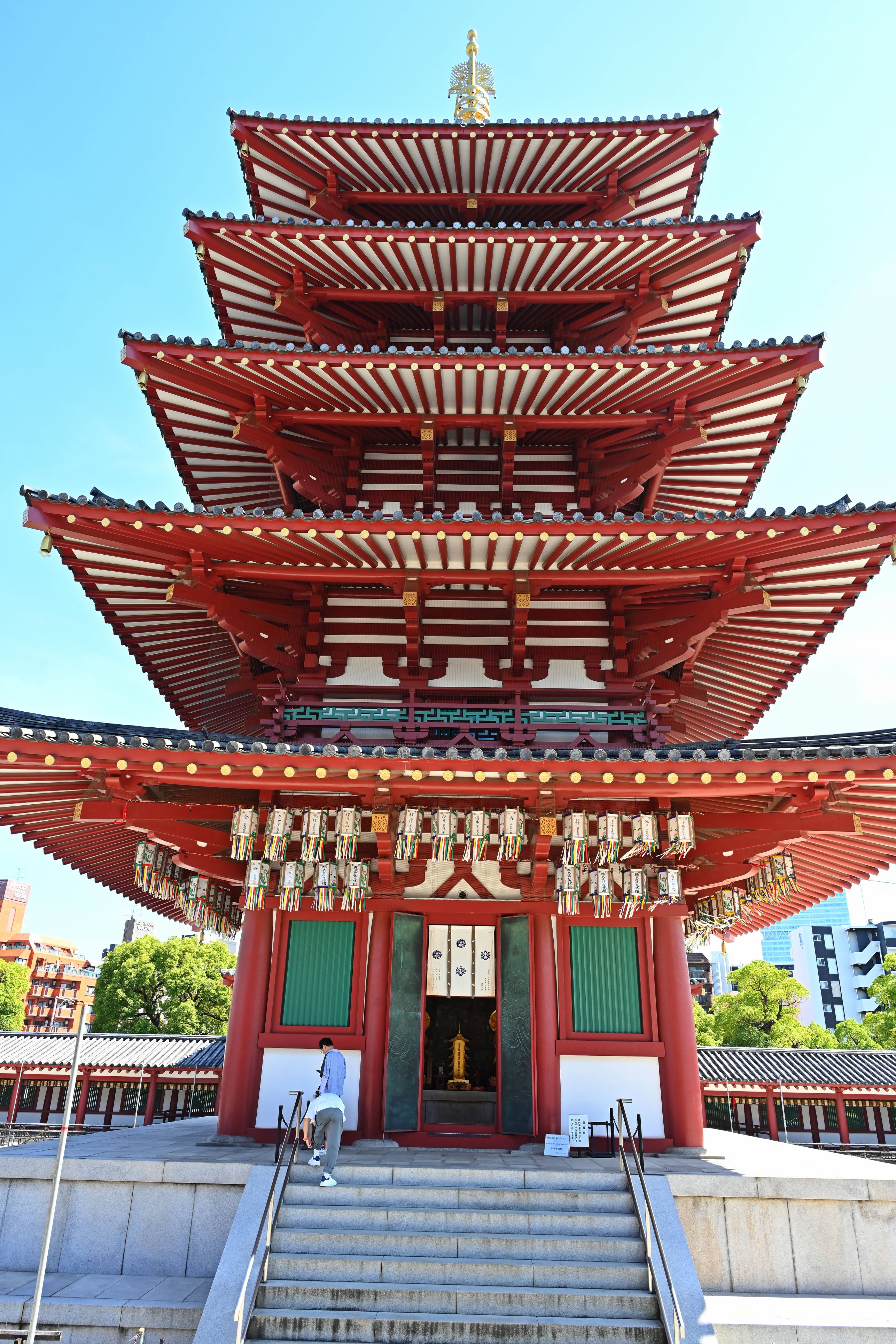
The Five-Storied Pagoda of Buddhist temple Shitennō-ji in Osaka, Japan. The five levels represent the five elements: earth, air, fire, water, and heaven.
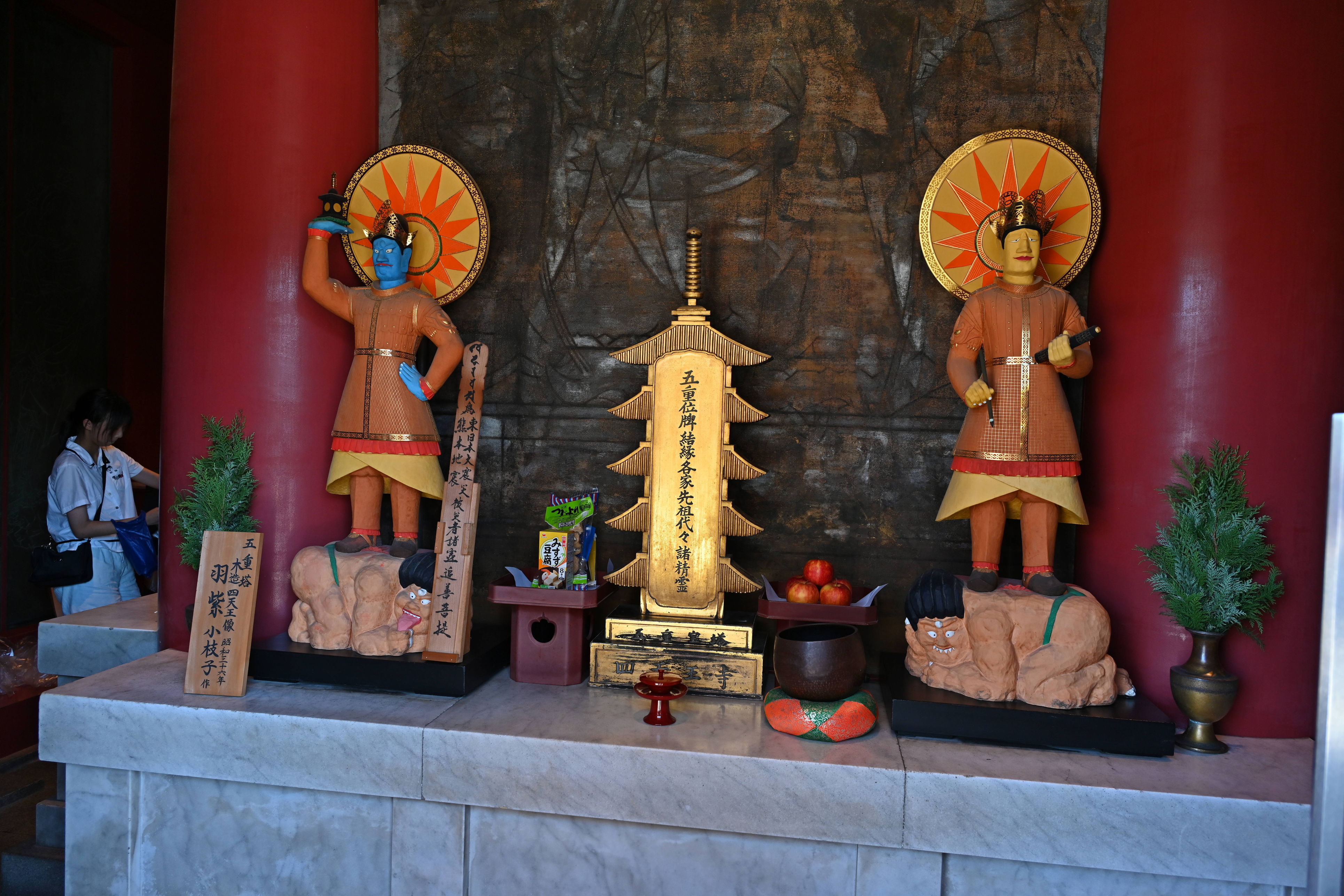
Inside the Five-Storied Pagoda of Buddhist temple Shitennō-ji in Osaka, Japan. The five levels represent the five elements: earth, air, fire, water, and heaven.
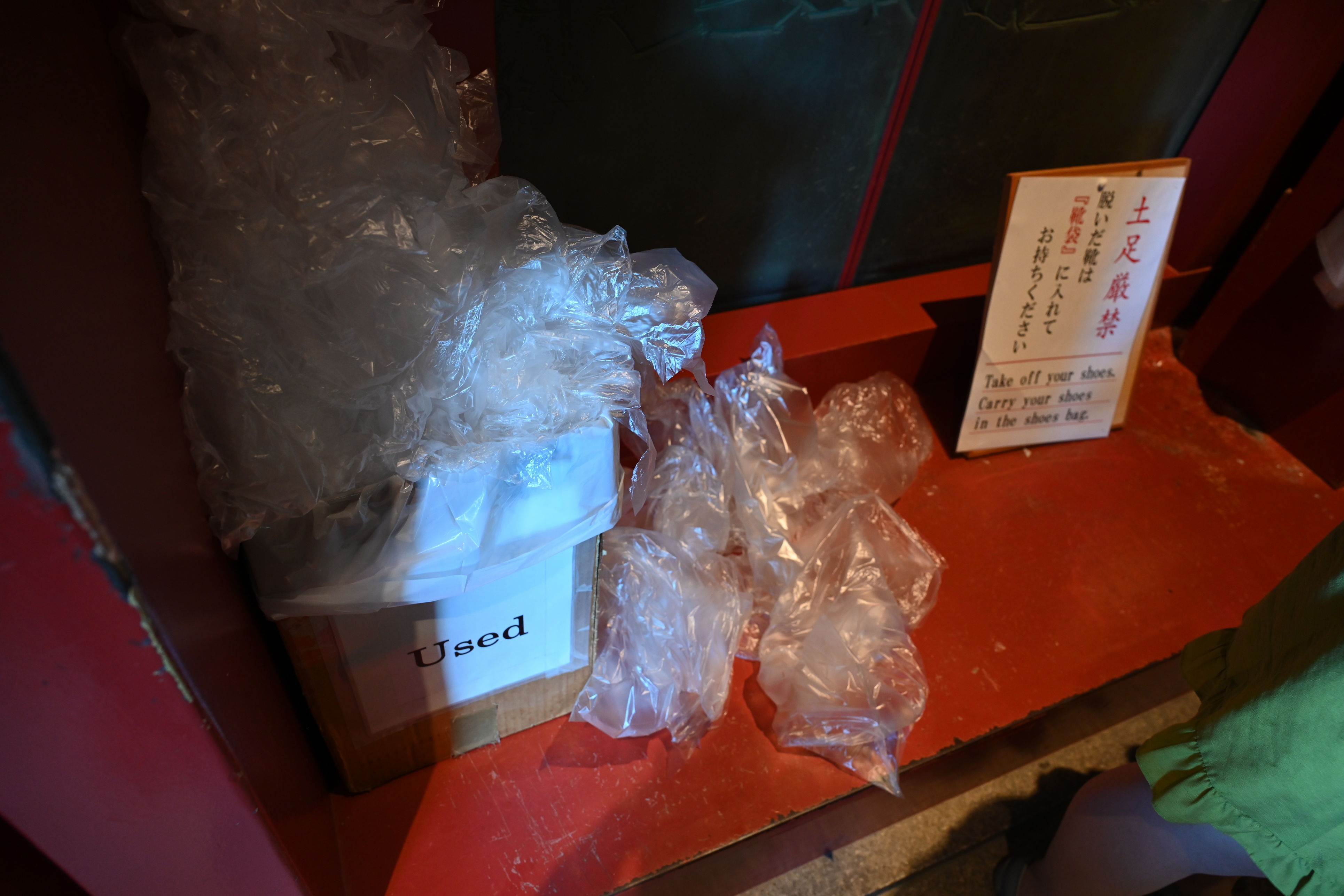
Initially I walked inside the Five-Storied Pagoda and went clockwise, so I missed this sign. Then Patton came in and I said we were supposed to put our shoes in the bag and carry. We saw others walking with the bags on their feet, so that's what we did. But then I checked the sign again and saw we did it wrong. I would have been barefoot, since I was wearing sandals, so I'm not sure what is better. At the Buddhist temple Shitennō-ji in Osaka, Japan.
Then we went into the main hall just across, and the larger lecture hall, which was very nice. They used fog coolers in both, which seemed pretty effective. They must have been 30 degrees F cooler than outside.
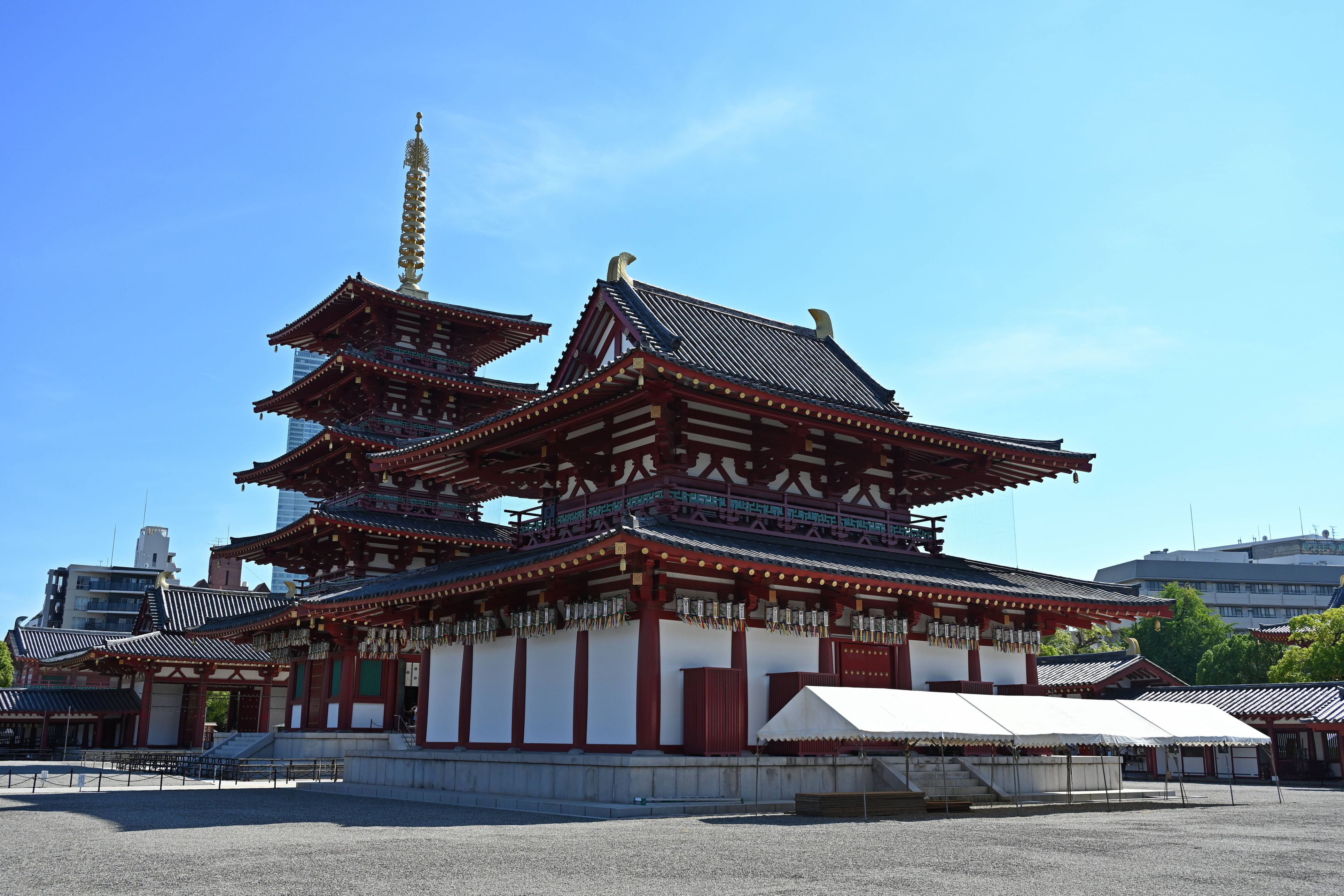
Shitennō-ji Kondo, Golden Hall, with Gojunoto, Five Story Pagoda, in the background. Part of the Buddhist temple complex Shitennō-ji in Osaka, Japan.
Isshin-ji
Next we went to a nearby Buddhist temple called Isshin-ji, founded in 1185. There were interesting Nio guardian sculptures at the Nio-mon Gate entrance.

Buddhist temple Isshin-ji, founded in 1185. The outer parts of this temple are very modern looking, having been designed by the current head priest, who is an architect, after the grounds were bombed in World War II. These are Nio guardians at the entrance.
I didn’t totally understand what I read at the scene, but it seems I read correctly that the grounds contain the ashes of more than a million people. It’s explained more at Isshinji Temple Osaka | Japan Experience:
The reason there are so many visitors here is not because of the history or because of the unusual architecture, but because Isshinji is home to the remains of millions of Osaka residents’ ancestors, specifically something called Okutsu Butsu, which translates as “Bone Buddha”. … By the late 19th century, Isshinji was running out of space to store the urns of ashes brought to the temple and came up with a modern version of Okutsu Butsu.
They combined the ash with a type of resin and the resulting mixture was cast as a statue of Amida. Six statues had been completed by the time of the latter stages of the World War II when the temple was totally destroyed by US aerial bombing. Fragments of the first six were collected and with more ashes the seventh was completed in 1948.
Shinsekai
Then we went nearby to an area called Shinsekai or “new world”, which is home to the retro looking Tsutenkaku Tower.
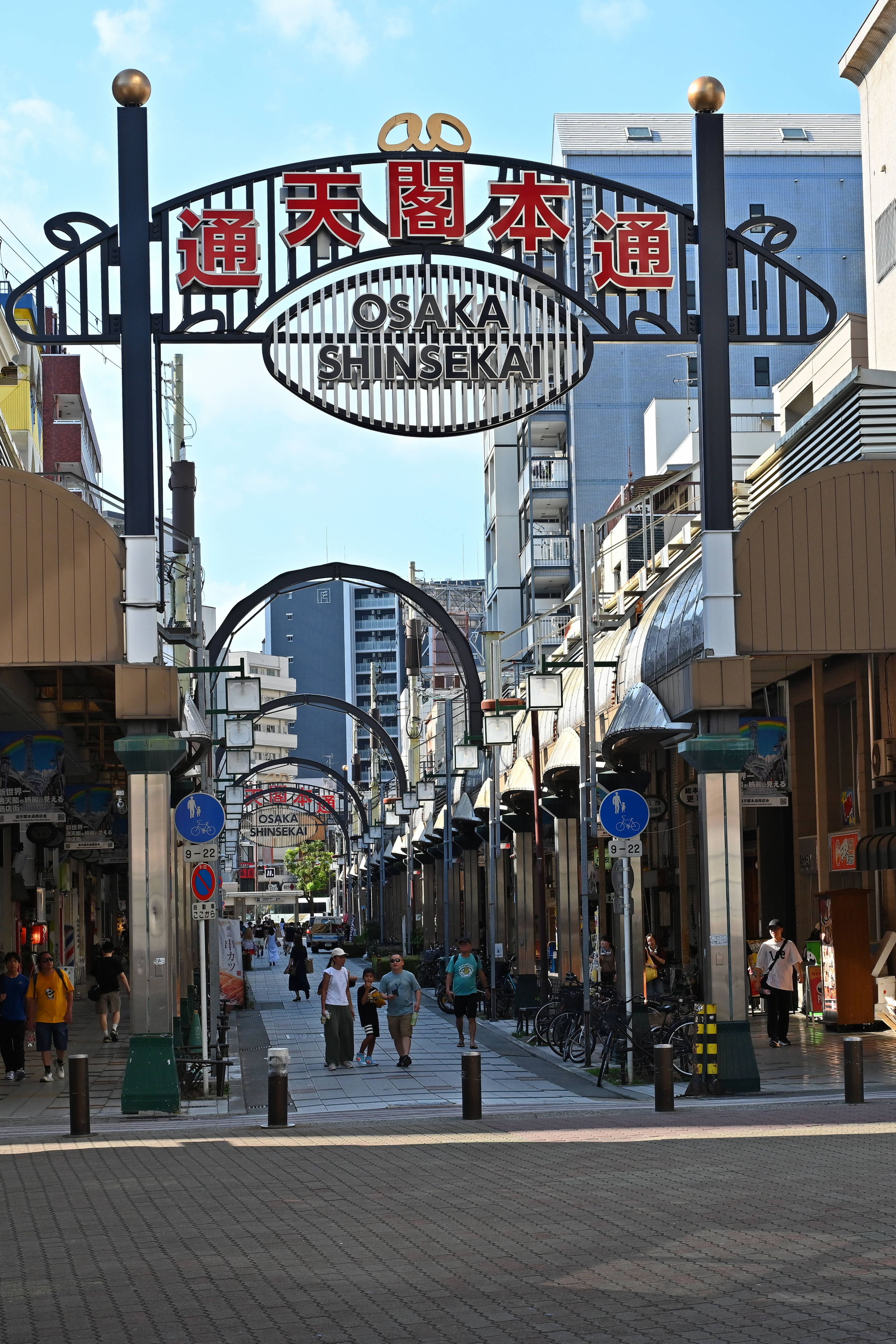
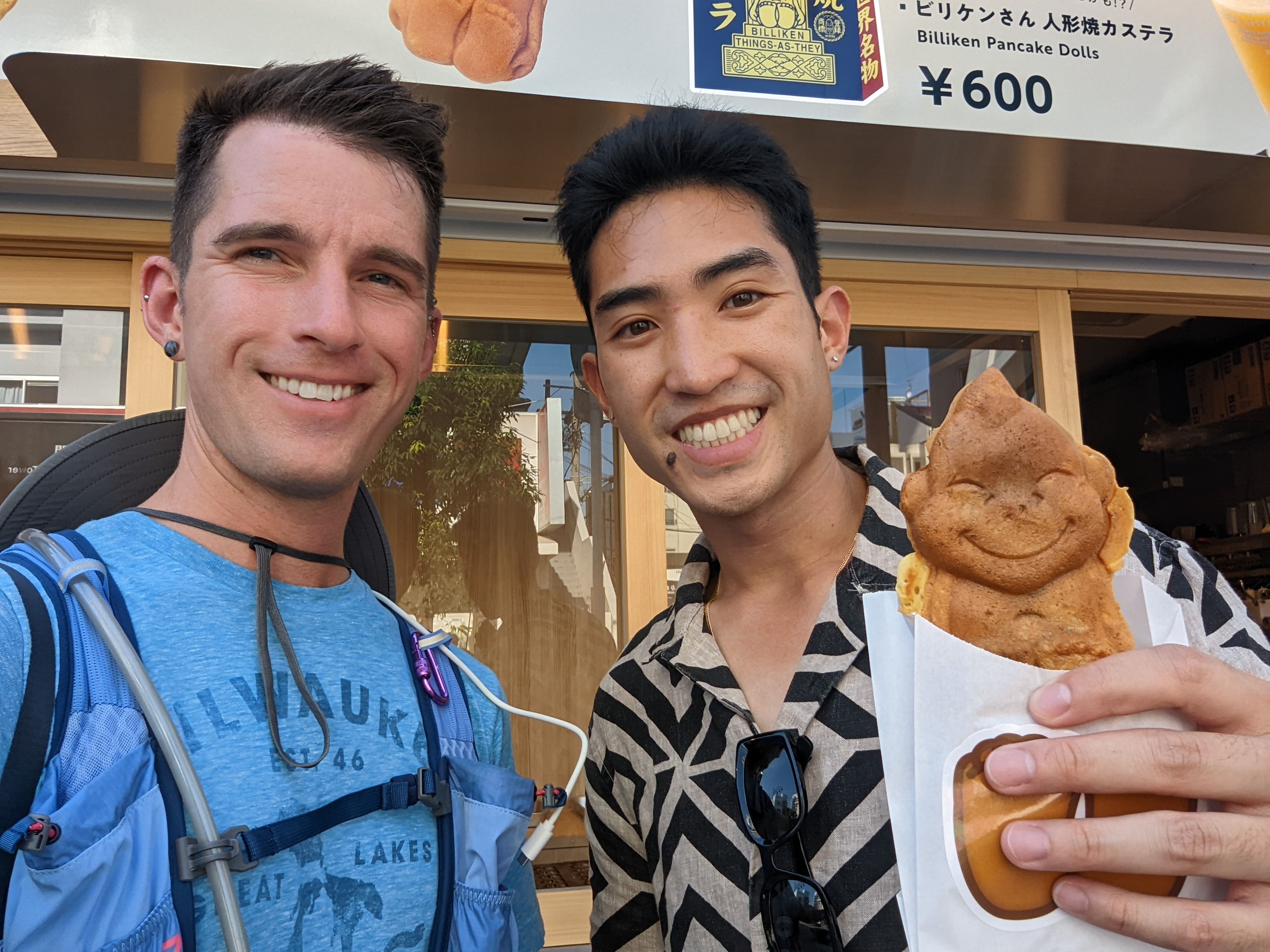
We got a little fried Billiken Pancake Doll while exploring Shinsekai in Osaka, Japan. I wasn't familiar with billiken, but apparently it's a mythical figure representing things as they ought to be. This sort of matches Shinsekai's retro atmosphere.
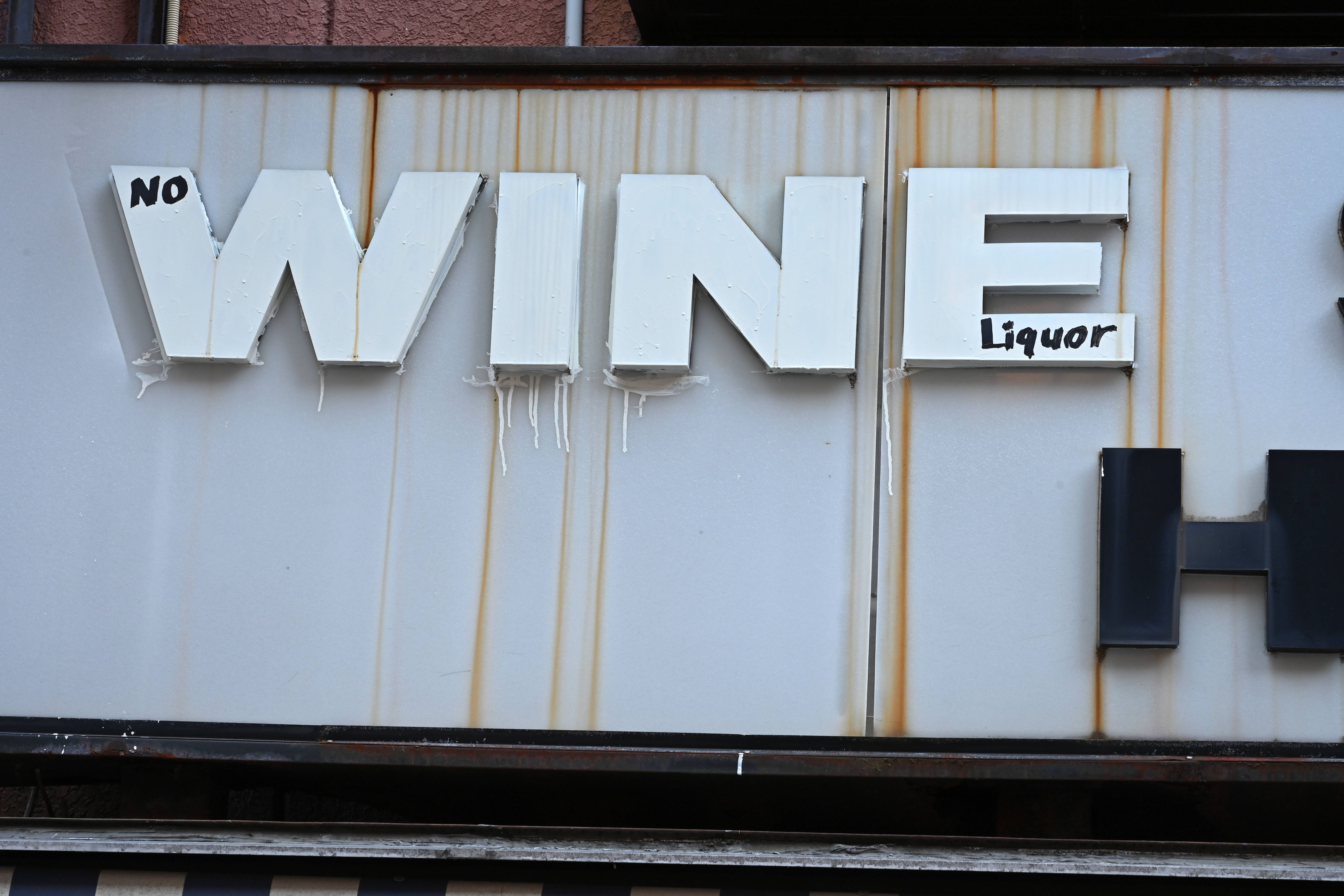
The Wine Shop Handaya has a funny little no liquor message, seen in the Shinsekai area near Tsutenkaku Tower in Osaka, Japan.
Apparently an area specialty is kushikatsu, deep fried skewered meat and vegetables. There were also lots of things on sticks.
As we were walking through, we passed a restaurant Patton immediately recognized from his social media feeds. It was a place where you could go fishing, ジャンボ釣船 つり吉, called something like Jumbo Fishing Boat Tsurikichi. The concept was pretty cool, so we decided to try it out and ask to be seated.
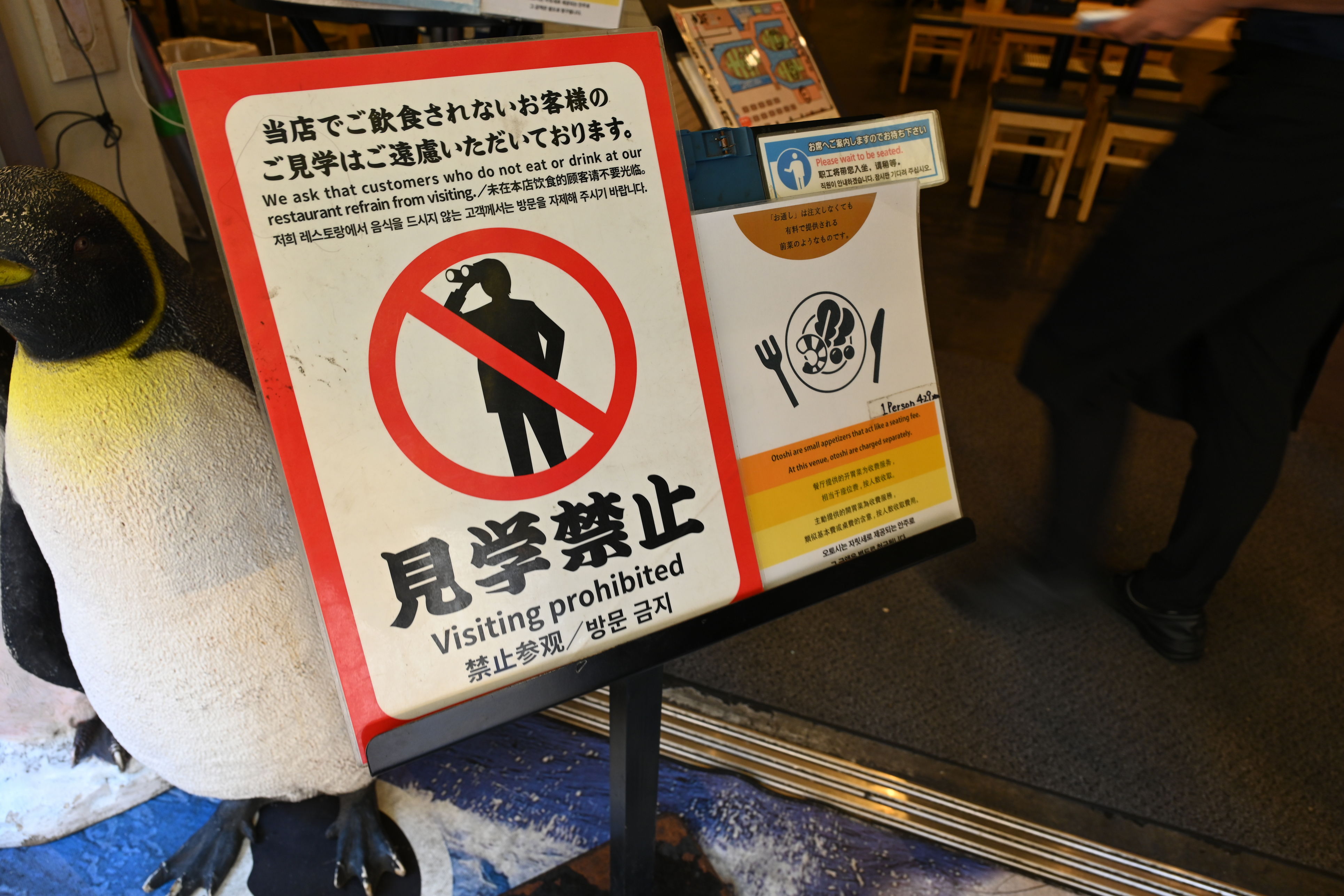
We happened upon a restaurant Patton recognized from social media where you can catch your own fish to eat, called ジャンボ釣船 つり吉 or something like Jumbo Fishing Boat Tsurikichi, in Osaka, Japan.
The directions were a little confusing despite being in English. They had two different options for fishing, a pole with bait and a different colored pole without bait but with more hooks. It was unclear how we go about asking for the bait, or if we were supposed to use whatever poles were lying around. It was also unclear if certain poles were for certain types of fish. It seemed like the customers didn’t know what they were doing either, though they were mostly children. They seemed to just take the poles, with or without bait, and whip them through the water trying to snag a fish on the side of its body. This is not exactly how I wanted to catch a fish, but I definitely didn’t have any luck catching on without bait. The fish knew what people were trying to do, so it was not a very good setup. We eventually relented and went back to the table to order something off the menu. It was still an interesting experience, and cooking the fish at our table worked well and it tasted good.
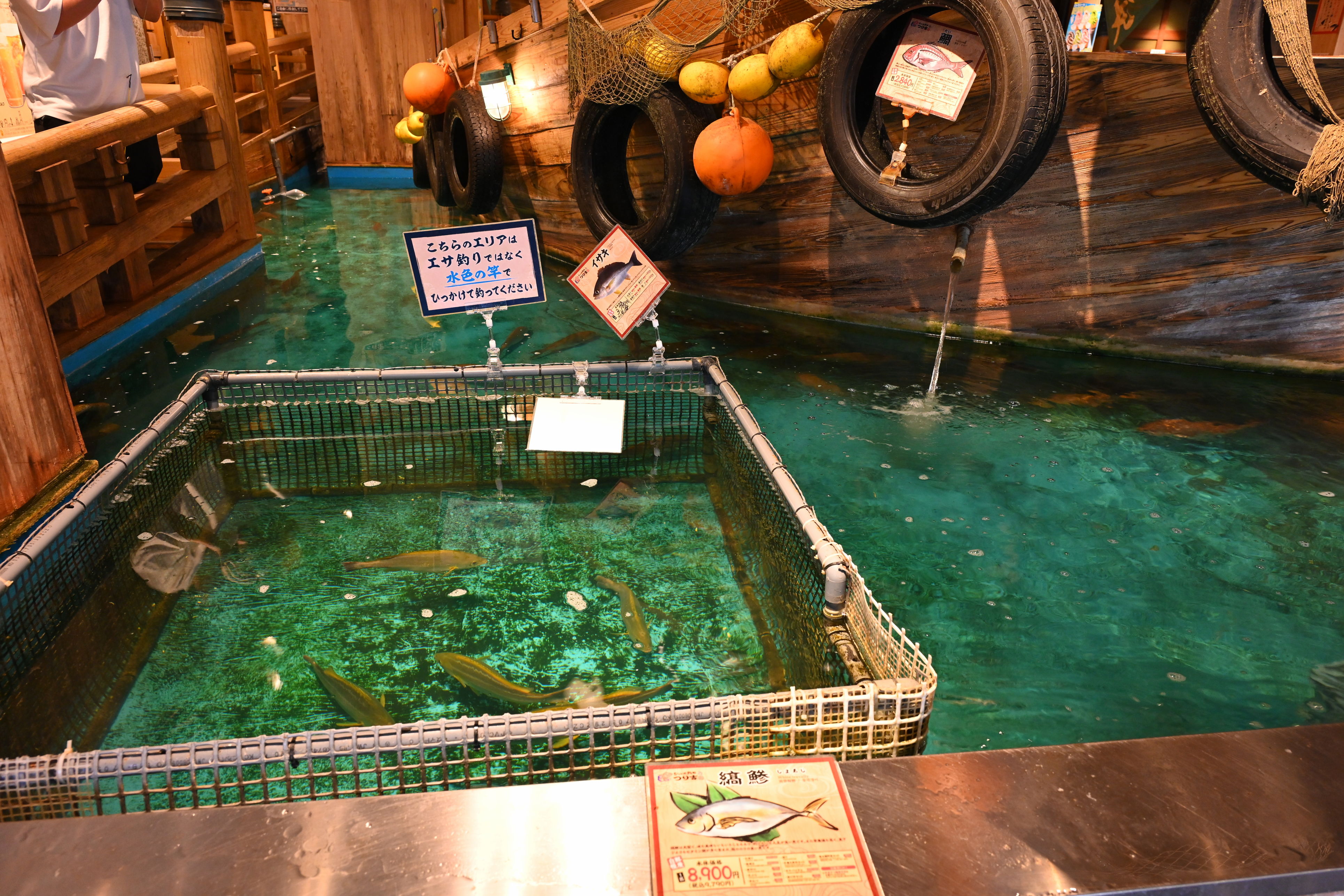
We happened upon a restaurant Patton recognized from social media where you can catch your own fish to eat, called ジャンボ釣船 つり吉 or something like Jumbo Fishing Boat Tsurikichi, in Osaka, Japan.
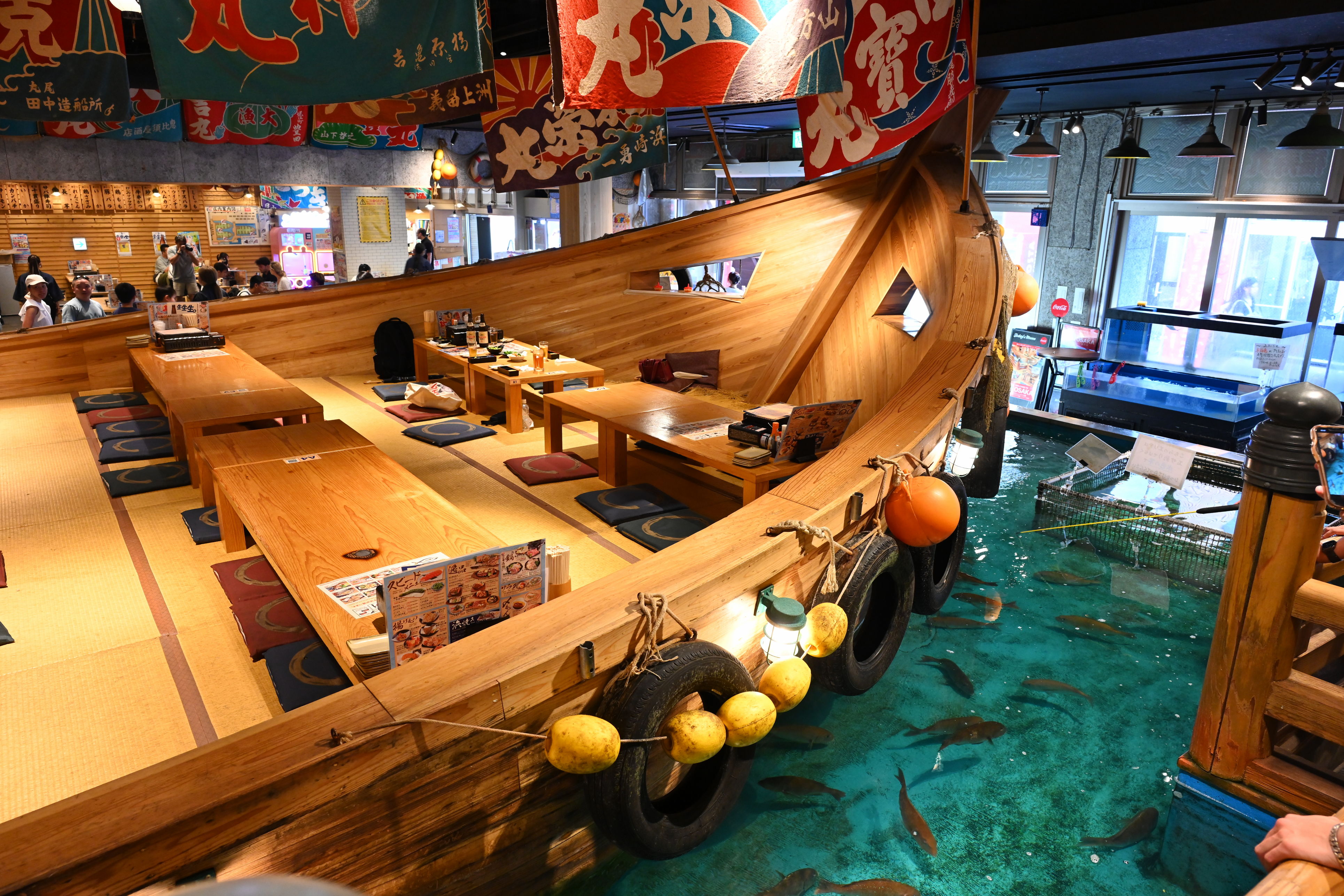
We happened upon a restaurant Patton recognized from social media where you can catch your own fish to eat, called ジャンボ釣船 つり吉 or something like Jumbo Fishing Boat Tsurikichi, in Osaka, Japan.
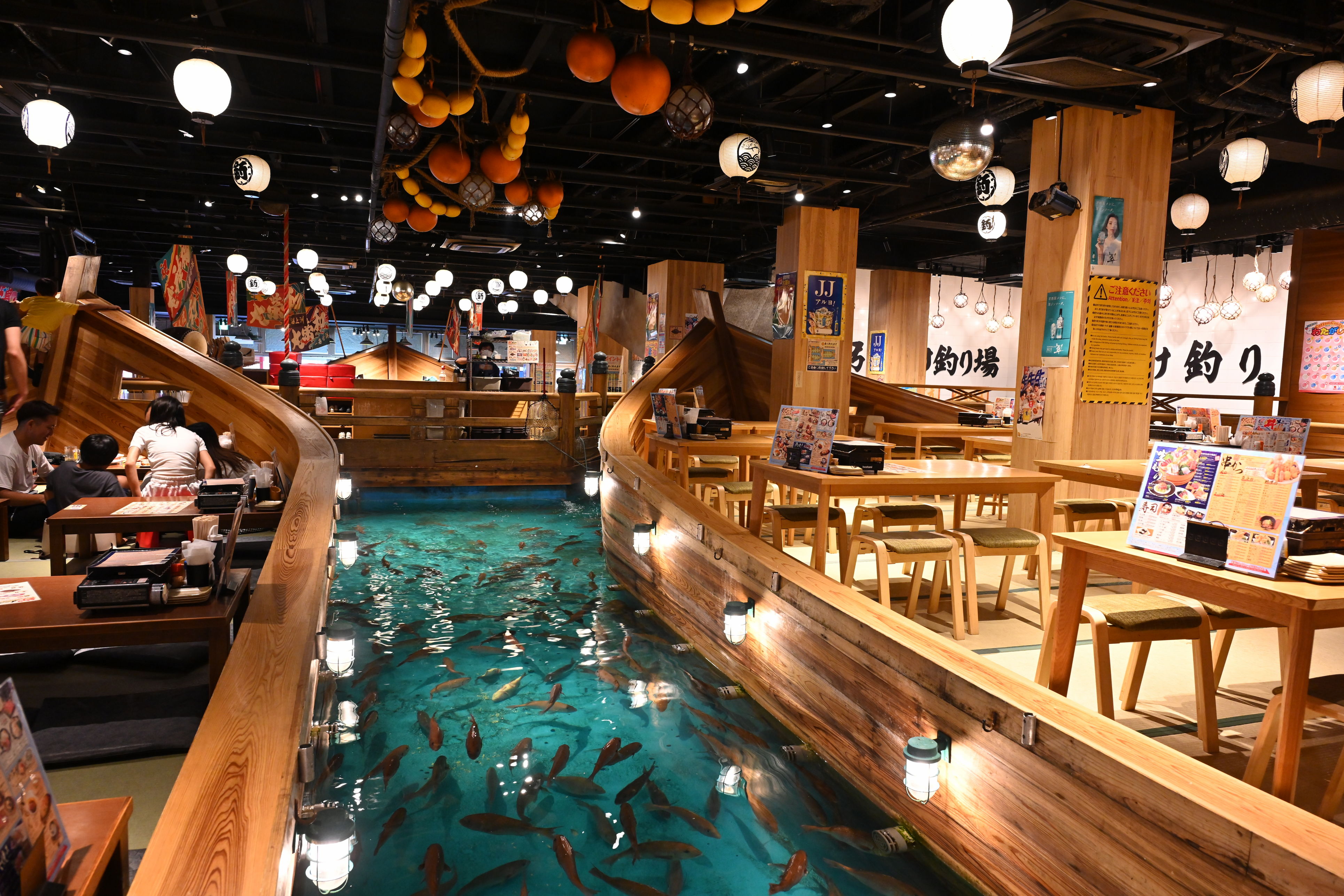
We happened upon a restaurant Patton recognized from social media where you can catch your own fish to eat, called ジャンボ釣船 つり吉 or something like Jumbo Fishing Boat Tsurikichi, in Osaka, Japan.
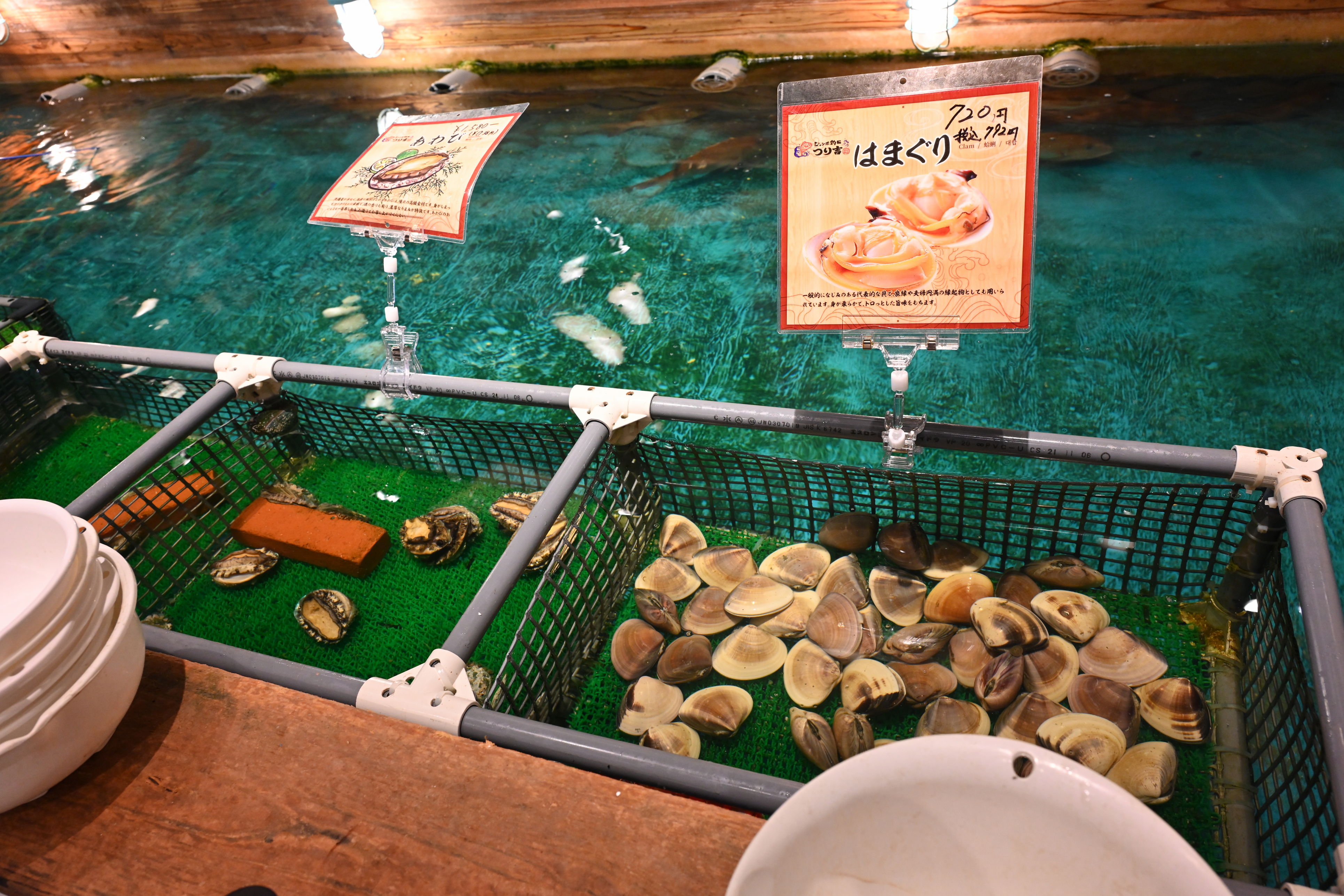
We happened upon a restaurant Patton recognized from social media where you can catch your own fish to eat, called ジャンボ釣船 つり吉 or something like Jumbo Fishing Boat Tsurikichi, in Osaka, Japan.
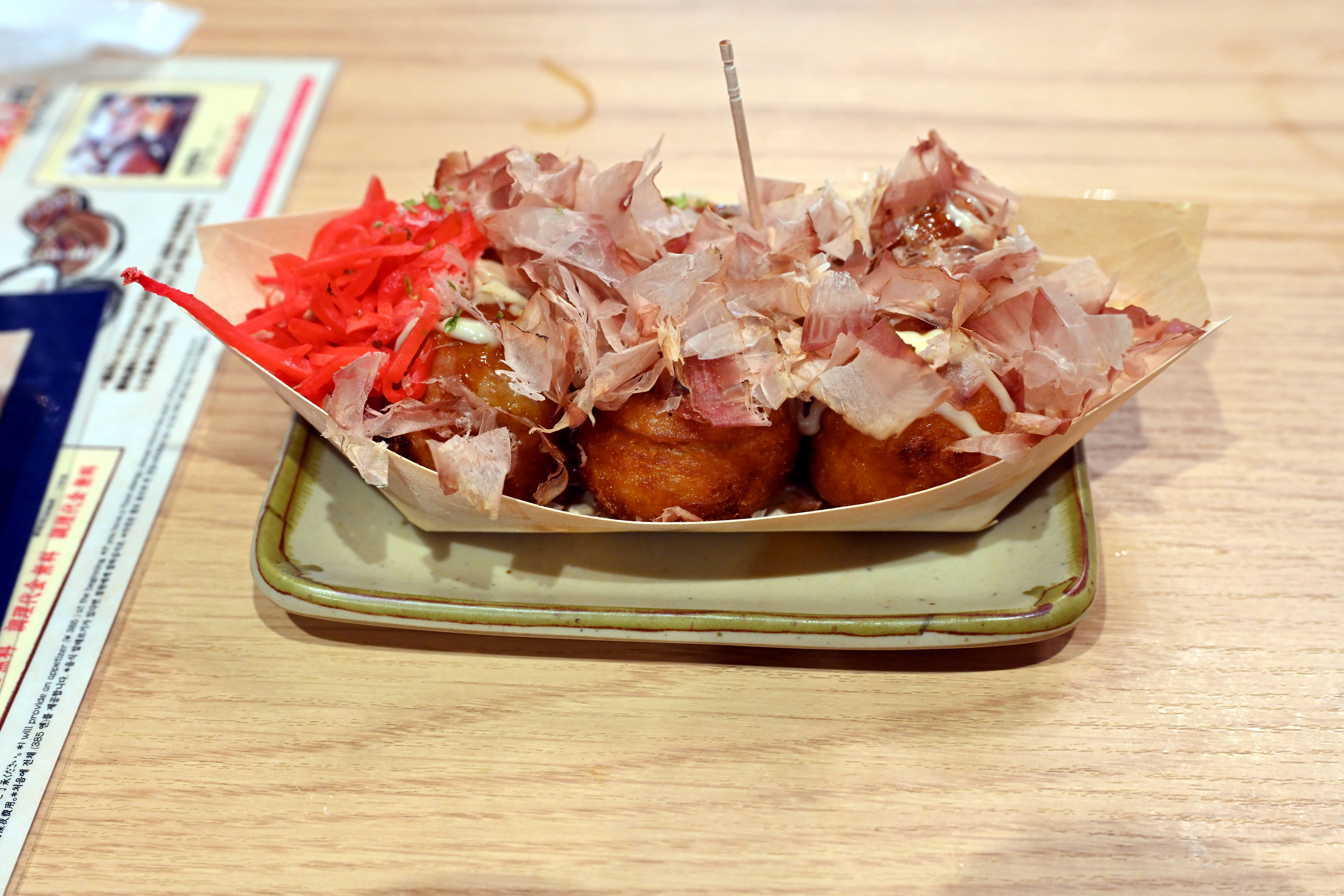
We happened upon a restaurant Patton recognized from social media where you can catch your own fish to eat, called ジャンボ釣船 つり吉 or something like Jumbo Fishing Boat Tsurikichi, in Osaka, Japan.
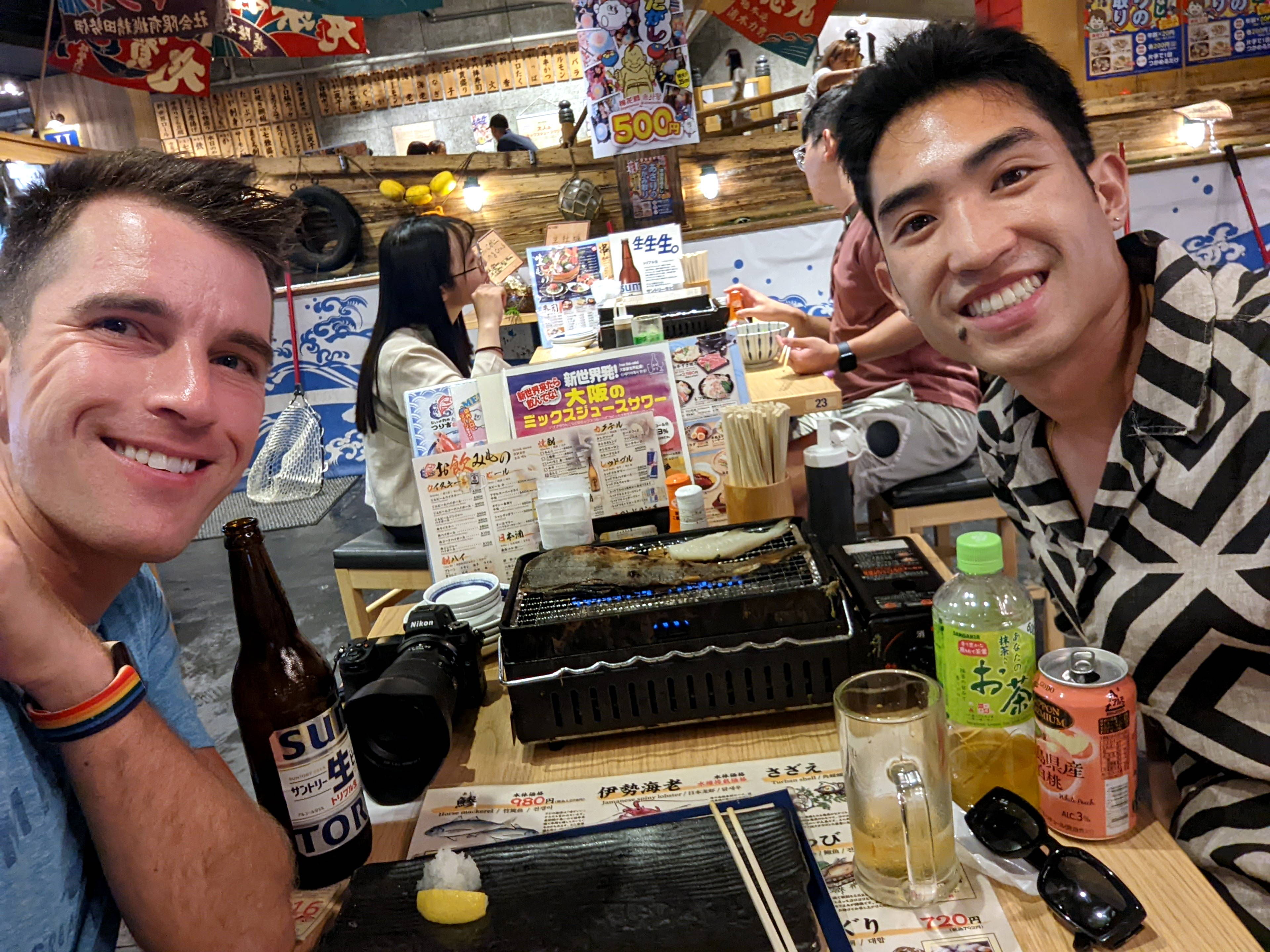
We happened upon a restaurant Patton recognized from social media where you can catch your own fish to eat, called ジャンボ釣船 つり吉 or something like Jumbo Fishing Boat Tsurikichi, in Osaka, Japan.
We walked around the area a bit more before heading north.
Kita district, Osaka
Next we went to Umeda to go see a taller observation deck. But we found another Uniqlo first. I don’t think I wrote about this much yet, but Patton was seeking certain tank tops and other specific things that Uniqlo apparently makes, because they should be cheaper in Japan. But they don’t seem to be to the taste of the locals, particularly tank tops, because almost none of the stores we visited had any.
And then there is the phenomenon that’s different since I visited Japan last a decade ago: tax free in shop. It used to be that you could save your receipts for certain merchandise you were exporting and get a refund on the taxes at the airport. This would involve waiting in a long line one time. Well, now Japan lets the stores omit the taxes from the get go, as long as you wait in a long line each time so they can process your passport first. I’m not sure if it’s a better system, but it definitely results in each retailer having to dedicate a large area and a lot of signage to processing foreigners. It seems very strange to me.
Then we finally went to the Umeda Sky Building. We paid admission and went up, spending probably 45 minutes on what we thought was the observation deck. I was a little annoyed they didn’t turn the lights down lower for people trying to see the city at night. But the decor was nice, and they had a cafe.
We were about to leave when we noticed a sign to an escalator that went up. So we checked this out and discovered, actually, the observation deck was outdoors, in the dark, with views unobstructed by glass. We almost totally missed it!
Though, it turned out photography was actually a bit better on the lower indoor floor, as I had nowhere to rest the camera to take a longer exposure upstairs. The railings were not near the edge of the building, which was square, despite the circular area for guests. So it was not ideal for photos, but still a pretty cool environment.
Then we went to “the gay area”. We checked out a gay secondhand store called チュウコヤ 梅田店 or Chuukoya Umeda. It was a bit hard to find, being in a basement level nondescript building. I had to rely on my kana knowledge to read the store name on a big sign saying what’s in the building. Note chuukoya or 中古屋 is just a generic name for a second hand shop, but this one was gay and sex themed. Patton didn’t get anything but I bought two shirts, one of which was a bit small for me.
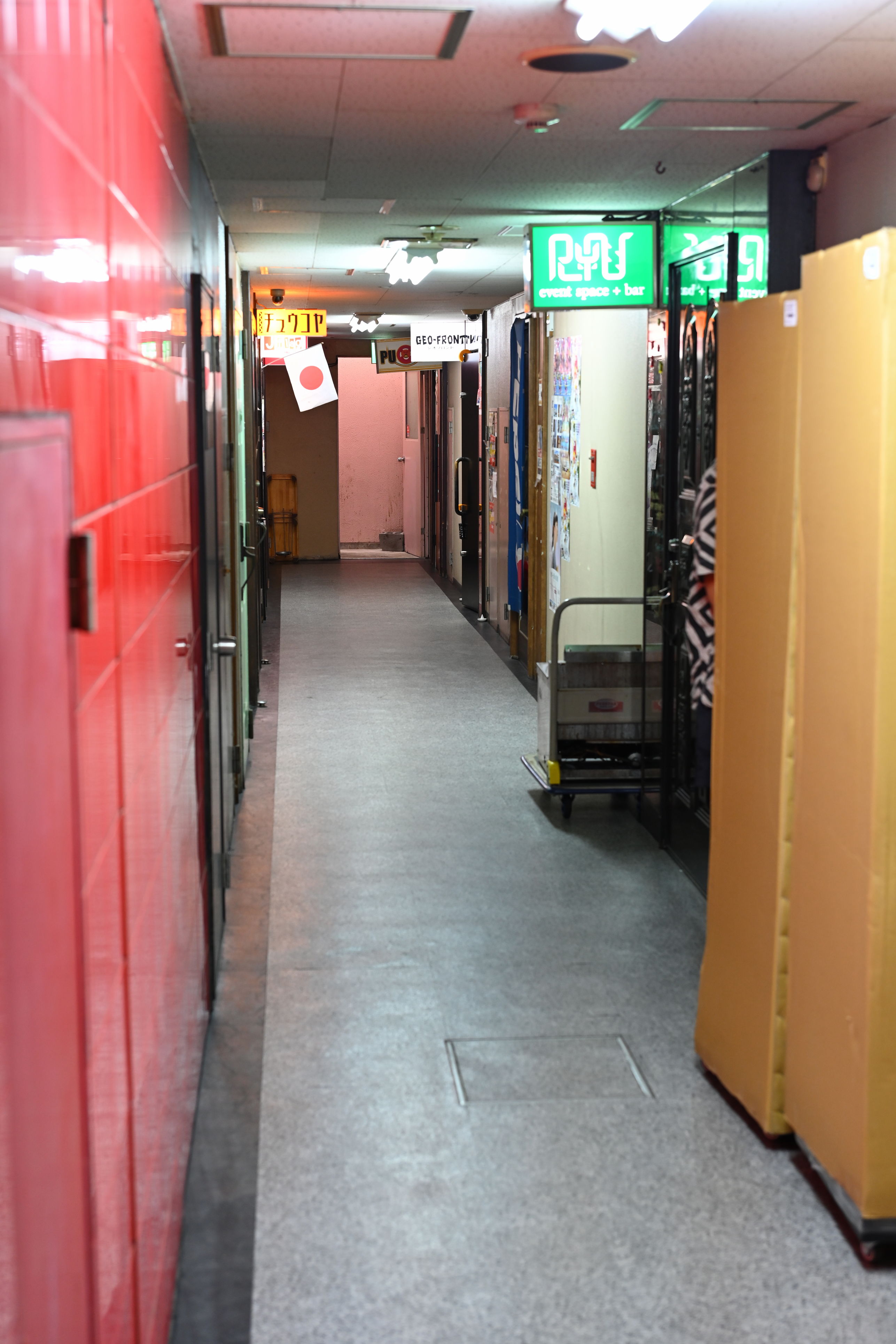
We checked out a gay secondhand store called チュウコヤ 梅田店 or Chuukoya Umeda. Note chuukoya or 中古屋 is just a generic name for a second hand shop, but this one was gay and sex themed. Patton didn't get anything but I bought two shirts, one of which was a bit small for me.
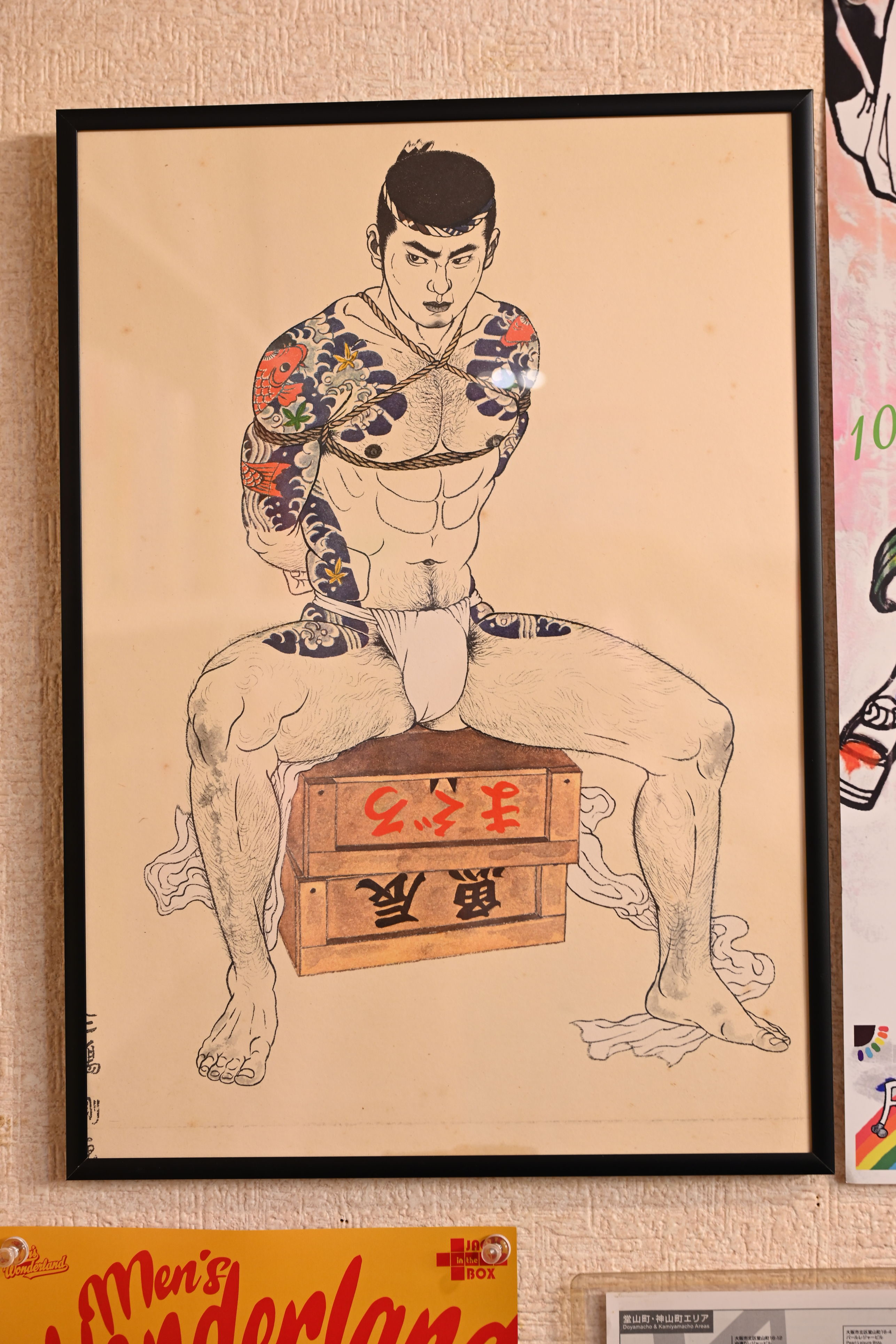
We checked out a gay secondhand store called チュウコヤ 梅田店 or Chuukoya Umeda. Note chuukoya or 中古屋 is just a generic name for a second hand shop, but this one was gay and sex themed. Patton didn't get anything but I bought two shirts, one of which was a bit small for me.
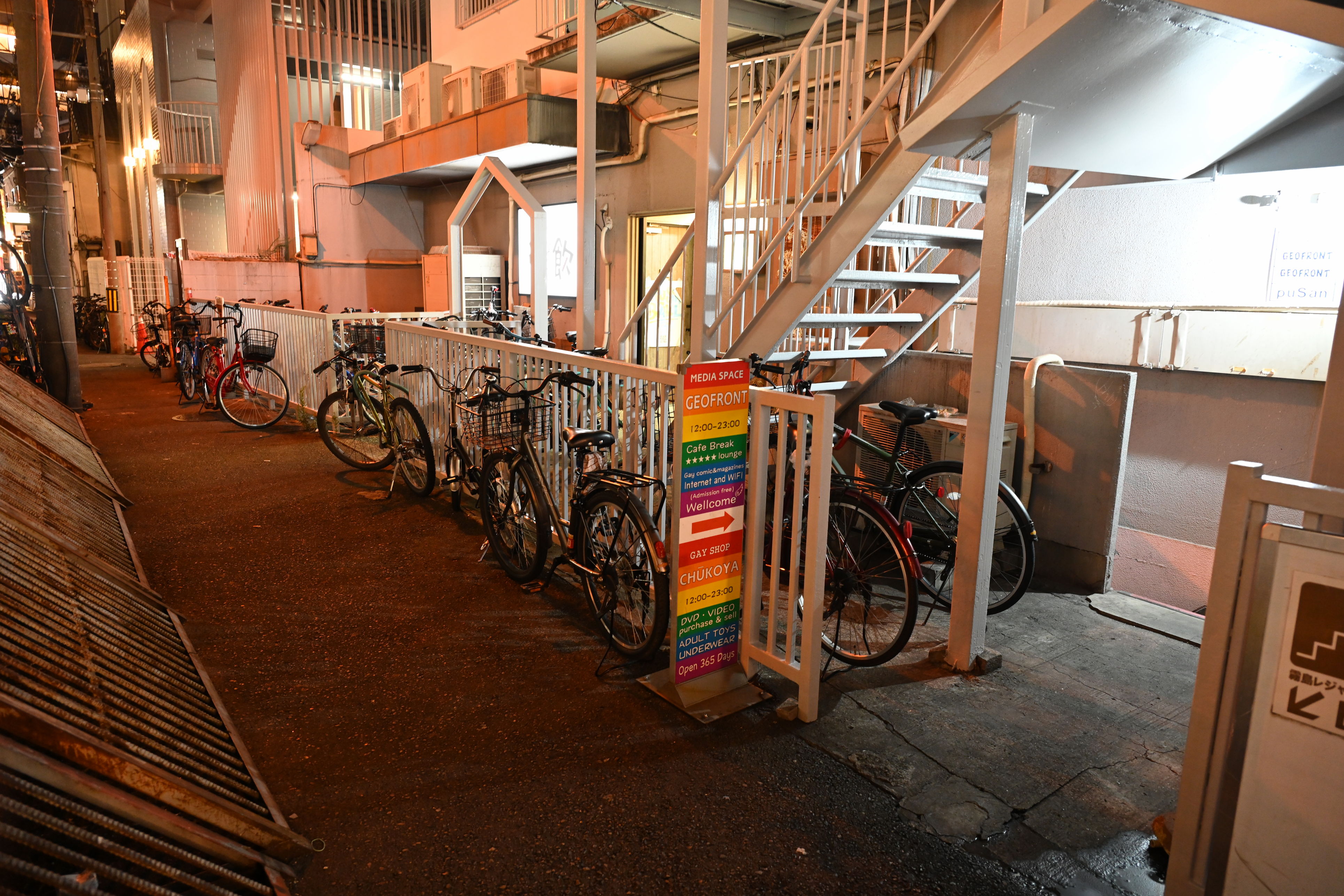
The signage on this side was a lot more obvious it was a gay shop, but we didn't come in this side. Osaka, Japan.
Before going to bars, we got dinner at a conveyor sushi place called 回転すし さかえ 阪急東通り店. It was good and cheap, just what we wanted! I did end up spilling a bunch of water and then using the shirts I just bought to wipe it up. That was fun.
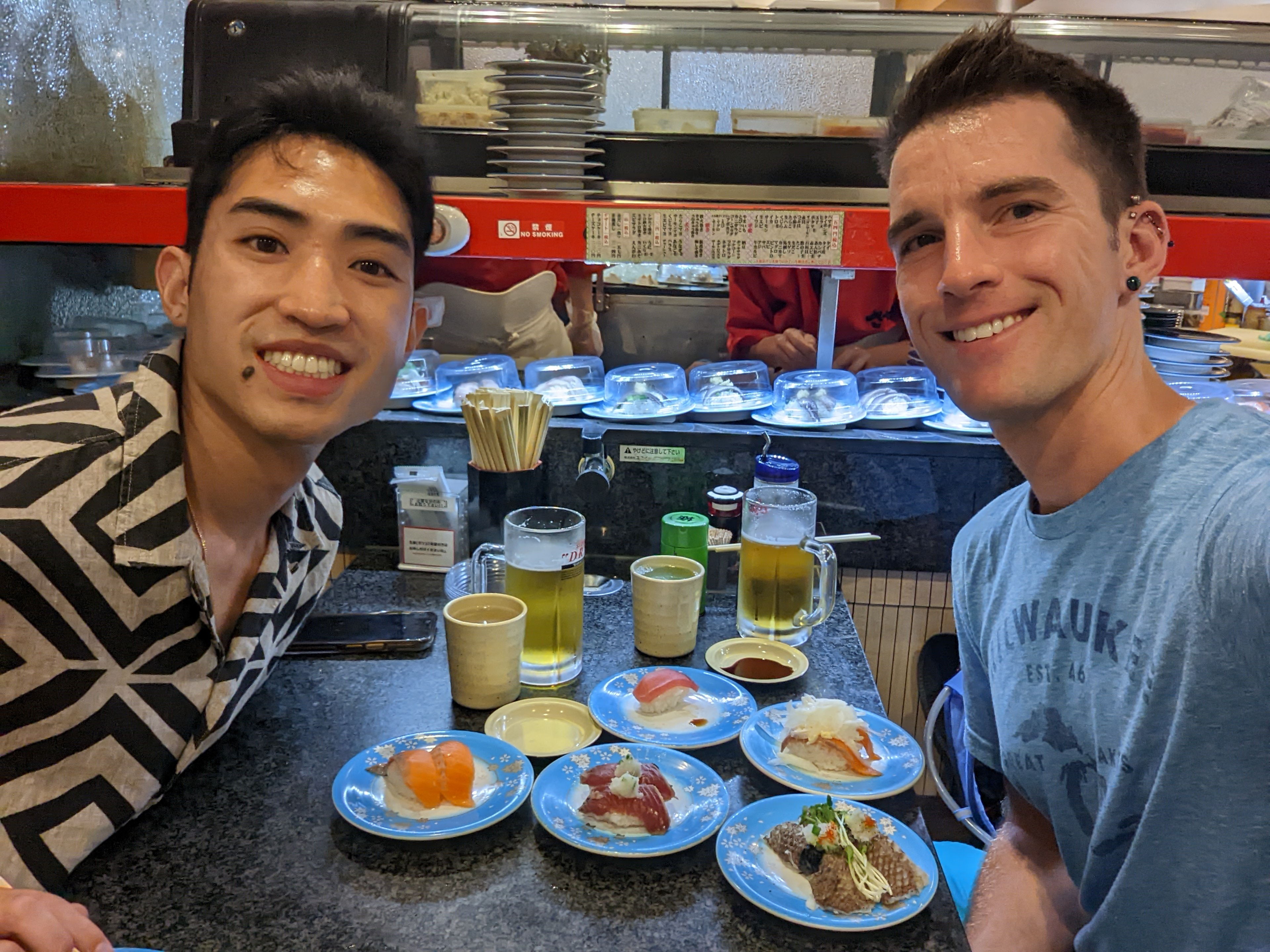
Before checking out the Osaka gay bars, we ate at a conveyor belt sushi place called 回転すし さかえ 阪急東通り店.
We went to two gay bars. First we checked out Eagle Osaka. This is an Osaka branch of a bar that’s also in Nichome in Tokyo. It was nice, and there was a group of about 5 Japanese guys there when we arrived. They were loud but kept to themselves at first, and then migrated to the bar and talked a bunch with the bartenders, whom they seemed to know. They only spoke Japanese. Then a bigger white guy came in and sat on the corner opposite us. He drank one drink, the group left, and then he left, so Patton and I did too after taking a couple of pictures.
We looked up more bars online and settled on trying a place called Frenz Frenzy. I was a bit intimidated when we got to the door. It was clearly a gay bar, but I could hear the people inside were loud! I didn’t know how big the space was, but it sounded like a large group of people inside. I took a photo of the door, held my breath, and we headed in!
Well, I could see right away the place was not large. But the people immediately welcomed us, including the bartender. He warned us it would be loud and people were singing karaoke, but told us to get settled on the other side. It felt very nice right away.
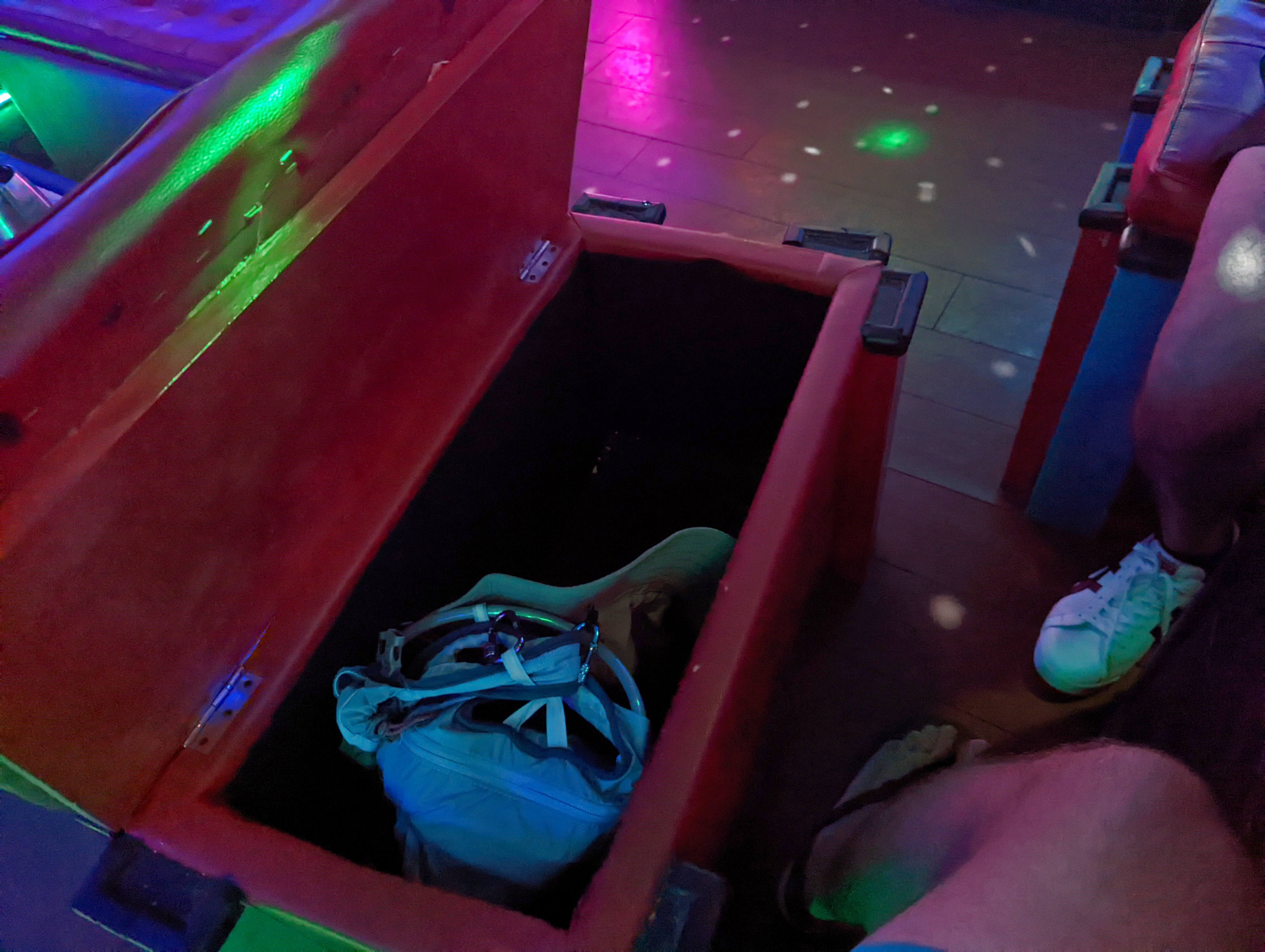
Pretty useful seats that serve as storage compartments for bags, at Frenz Frenzy, a gay bar in Osaka, Japan.
The bartender talked to us about where we were from, and introduced us to everyone else at the bar. He wanted to make sure everyone knew each other and got along. That was super cool. It turned out he owned the joint, having opened it around 20 years earlier after moving to Japan a decade before that. And it wasn’t long before Patton was singing a Lady Gaga song with the others and made me talk to a new friend from Korea named Won, whom I was shortly having a huge drink with.
Eventually I had to pee, and found the toilet room to be pretty entertaining!
Anyway, it was a great end to our first night in Osaka. Though I may have drank just a little too much!
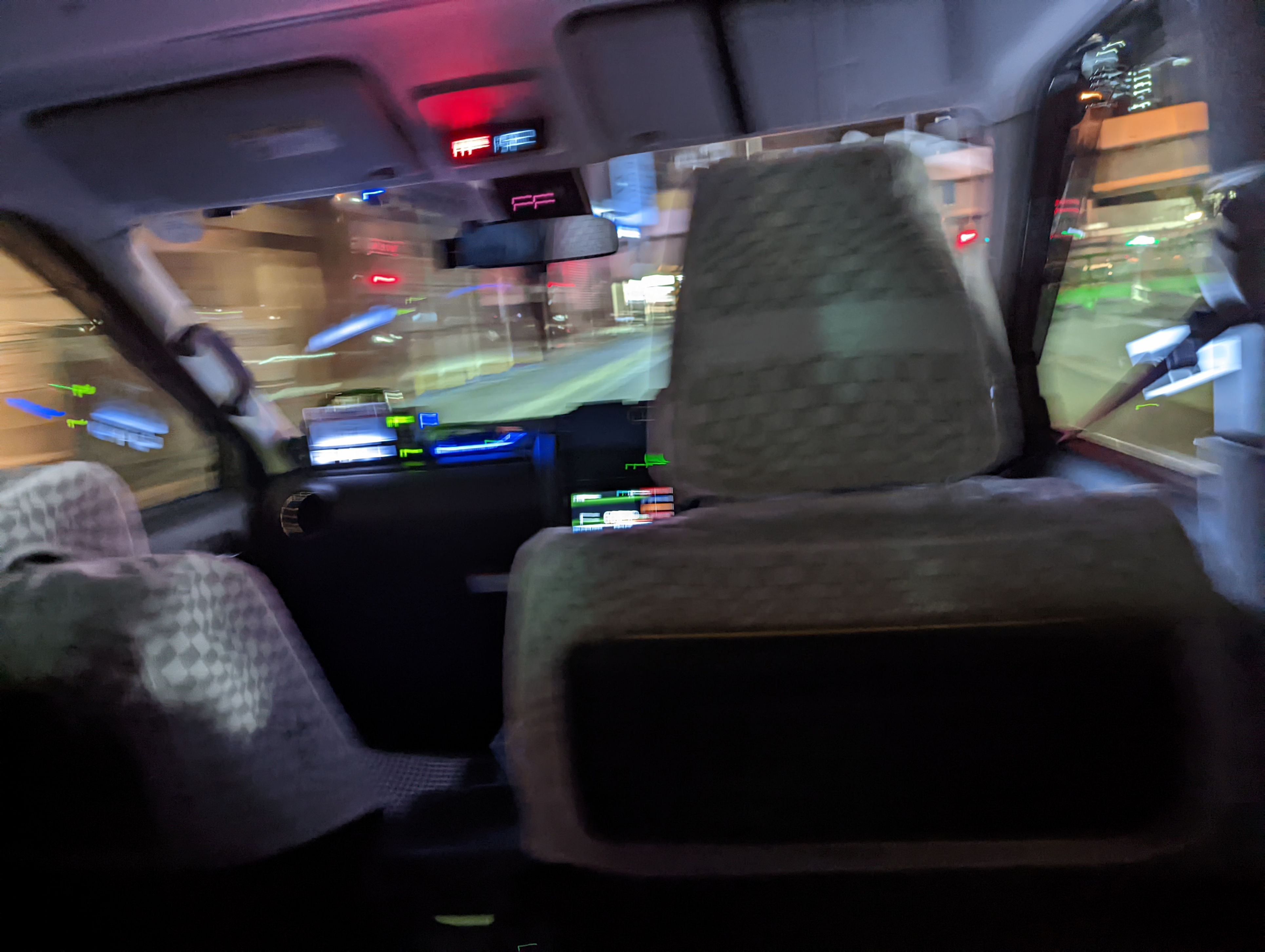
A bit of tipsiness reflected in the photo, it seems, on our way to the APA Hotel in Kita Ward of Osaka, Japan.
Next up: Running around Osaka, Kobe, leaving Japan.
Entries in this series
- Japan reunions, hedgehogs, my first capsule hotel (July 22-24)
- Kyoto: Gion festival and a hillside run (July 24-25)
- Exploring Tenjin Matsuri in Osaka (July 25)
- View from Daihikaku Senkōji Temple, and Arashiyama Bamboo Grove (July 26)
- Deers of Nara, then Uji and Fushimi Inari (July 27)
- A walk from Kyoto to Lake Biwa (July 28)
- Touring Osaka Castle, Umeda Sky Building, Osaka gay bars (July 29)
- Running around Osaka, Kobe, leaving Japan (July 30-31)
- Another delightful but very short Japan excursion (August 14)

